Krishna Balakrishnan Shanthi is a designer, artist, curator and lecturer based in London UK. (more...)




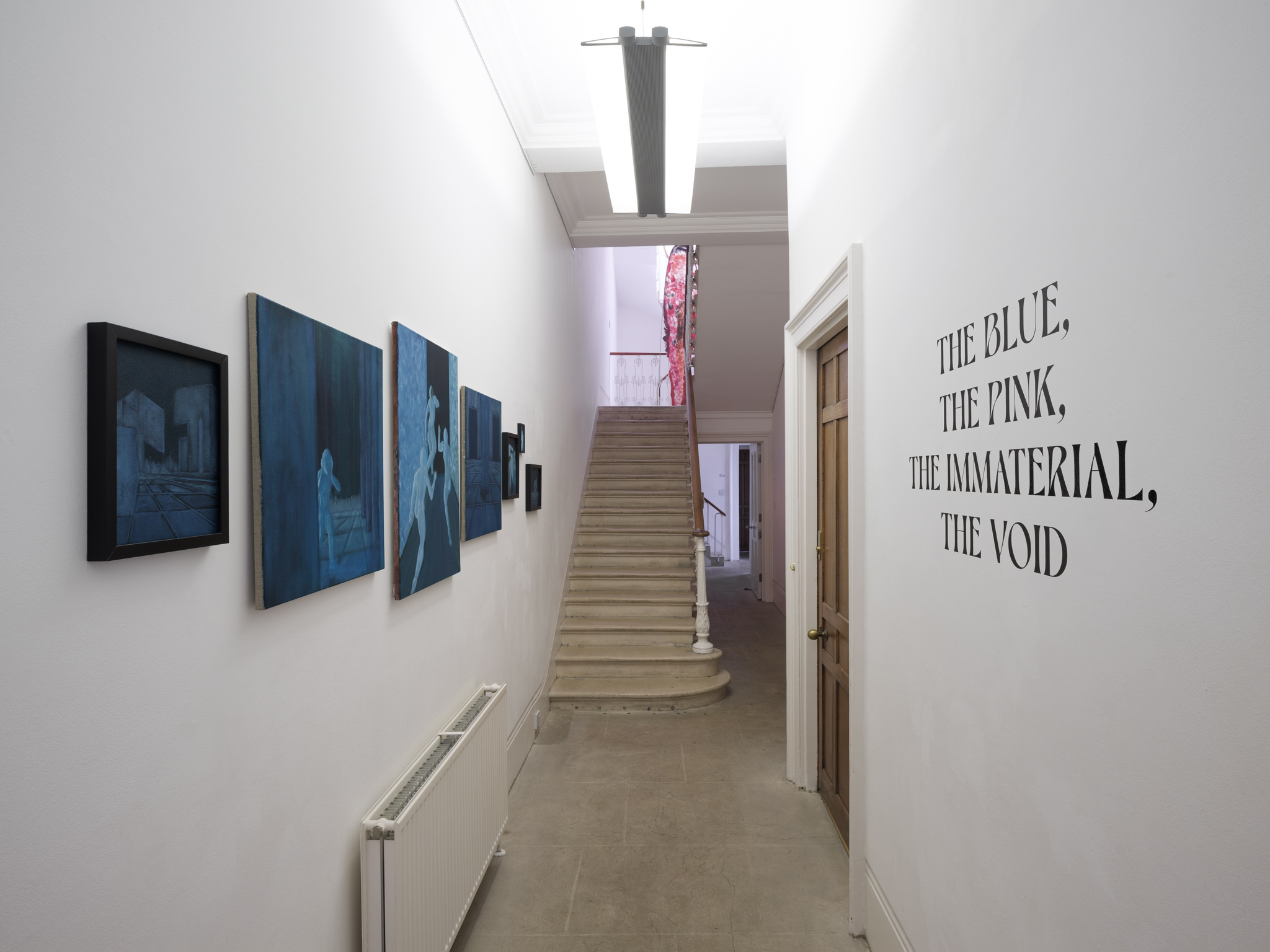



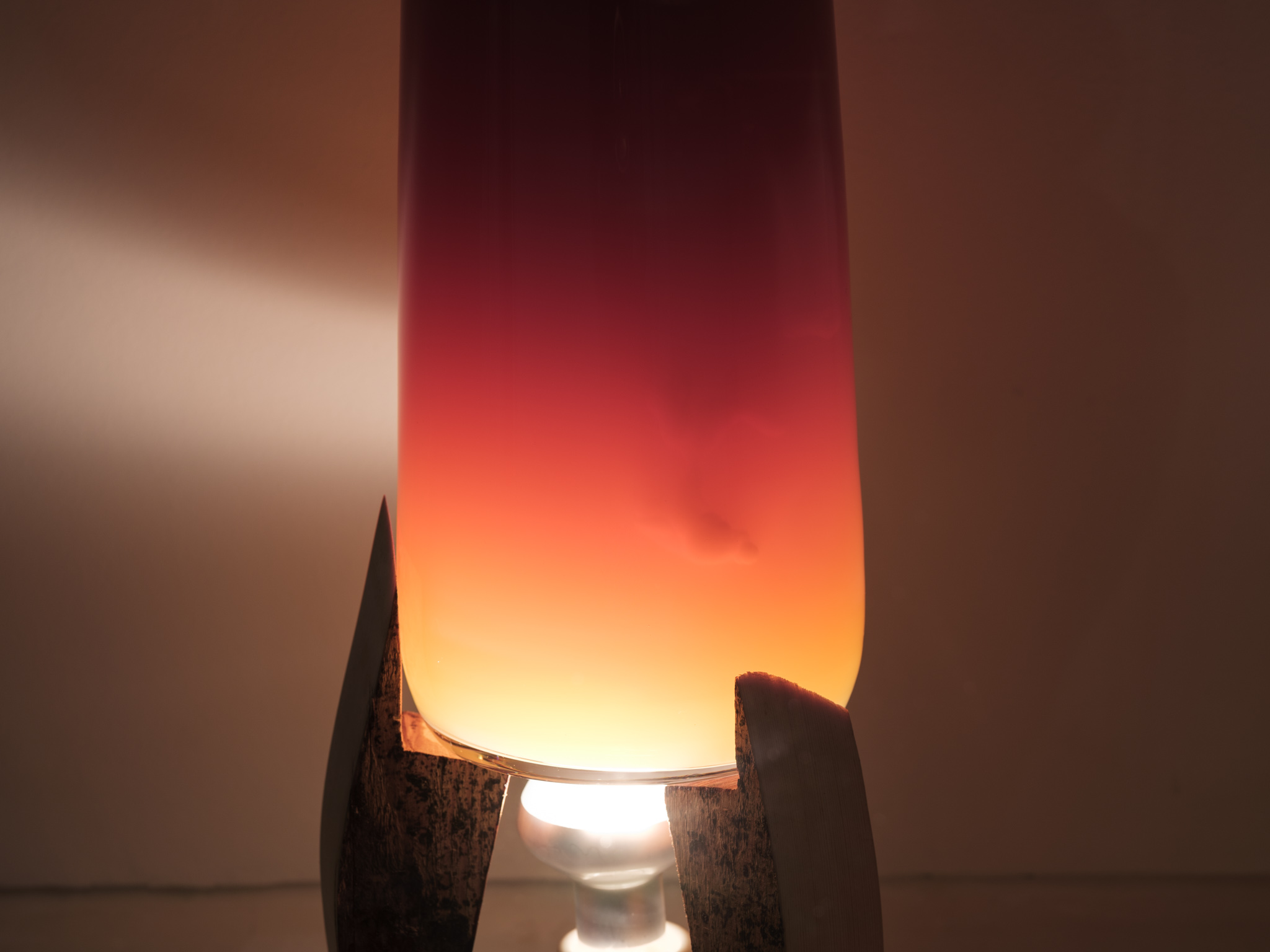
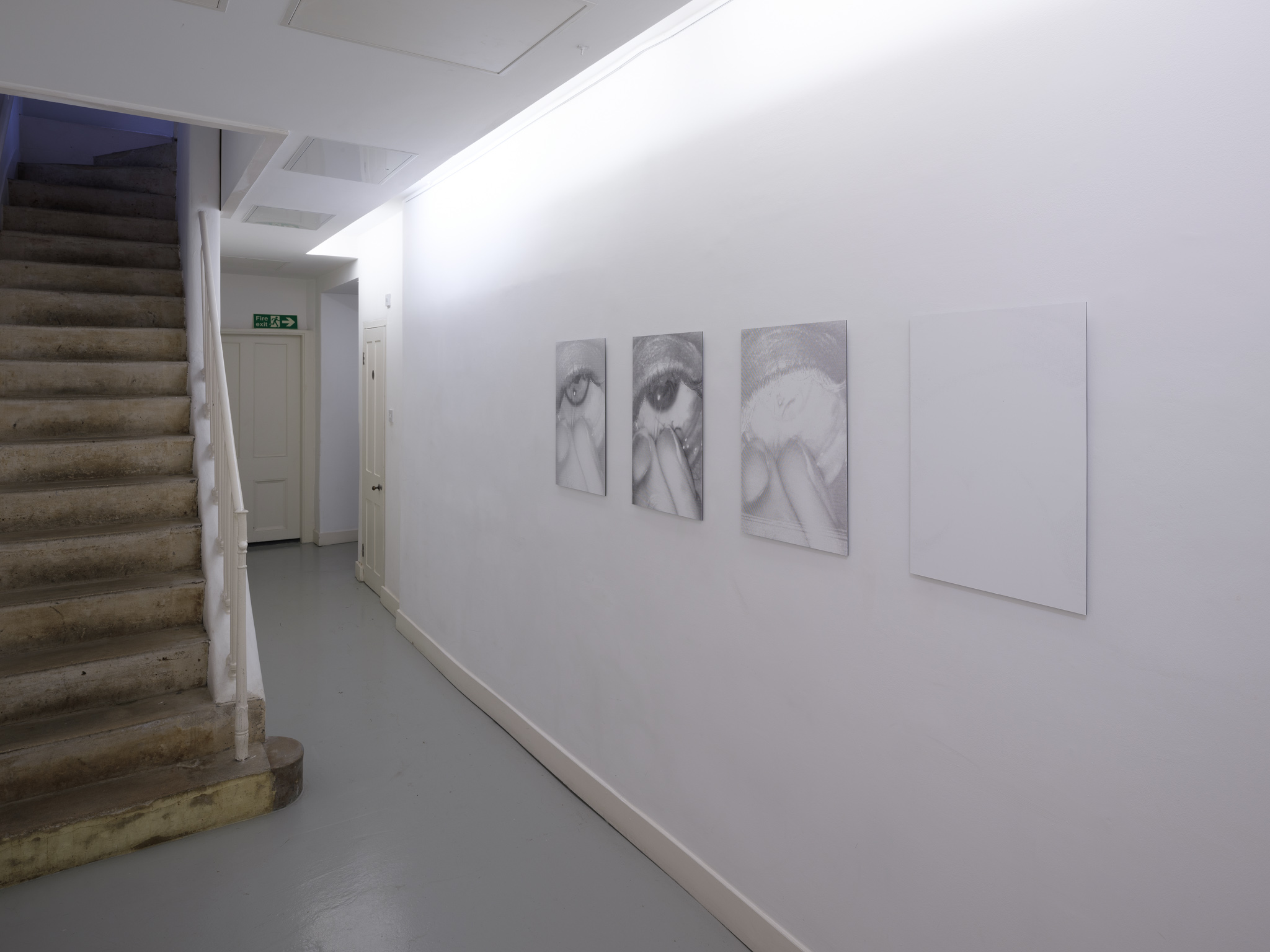


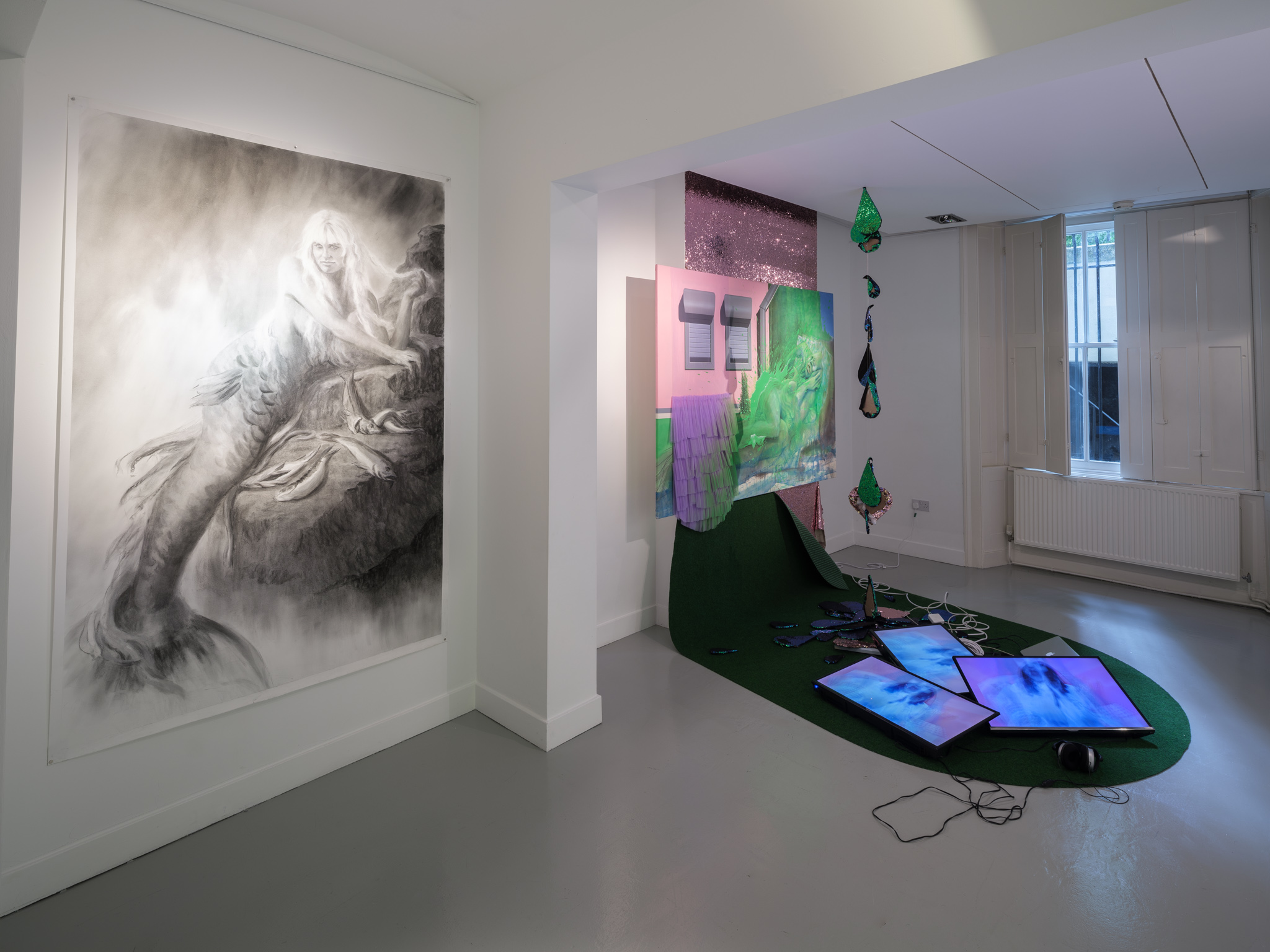


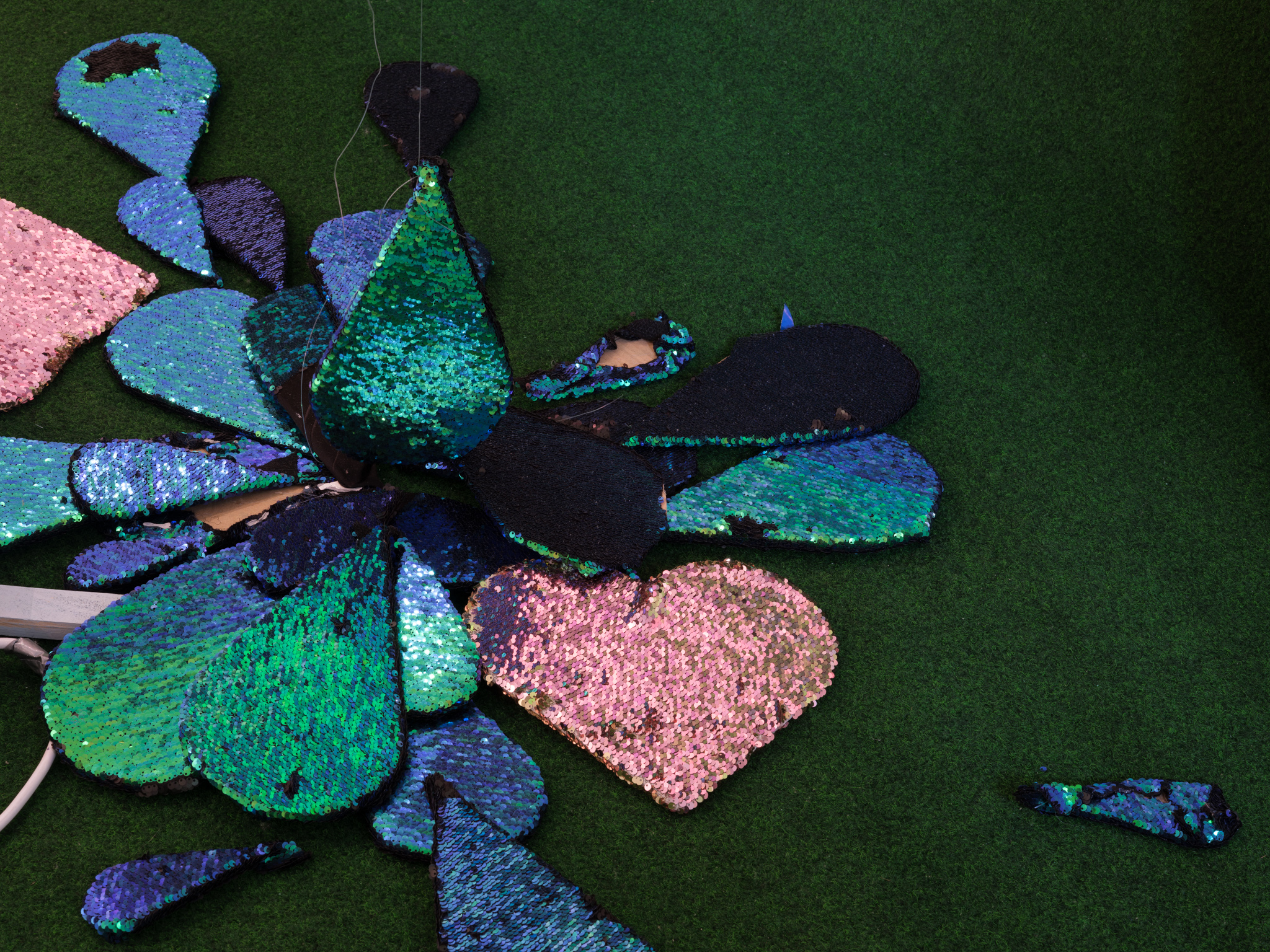







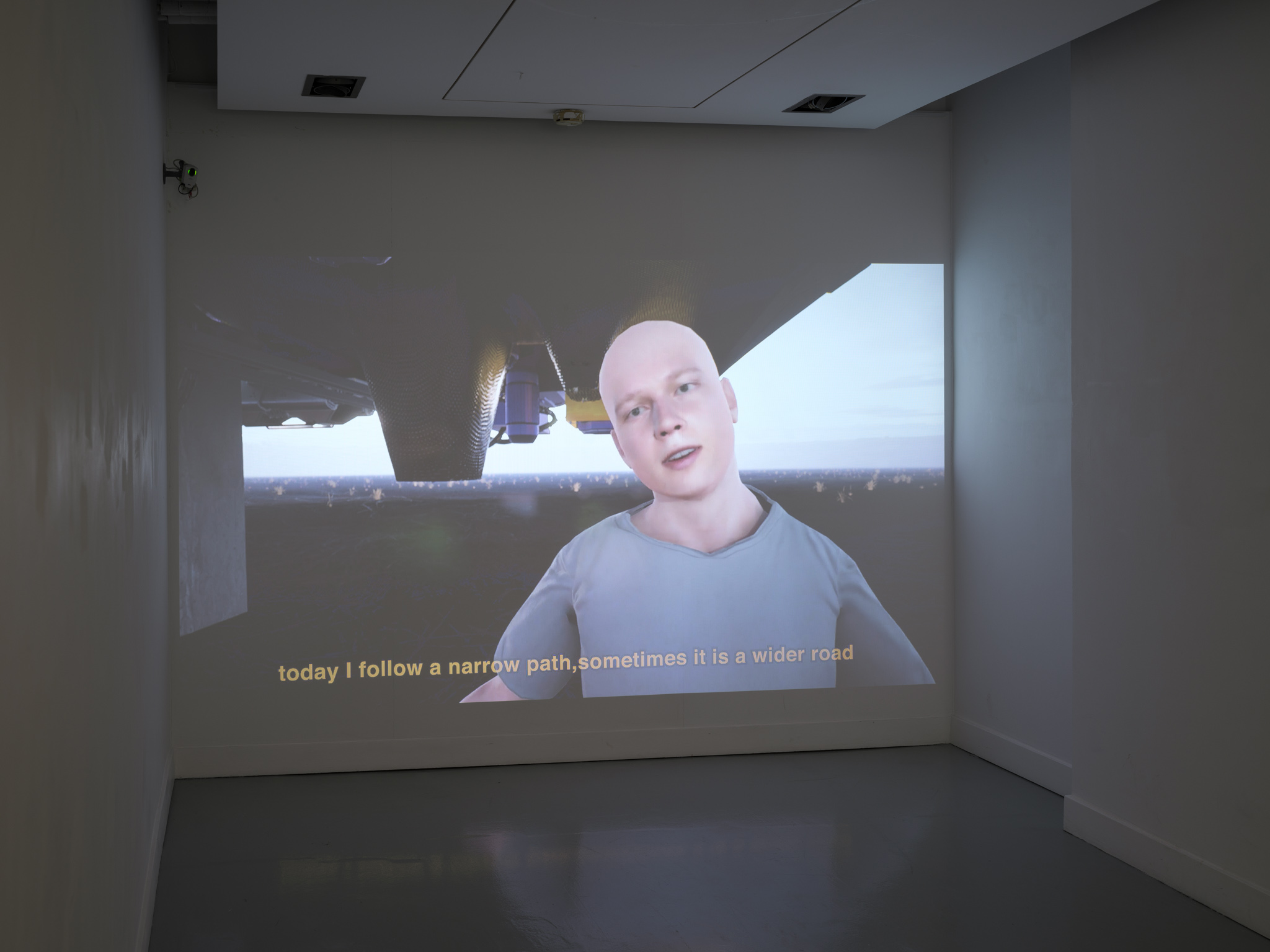

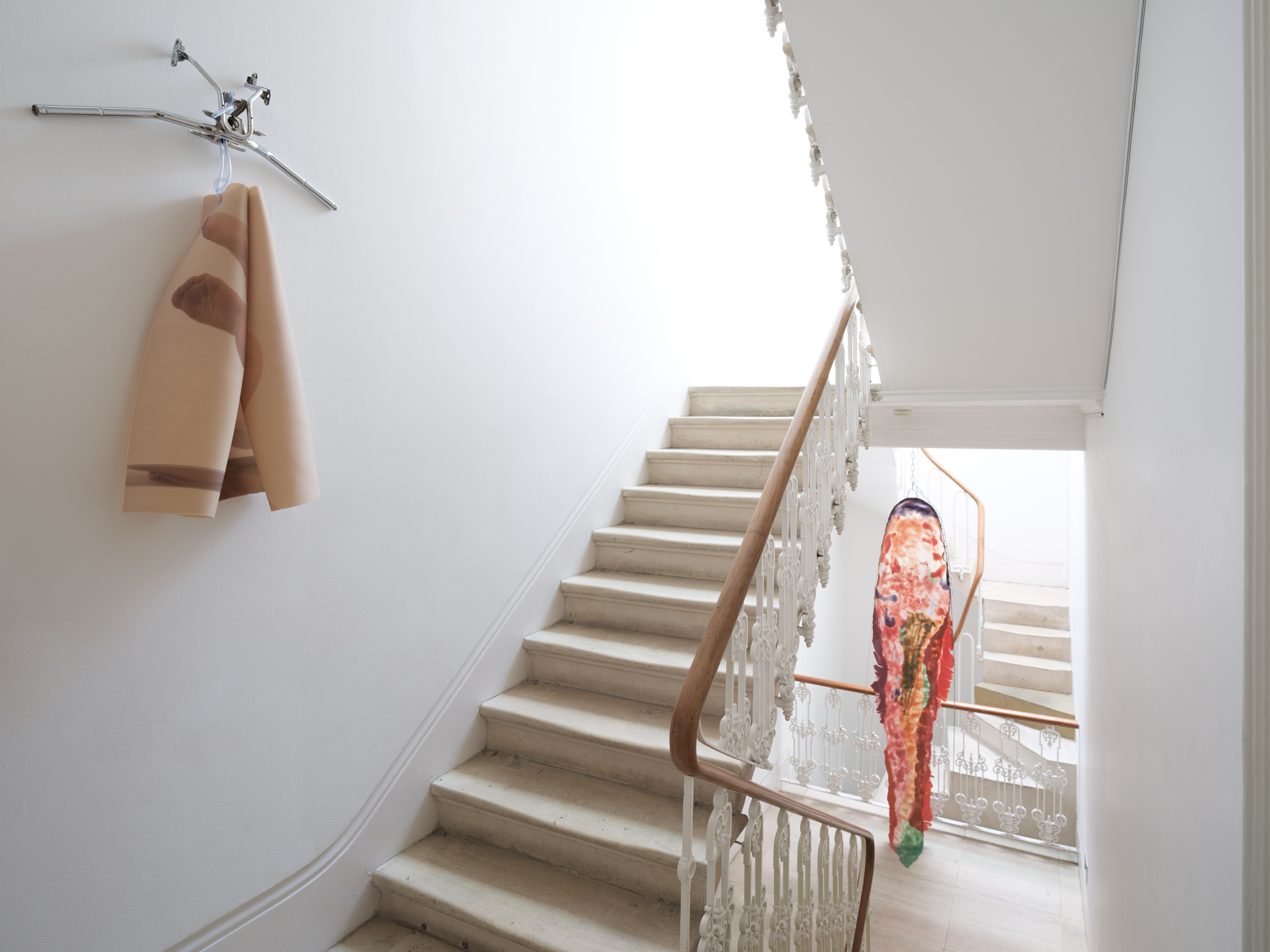
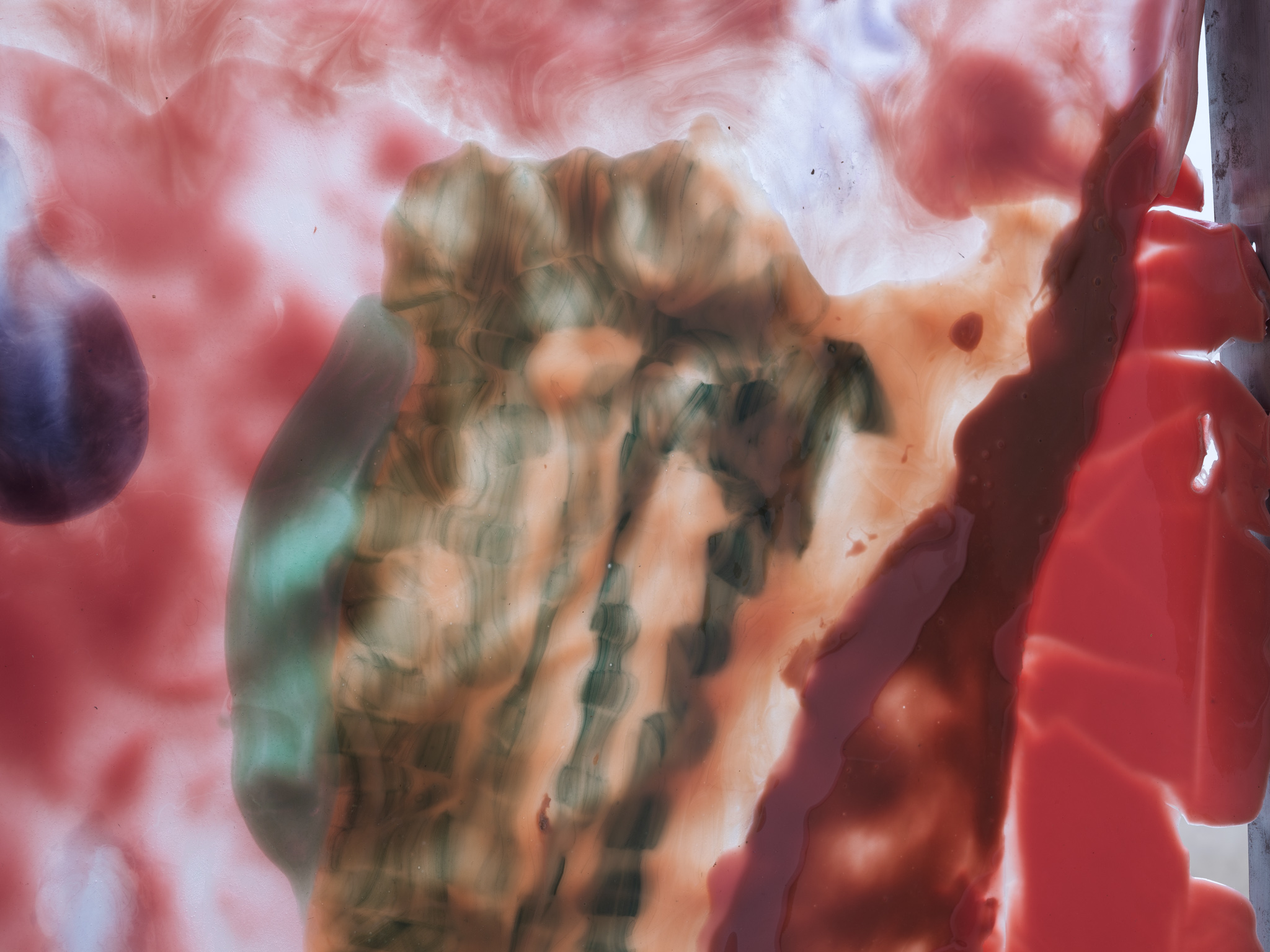








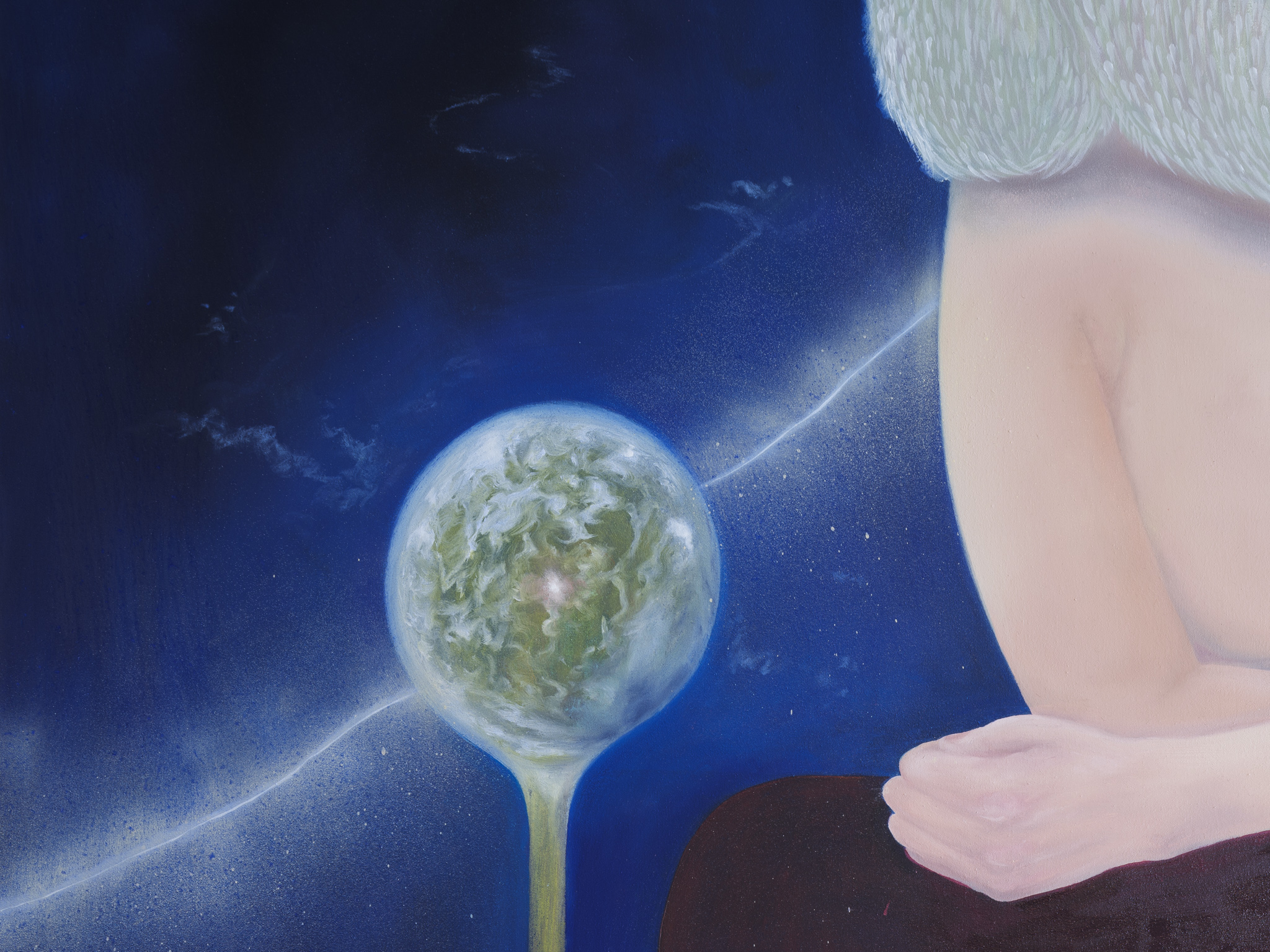



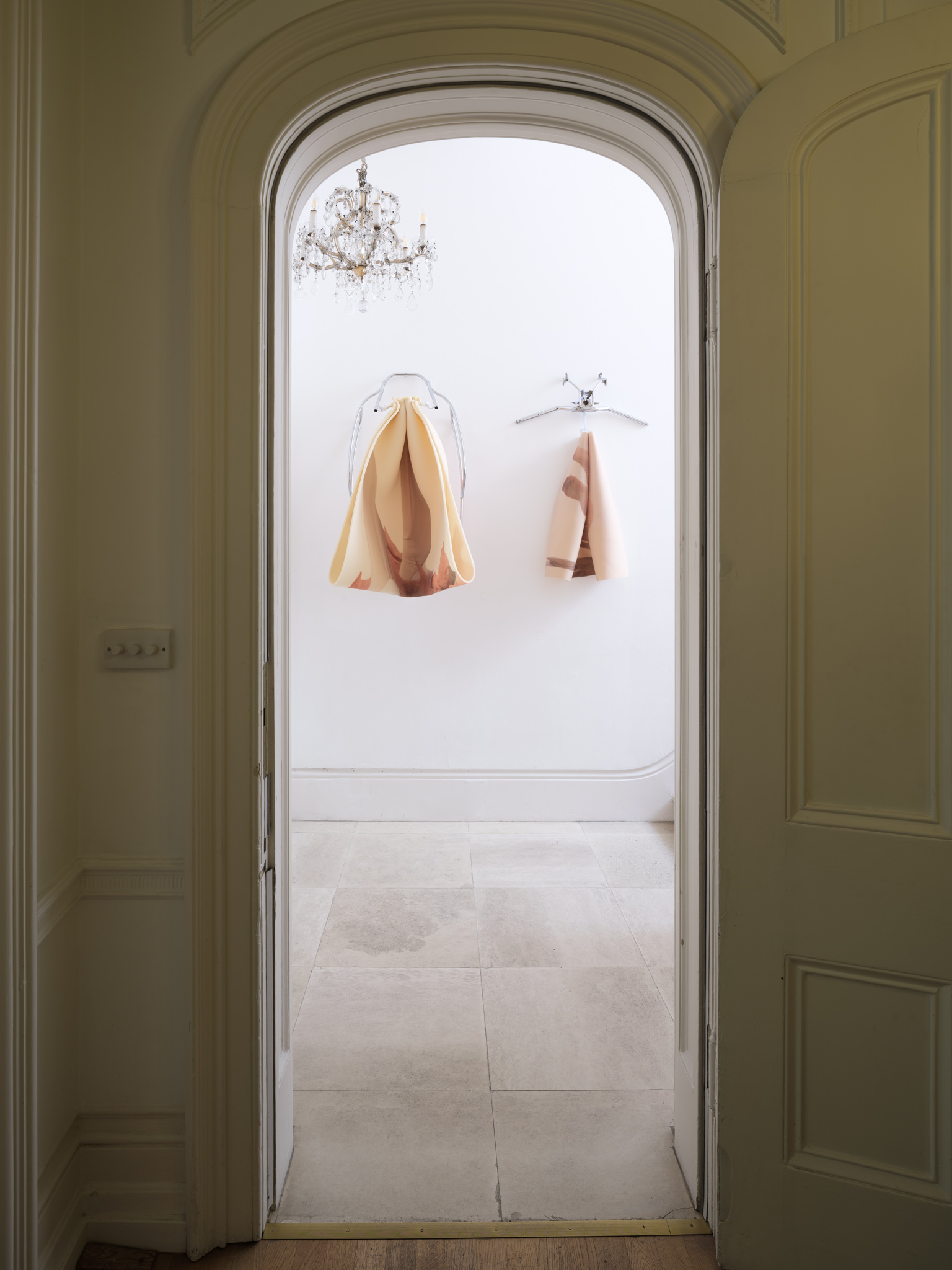




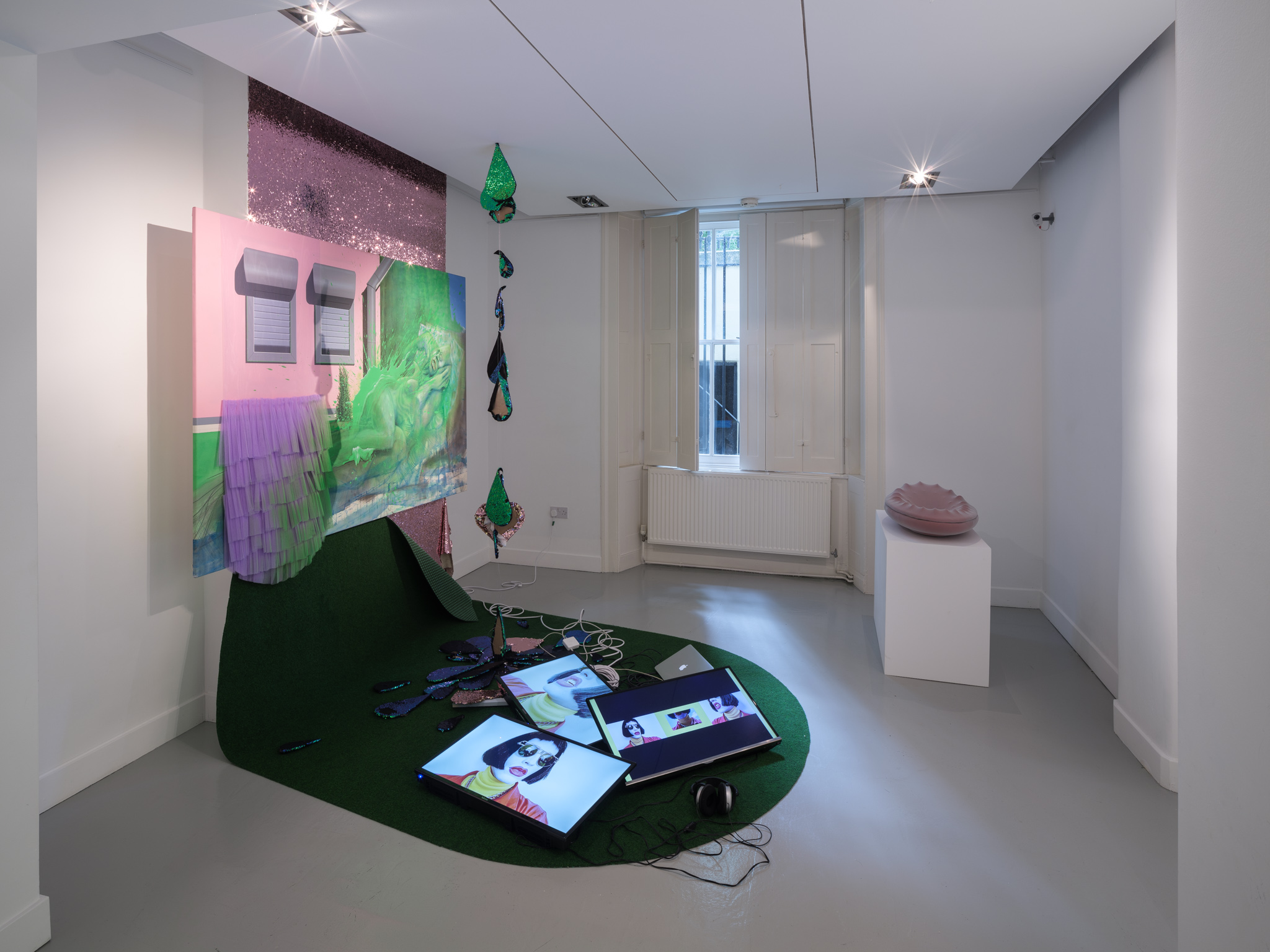
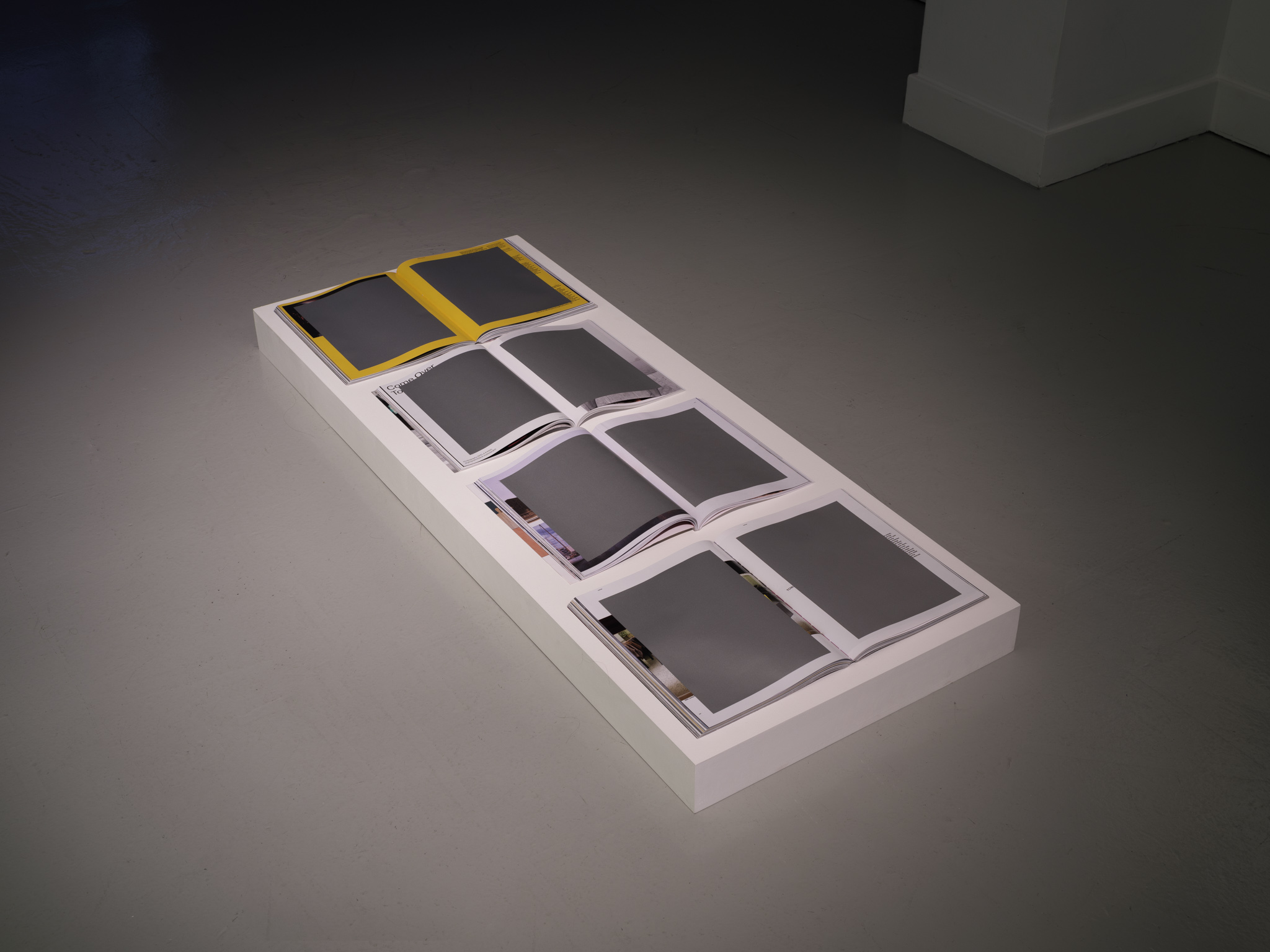



THE BLUE, THE PINK, THE IMMATERIAL, THE VOID
19 May–22 July 2022
Austrian Cultural Forum London, London
bluepinkimmaterialvoid.art
Artists: Arang Choi | Pyo E | Aitor Gonzalez | Natalia Gurova & Nora Aaron Scherer | Kubakub | Laila Majid | Jérôme David Meinlschmidt | Tamu Nkiwane | Rebecca Parkin | JJ Ramsauer | Alfred Rottensteiner | Esther Vörösmarty | Grace Woodcock
Curators: Rosa Abbott and Krishna Balakrishnan
Using a framework of the Technological Sublime to reflect upon the experienced present, THE BLUE, THE PINK, THE IMMATERIAL, THE VOID presents the work of 14 early-career artists based in London and Vienna. Spanning performance, painting, sculpture, drawing, sound and digital media, the exhibition explores how varying forms of sublime can manifest through artworks as technological phenomena and experience.
‘Technological sublime’ has been theorised since the early 20th Century when artists began turning their attention to the industrial machinery of the Modernist age. As Fredric Jameson has pointed out, however, ‘the technology of our own moment no longer possesses the same capacity for representation’. Our contemporary technological sublime is:
not the turbine, nor even Sheeler’s grain elevators or smokestacks, not the baroque elaboration of pipes and conveyor belts, nor even the streamlined profile of the railroad train … but rather the computer, whose outer shell has no emblematic or visual power … [and] television which articulates nothing but rather implodes, carrying its flattened image surface within itself.
As we enter an increasingly dematerialised way of living, the technological sublime comes to us in the form of seemingly limitless networks, an excess of images and information, and a sense of terror as we encounter geopolitical turmoil via digital news media. In the age of Kant, the sublime was a storm out at sea that threatened to envelop us. In 2022, it manifests as ominous clusters of pixels blinking on our screens, signalling war or wildfire.
In his 1961 text ‘Truth Becomes Reality’, Yves Klein – whose inscription at the convent of Santa Rita de Cascia lends the exhibition its title – wrote that “It is not with rockets, Sputniks and missiles that modern man will achieve the conquest of space… It is by the means of the powerful yet pacific force of his sensitivity.” THE BLUE, THE PINK, THE IMMATERIAL, THE VOID reflects on the fear-inducing awe we experience in the face of limitless information and technology; the disorientating effects of urban architecture and our yearning for a return to spirituality and/or sensuality in the technological age. Many of the artworks puncture the banality that emerges as a byproduct of the technological sublime by highlighting wonder, weirdness, joy, intimacy or disgust; reminding us of the heterogeneity of the world, the richness of experience, and how art can be a microcosm of this – telling stories, offering an escape from reality, opening new possibilities and allowing us to ‘travel’ through looking, rather than moving.
THE BLUE, THE PINK, THE IMMATERIAL, THE VOID will be accompanied by a publication featuring texts by Dr Betti Marenko (Central Saint Martins / Hybrid Futures Lab) and Dr Georgina Voss (London College of Communication), and a conversation between the curators and Axel Stockberger (artist and lecturer at Akademie der Bildenden Künste) alongside documentation of the artworks. An online platform will also connect the exhibition to a broader international audience, further opening up the artistic processes of the participating artists.

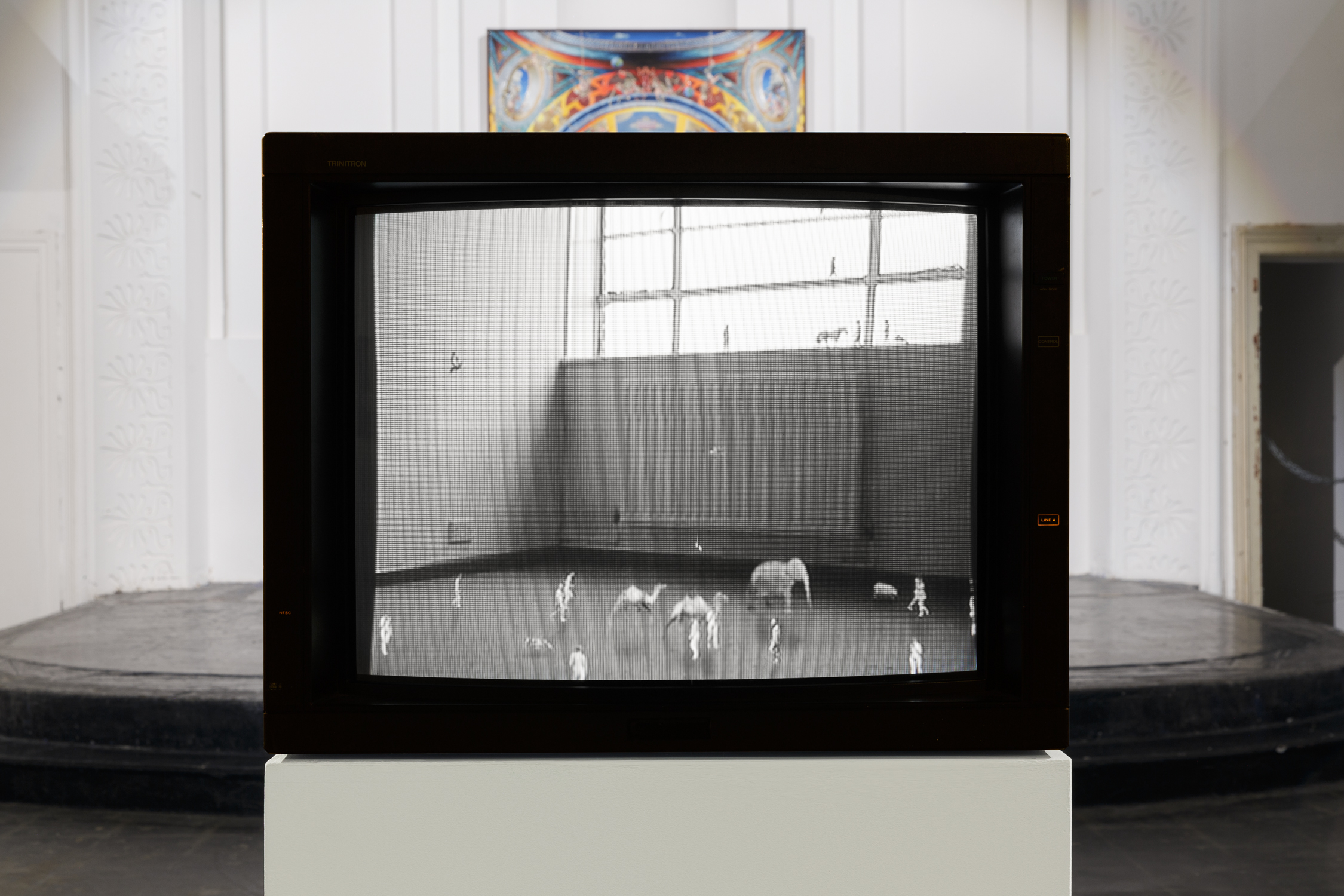
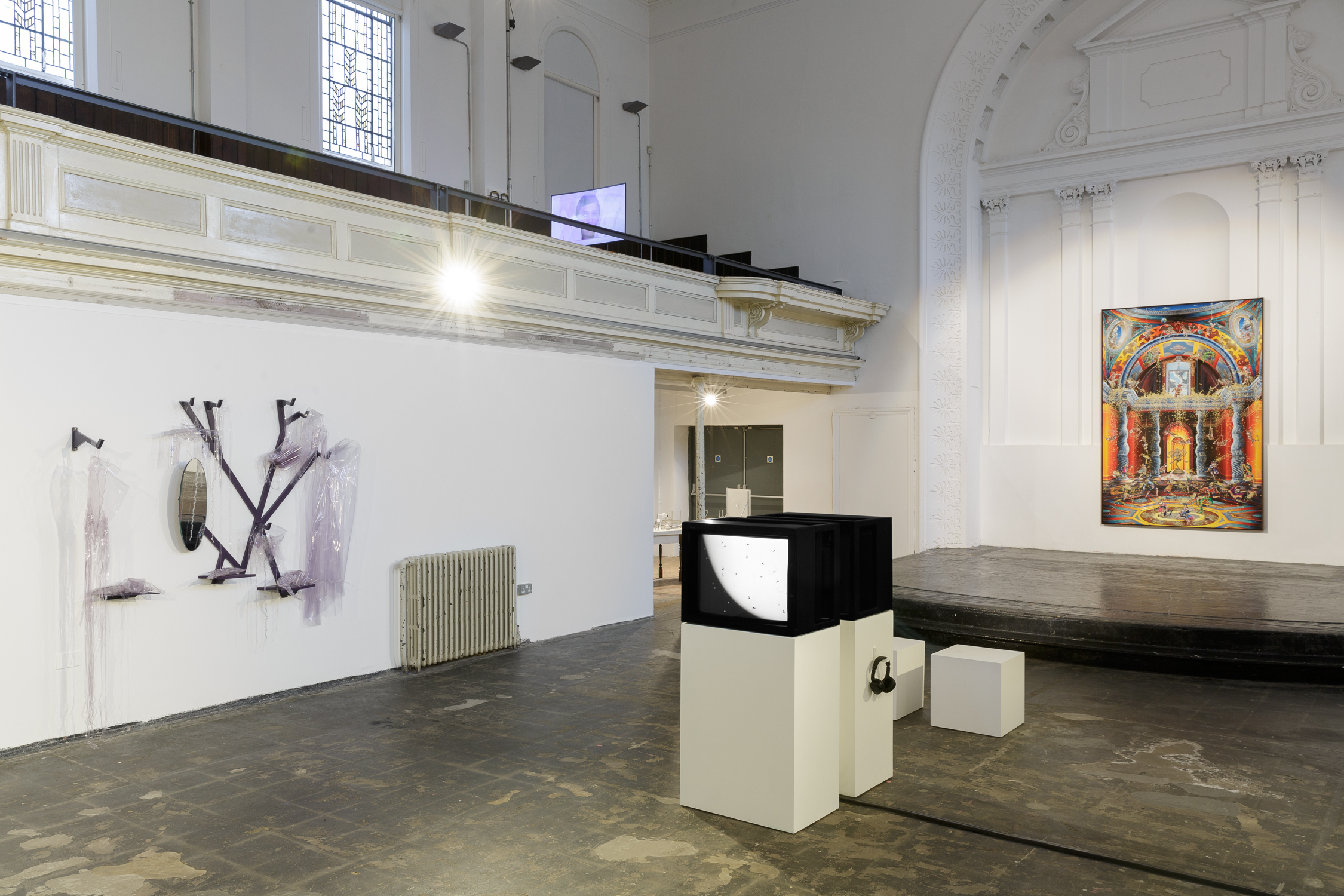
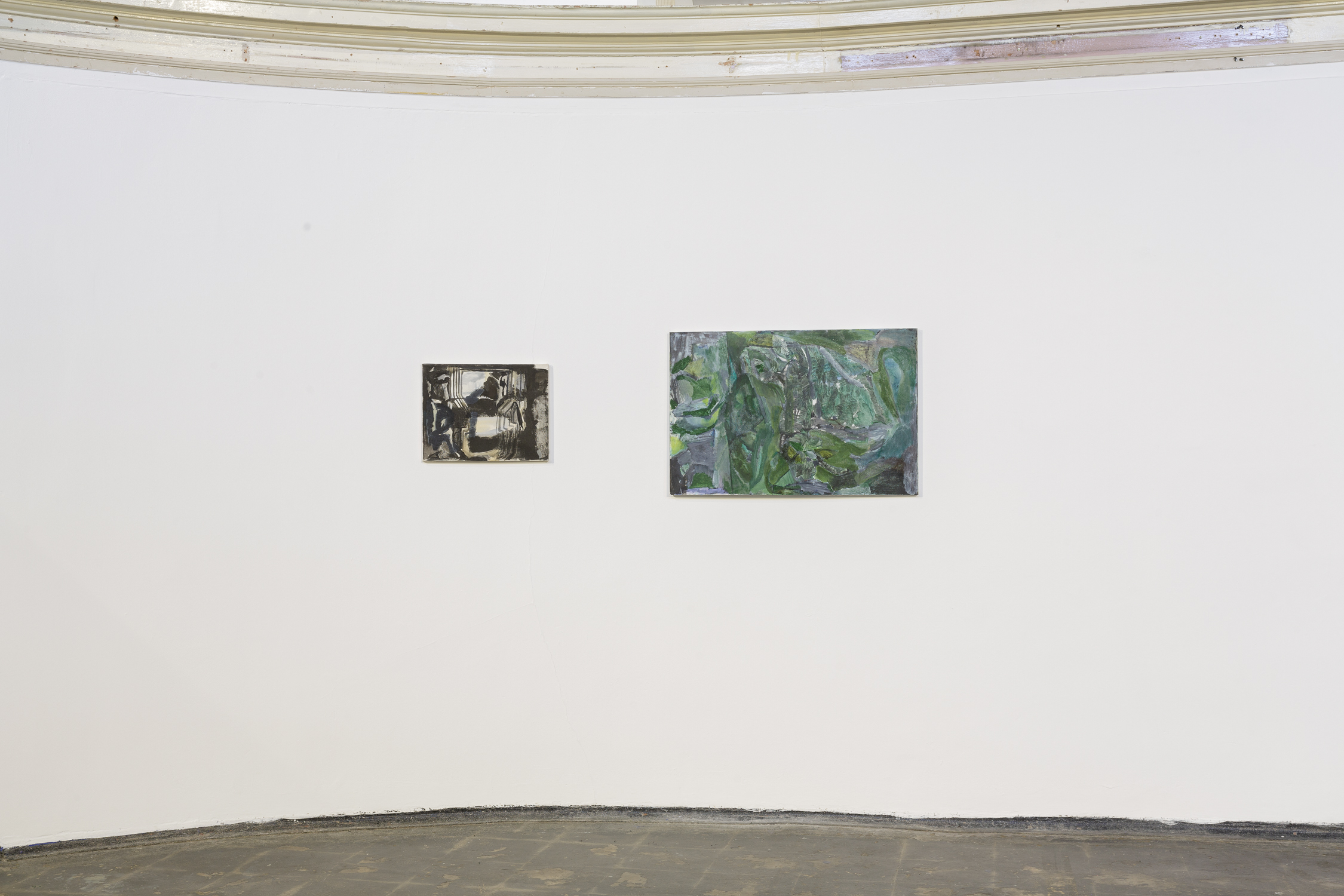
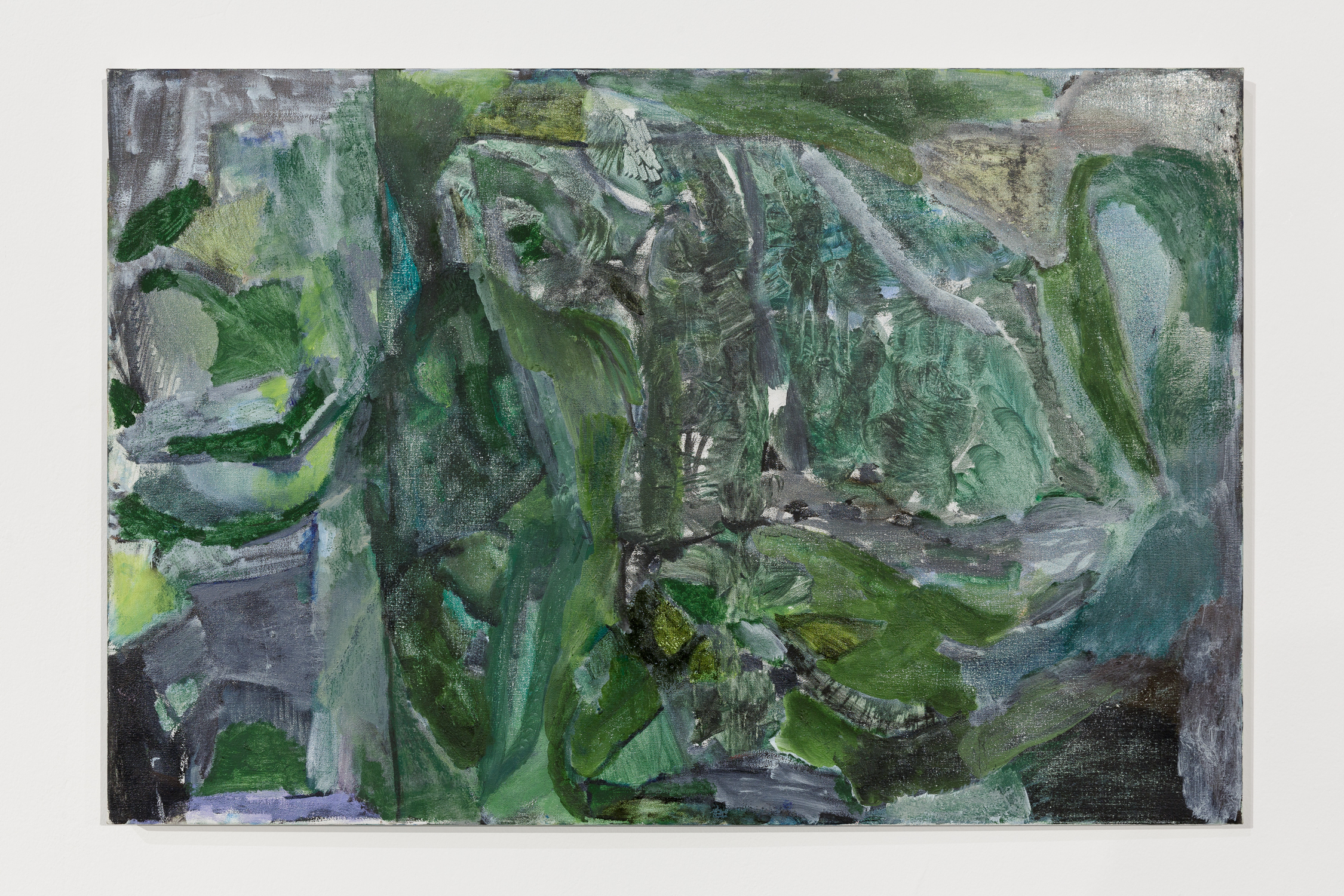
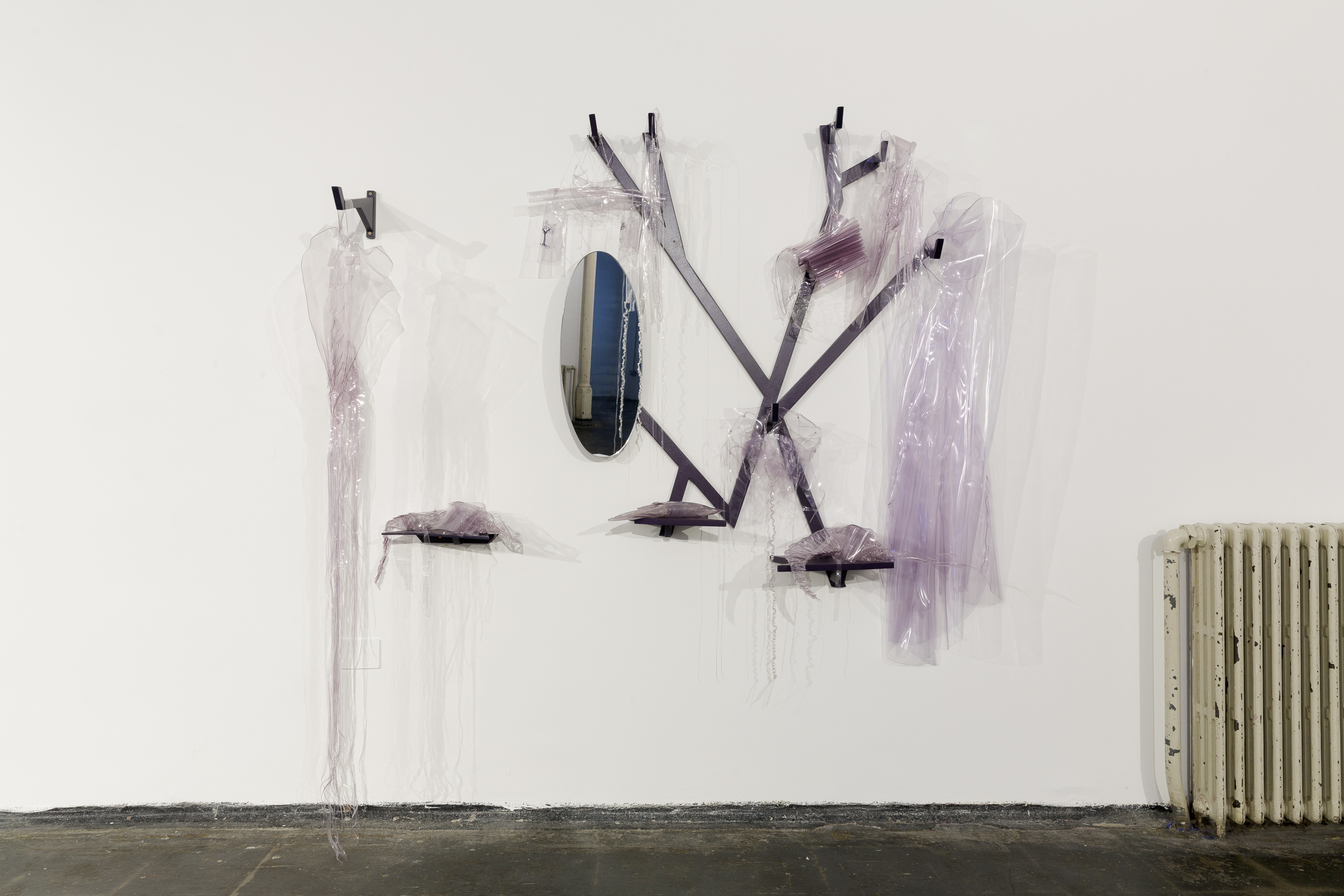
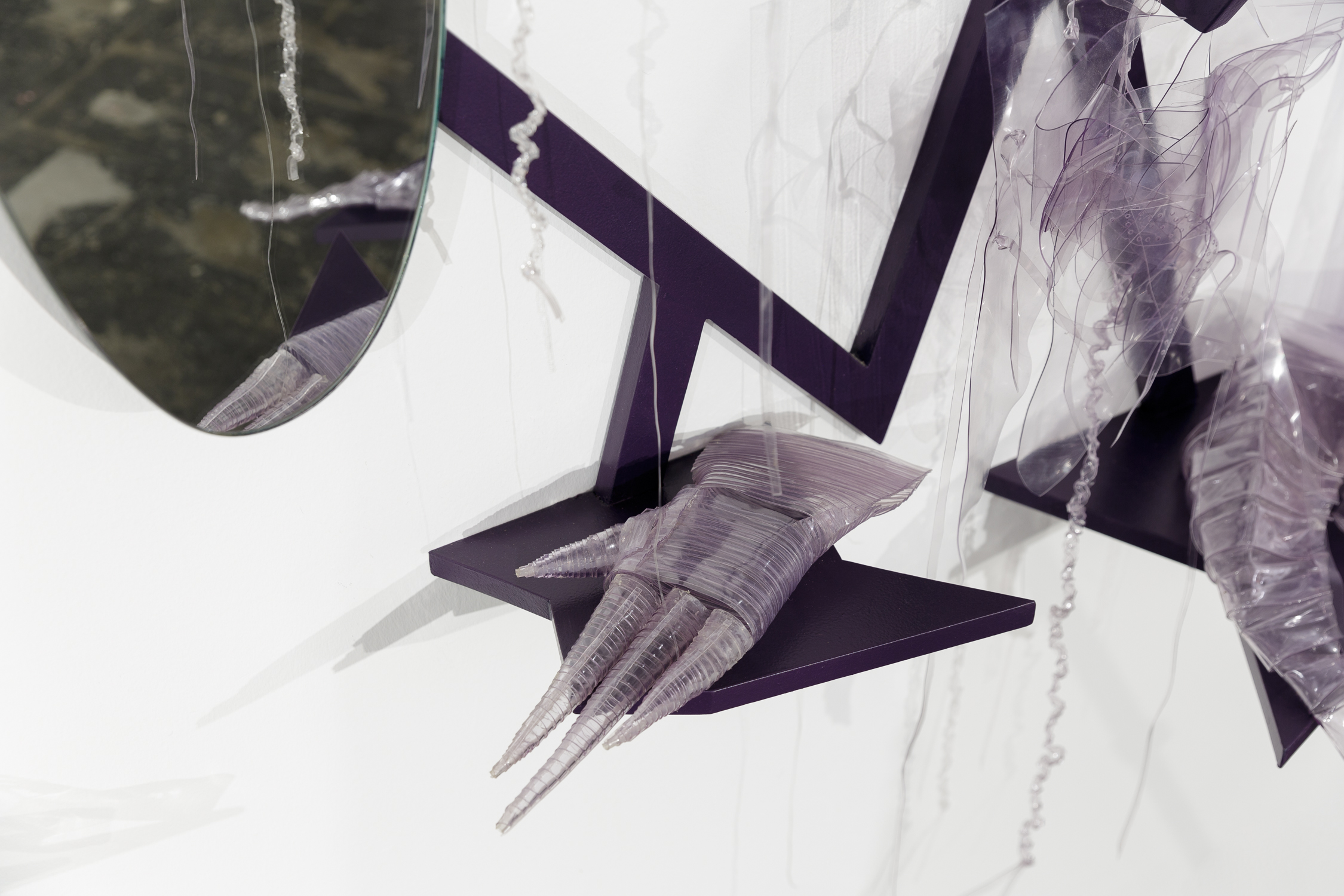
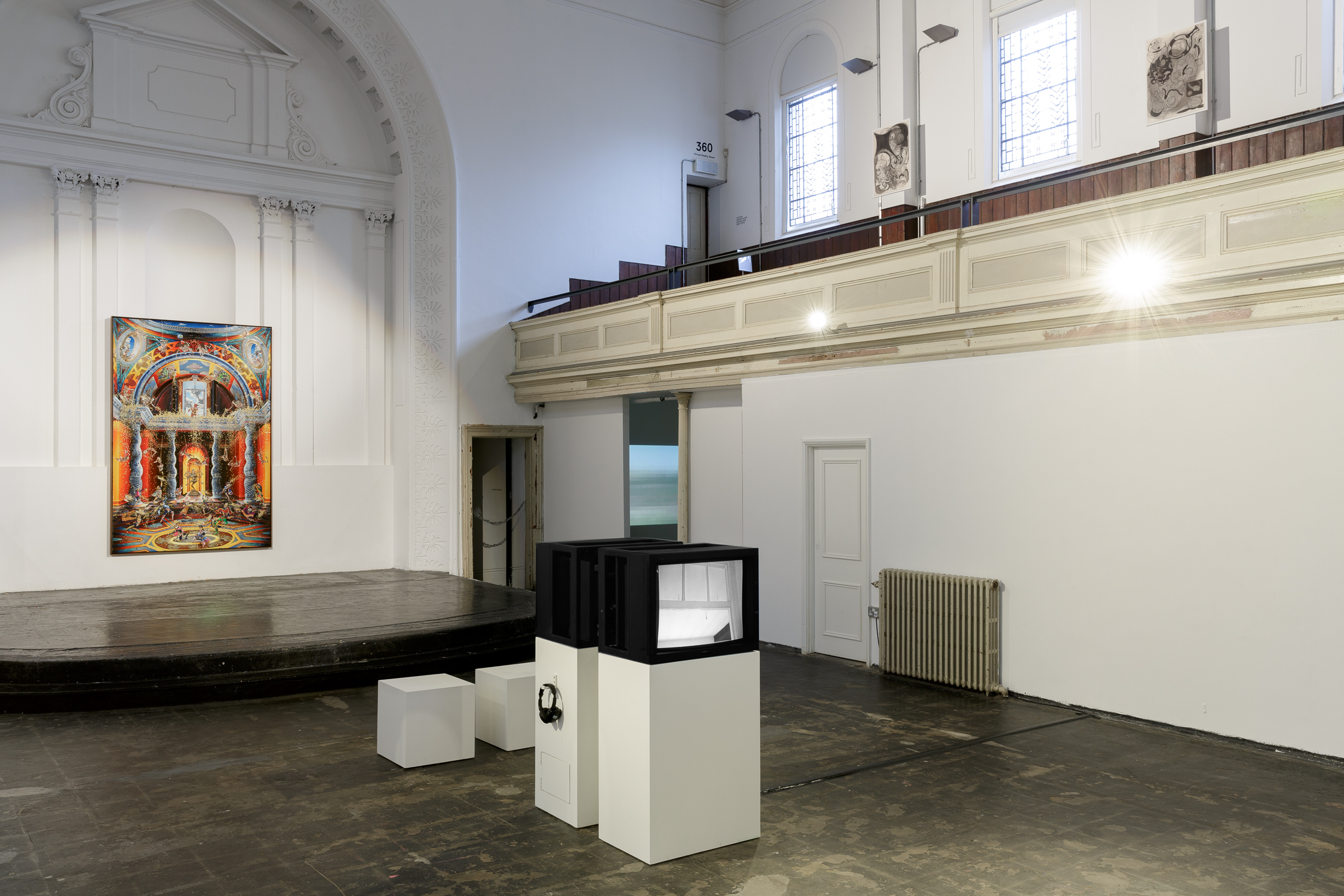

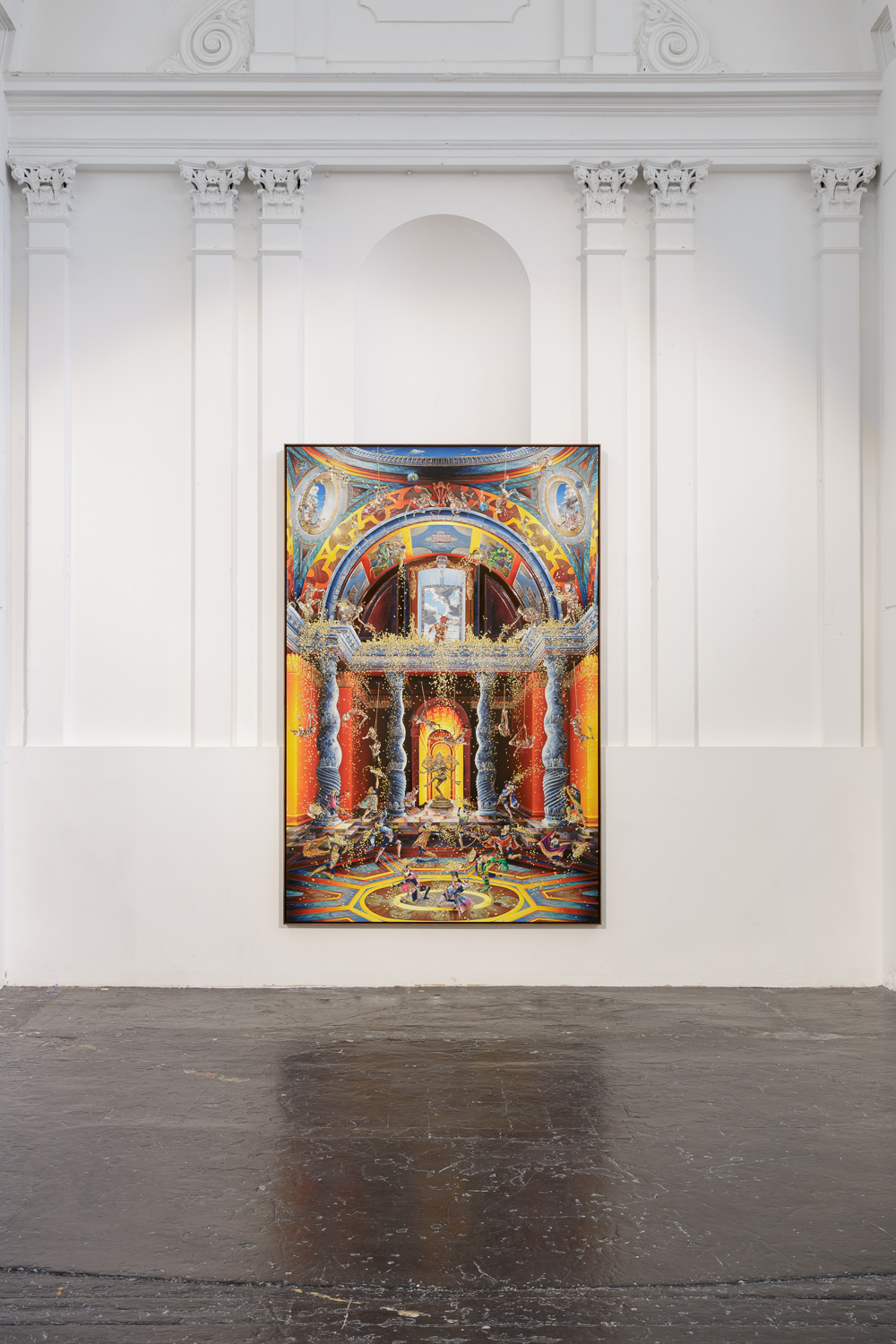
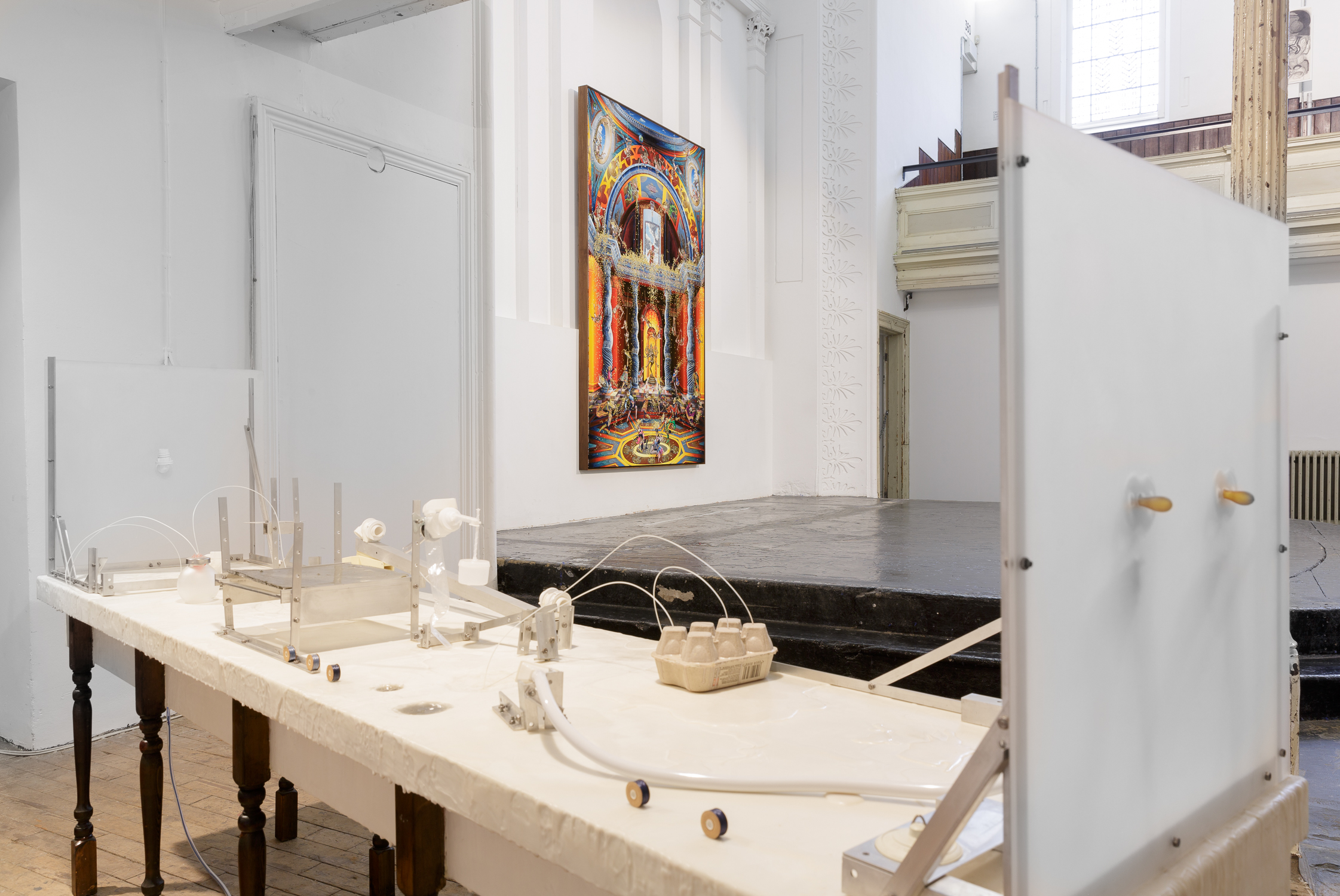
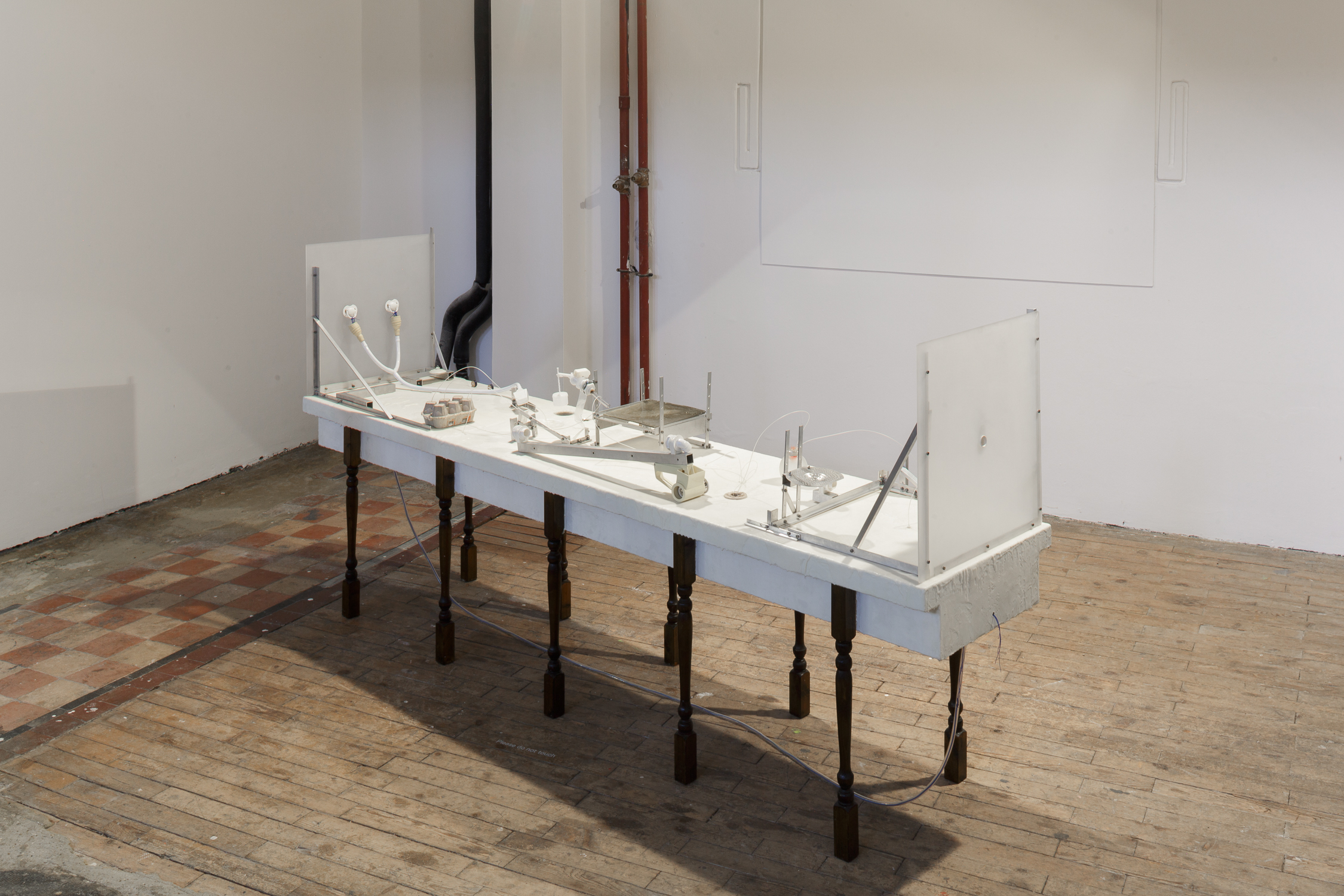

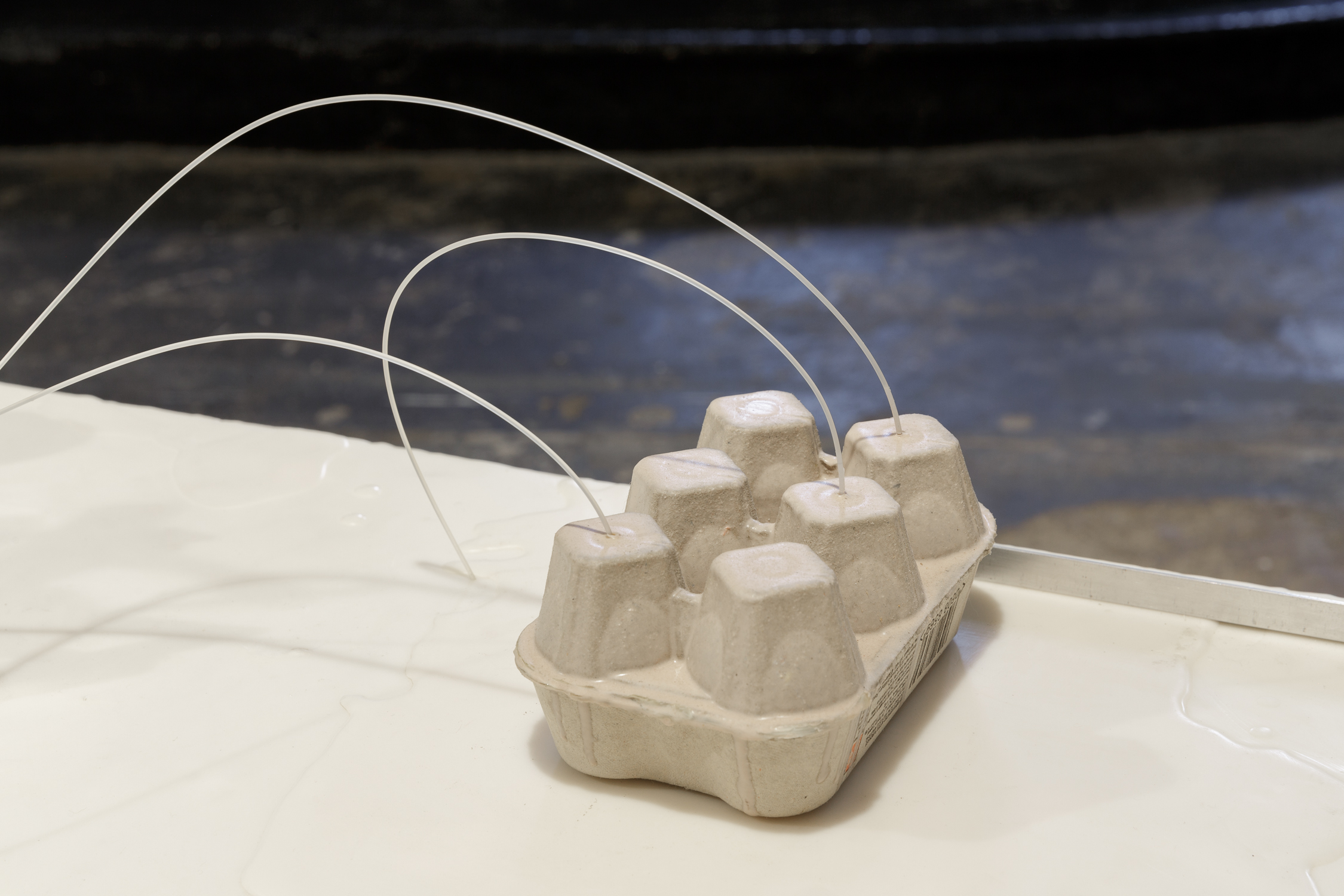

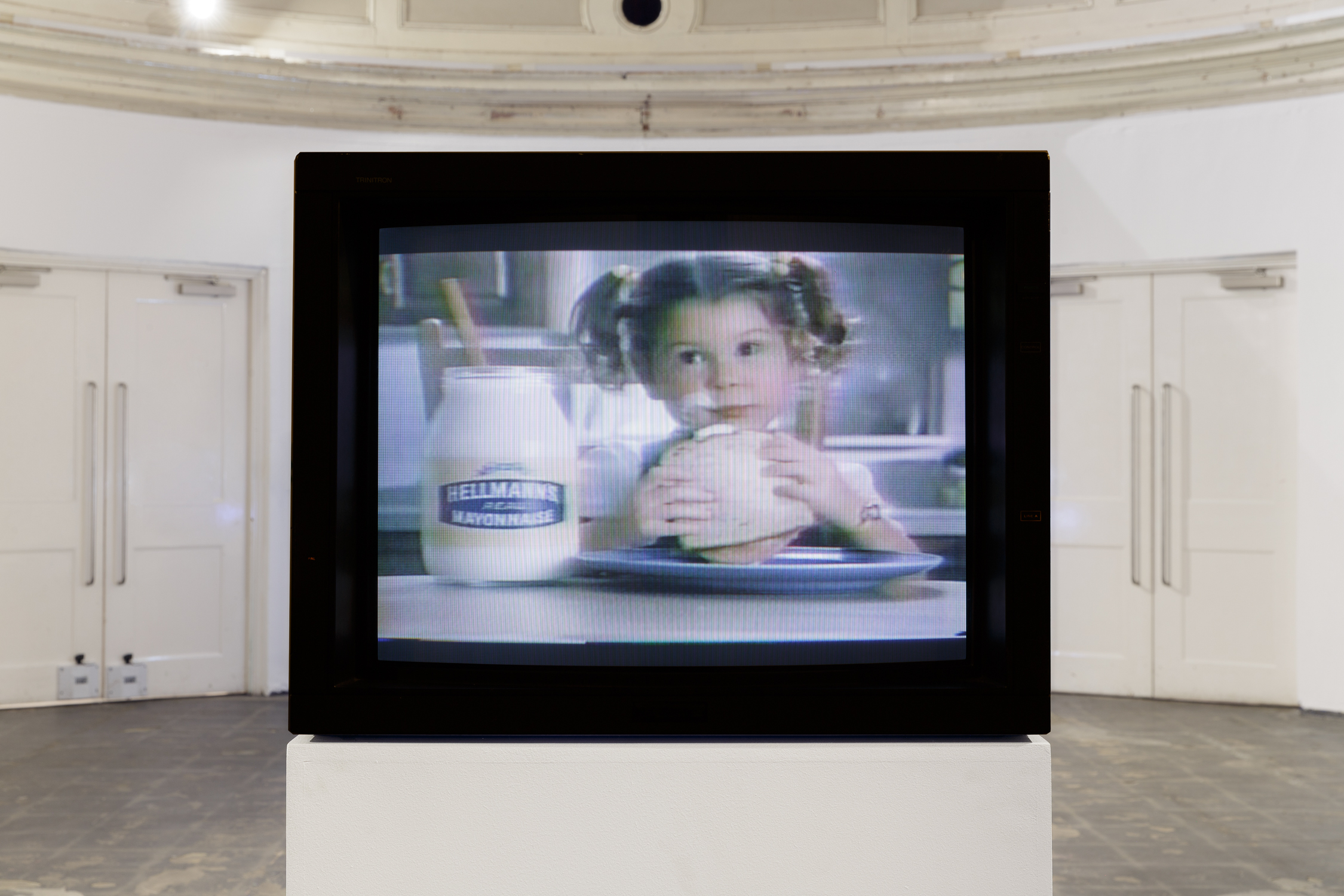
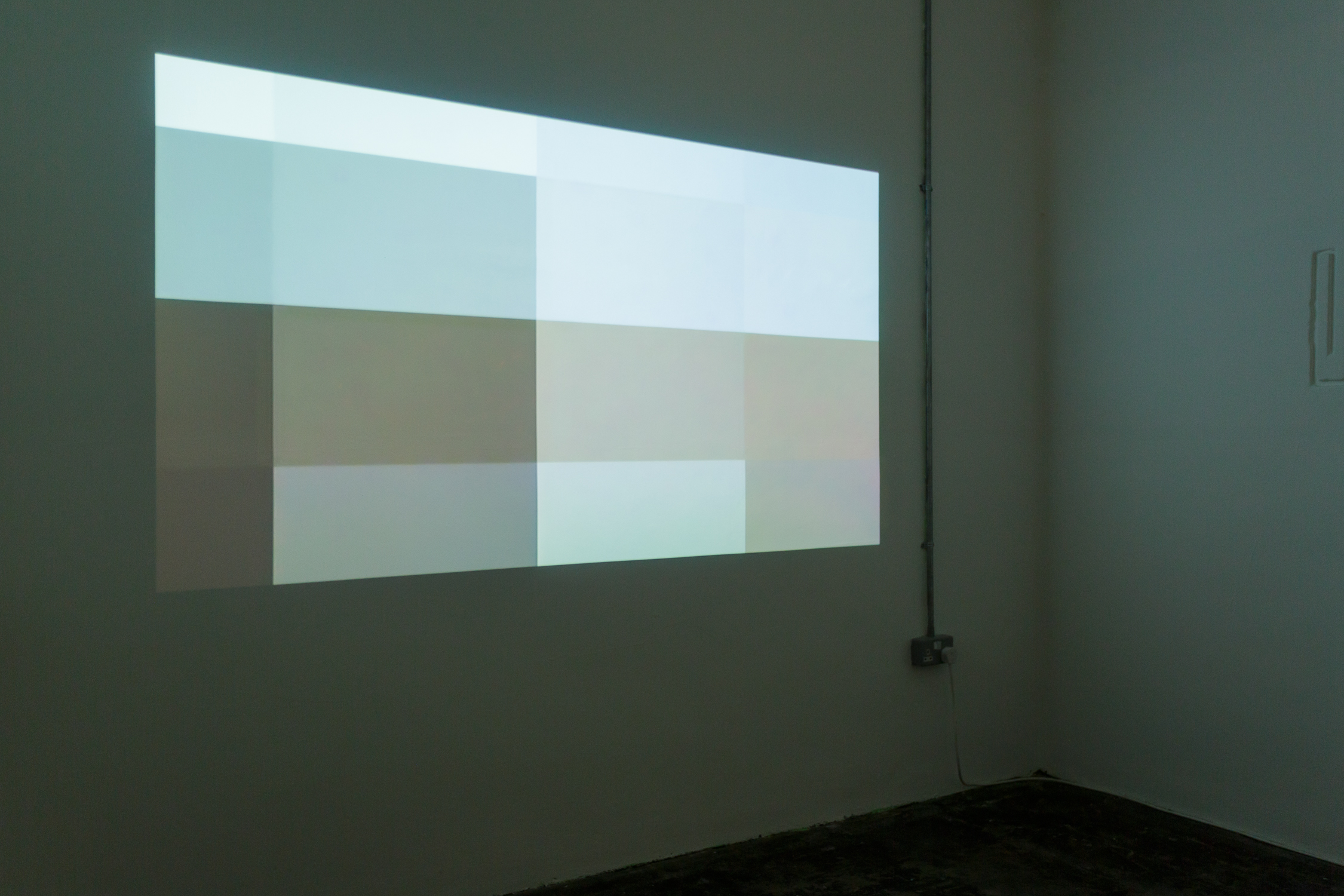
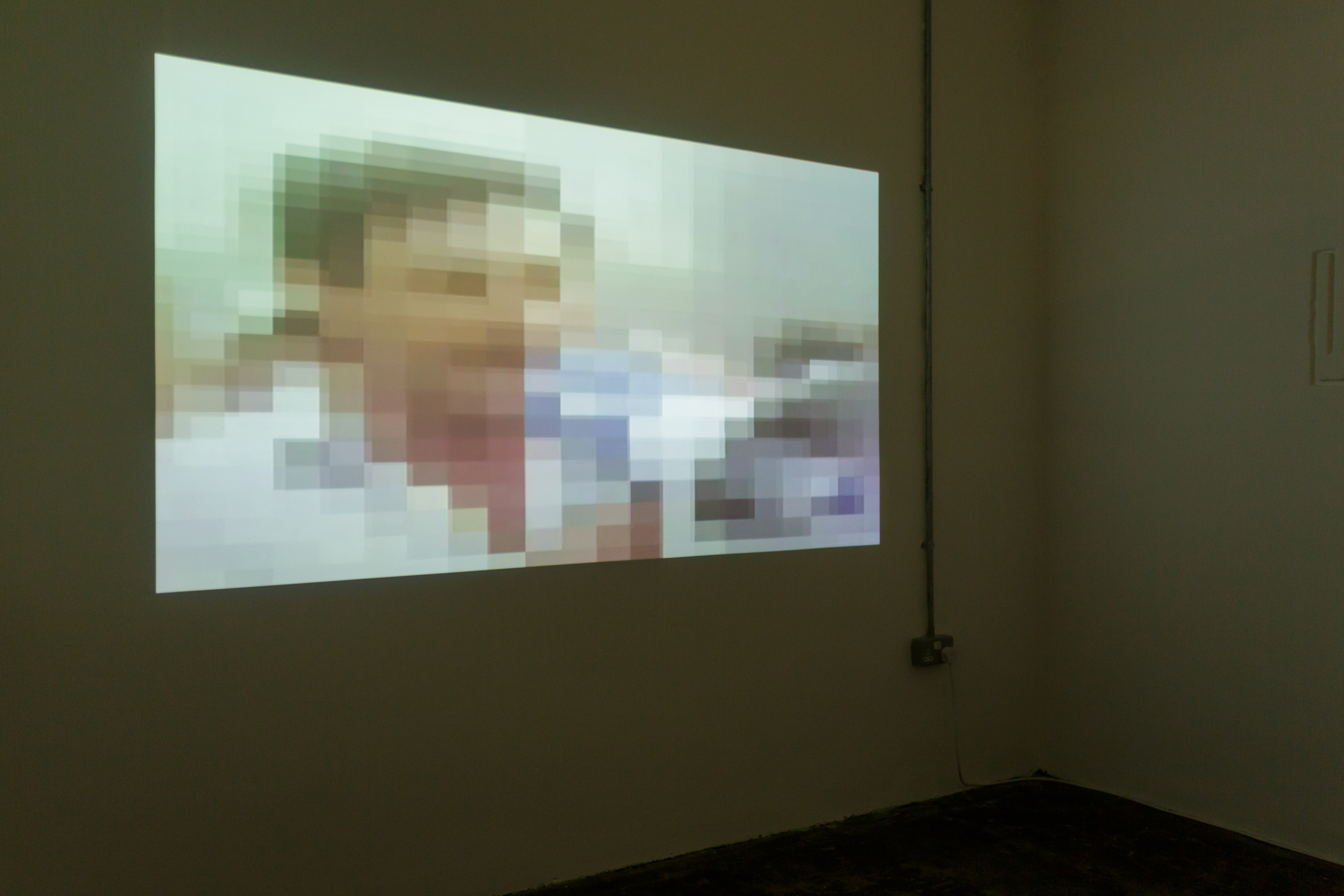

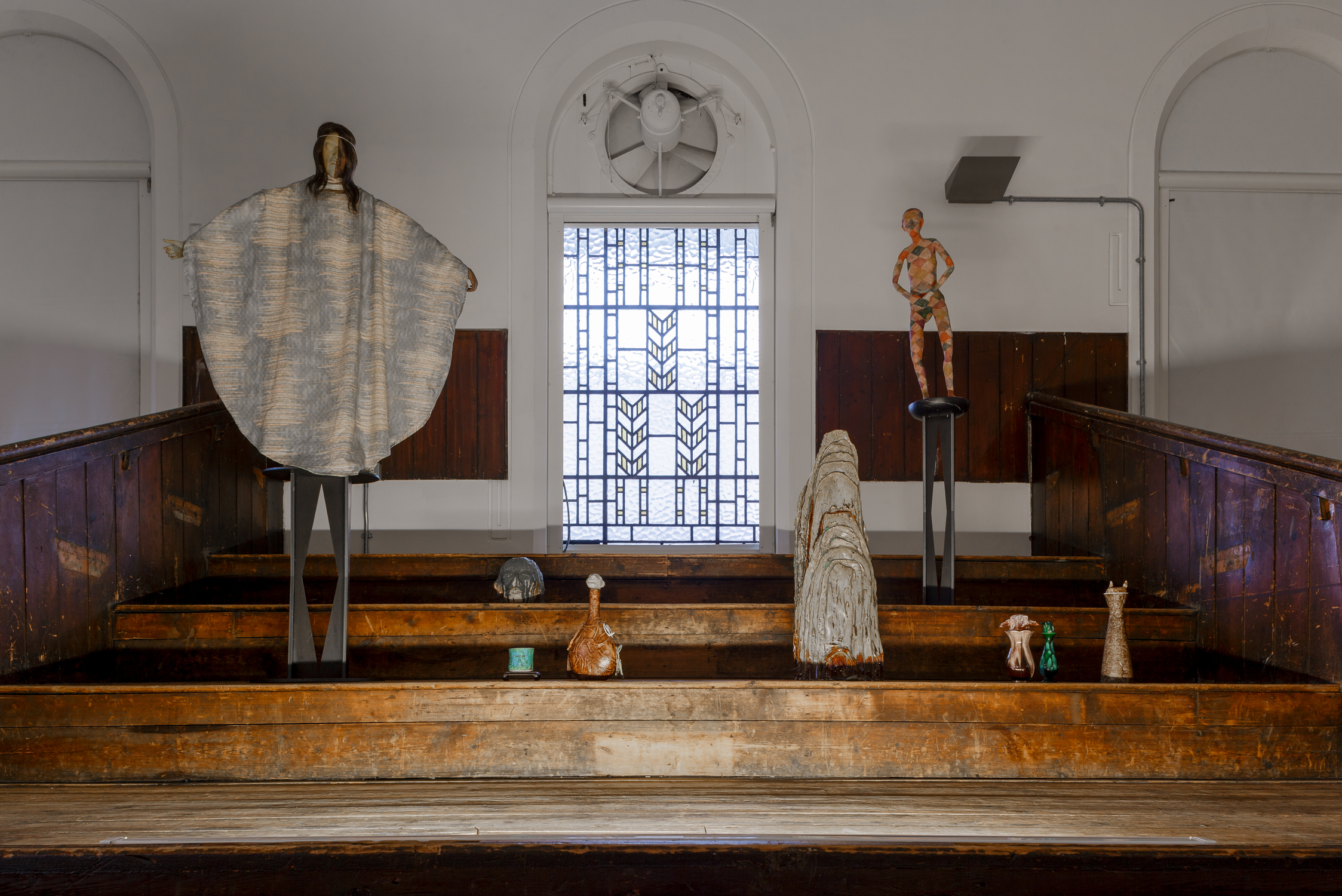
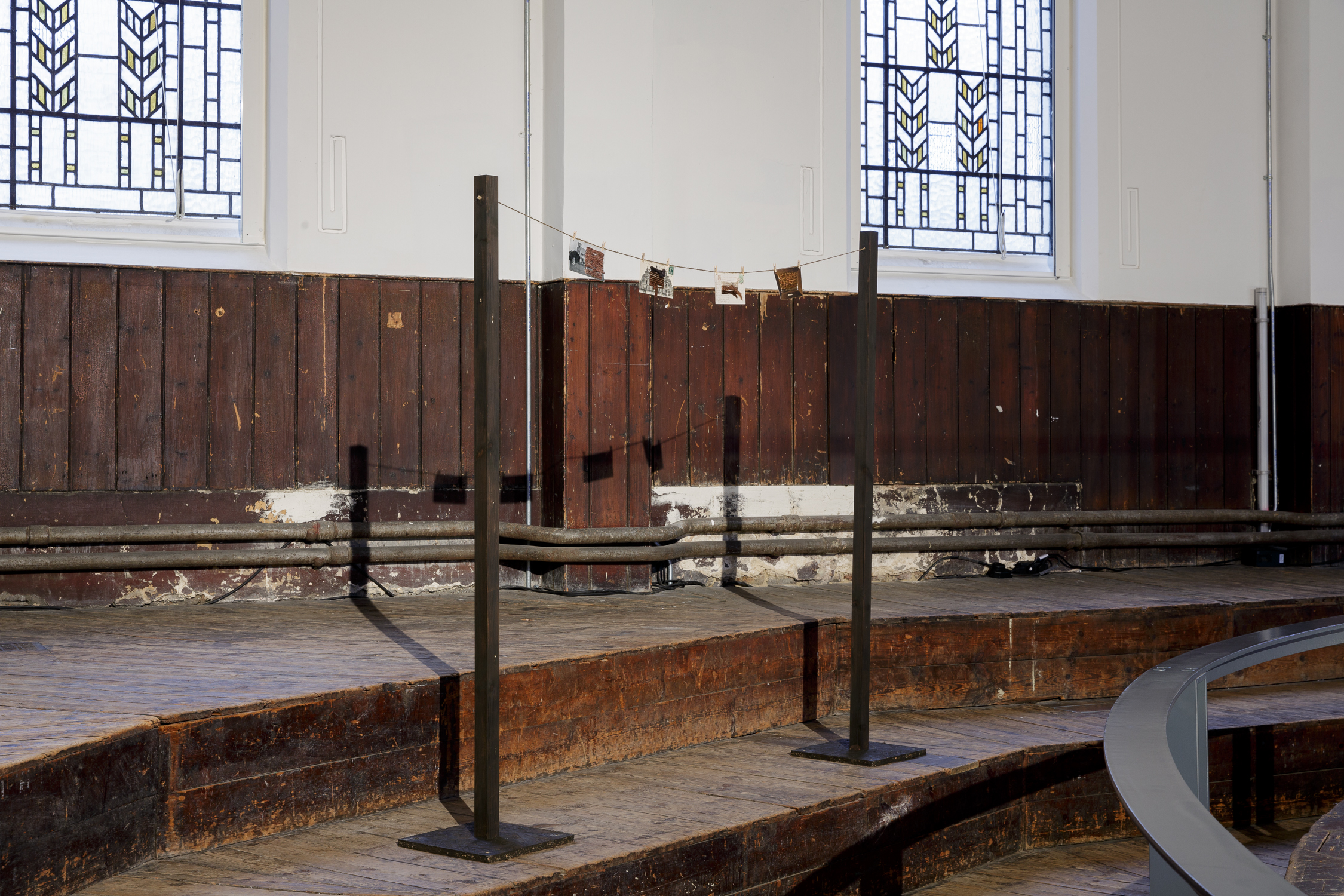



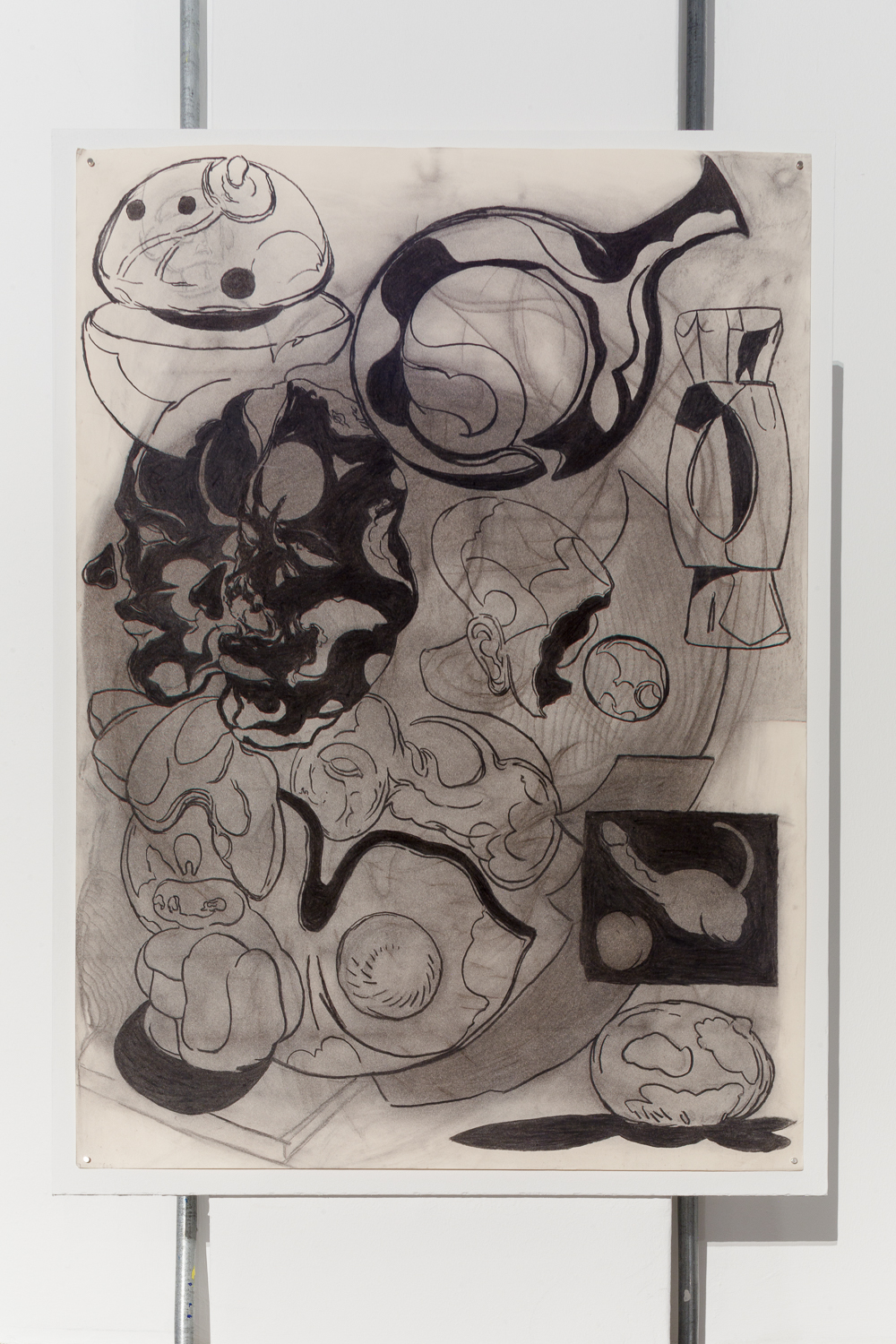



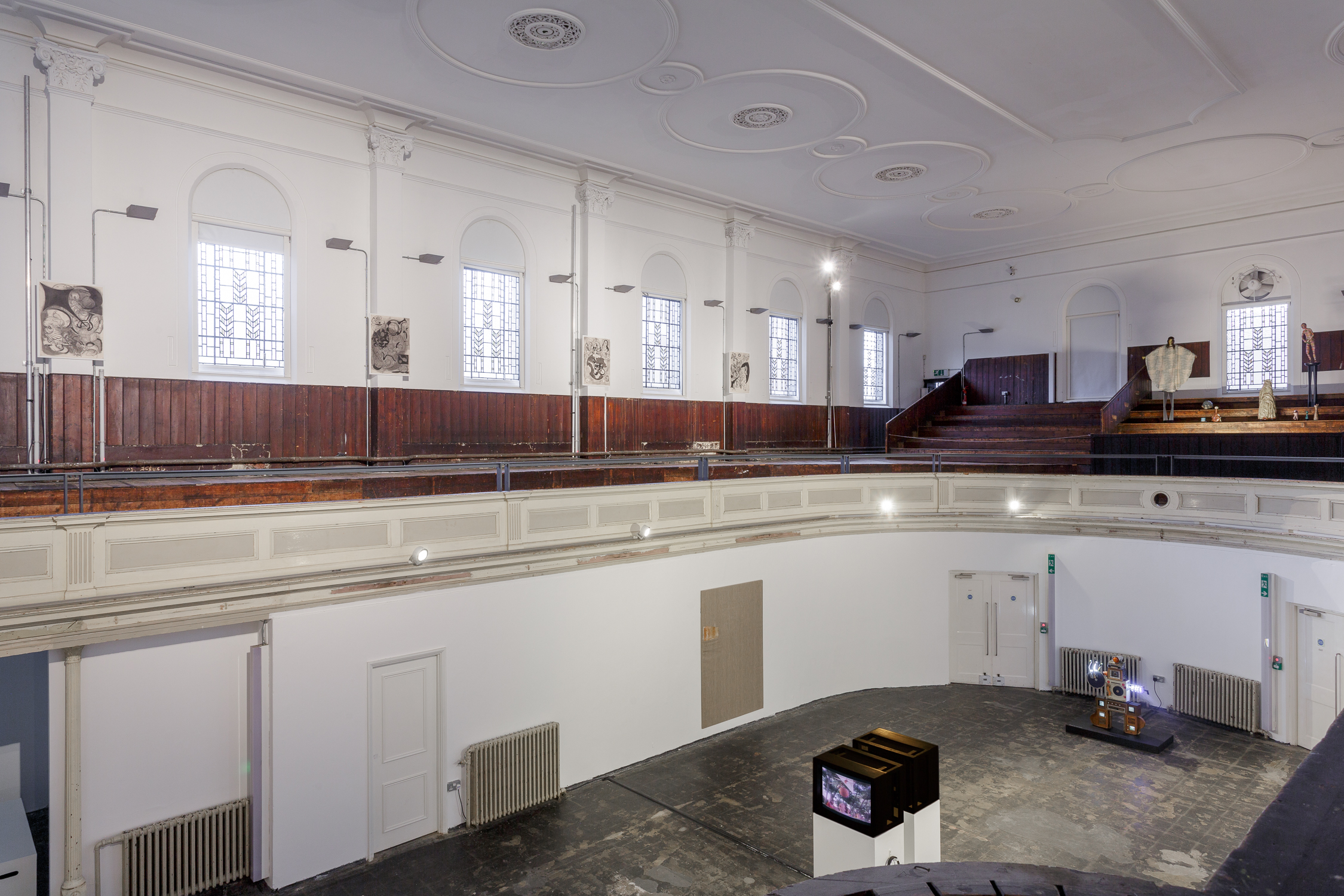
No horizon, no edge to liquid
16 January–23 February
Zabludowicz Collection, London
Featured artists: Alvaro Barrington, Varda Caivano, Nir Evron, Richard Ayodeji Ikhide, Laura Lima, Mohamed Namou, Nam June Paik, Seth Price, Hiraki Sawa, Raqib Shaw, Nobuko Tsuchiya, Francis Upritchard and Saya Woolfalk
No horizon, no edge to liquid explores the concept of cultural hybridity as a space in which cultures meet: where bridges are built between societies through the processes of communication, negotiation, and translation. The exhibition includes work by thirteen artists, all of whom were born outside North America or continental Europe, although many have since immigrated there. Encompassing a diverse array of media – painting, sculpture, video and installation – the exhibition explores how varying forms of hybridity can manifest through artworks: it might be expressed through materiality, the blending of traditional and new media, the dialogue between two cultures, or the interplay between art/craft, high/low or popular/elite.
Cultural hybridity is a pertinent topic in 2020: a point in which globalisation seems maximised, movement and migration seem inevitable, and yet shared borders worldwide are becoming increasingly rigid, with the UK poised to remove itself from the EU. Cultural hybridity seems both a logical outcome of our cultural moment, and a potential tool for resistance against rising nationalist sentiments. At the core of the key post-colonial theorist Homi Bhabha’s works on cultural hybridity are descriptions of hybrid narrative, experience and self-conscious perspective. Bhabha argues that new transcultural forms are produced throughout contact between a coloniser, or dominant culture, and its subject. This exchange produces a new ‘hybrid’ that stands in opposition to fixed national identities of cultures and belonging, negotiating a space in resistance to the dominant discourse, and questioning the idea that ‘culture’ is ever singular.
Most of the artists in No horizon, no edge to liquid are products of international movement – born in one place, educated in another, settled somewhere else. Some have chosen to remain in their homelands, whilst their artworks travel across the globe. Their works are manifestations of multiple forms of cultural hybridity, looking at and intertwined with multiple cultures. In some cases this is a literal intertwining: in a series by Alvaro Barrington, coarse yarn is woven through found postcards depicting European landmarks. Engaging with a tradition of women’s handicrafts, from the Greek myth of Penelope to the textiles made by the artist’s own aunts in Grenada, Barrington uses this domestic and ‘minor' technique to overwrite the implicit power of European architecture with his own narrative, building an alternative vision into an existing view of the world.
Saya Woolfalk uses science fiction and fantasy to re-imagine the world in multiple dimensions. With her project Life Products by ChimaTEK (2014), Woolfalk has created the world of the Empathics, a fictional race of women who are able to alter their genetic make-up and fuse with plants. This work is a continuation of Woolfalk’s body of work that builds the narratives of these women’s lives, and questions the utopian possibilities of literal cultural hybridity. Not all explorations of hybridity are utopian, however. Raqib Shaw’s opulent paintings of imagined fantastical worlds, full of intricate detail, rich colour, and jewel-like surfaces, mask the intense violent and sexual nature of their imagery. Inhabited by phallus-headed birds, bug-eyed butterfly catchers, reptilian warriors, these fantastical worlds are laden with nature and irony. They fuse motifs from old master painting with imagery exploring Shaw’s own metamorphosis, having grown up in New Delhi as a Muslim minority, to tell a narrative of becoming, negotiating and being.
Other artworks raise questions about who has access to hybridity, and whether hybrids can also be produced by the ‘dominant’ culture. New Zealand-born artist Francis Upritchard employs a variety of existing historical and cultural materials, found objects, and people within her practice. Although Upritchard has on occasion described her work as ‘meaningless’, it holds distinct references to existing history, culture and people. By presenting works that evoke or blur certain traditions, histories, cultures and ideologies, Upritchard critiques the practice of many institutions that collect and display native items of curiosities, removed from context. Richard Ayodeji Ikhide inhabits a similar territory; exploring the creation of personal mythologies, fusing depictions of cultural artefacts with everyday life.
By presenting disparate perspectives of cultural hybridity, No horizon, no edge to liquid poses the question: Is cultural hybridity an amalgamation of different components or is it a ‘third product’, created by the combination of two or more elements? Arguably, the process of hybridisation has existed as long as humans have had the capacity to travel beyond their own communities, but as new technologies enable intercultural contact (from the Internet to more affordable international travel), the pace of cultural hybridity accelerates and its scope widens. The artworks presented are a means of communication within the space of the exhibition, but are they merely mouthpieces for the artists, relaying a specific cultural experience, or do they speak for themselves, as autonomous cultural hybrids?
Combining an international cross-section of curatorial and artistic perspectives, the curators are: Rosa Abbott, Krishna Balakrishnan, Kateřina Čuprová, Celina Loh, Hao Long and Gaia Maggio.
Image: Tim Bowditch
NEXT SHOW >
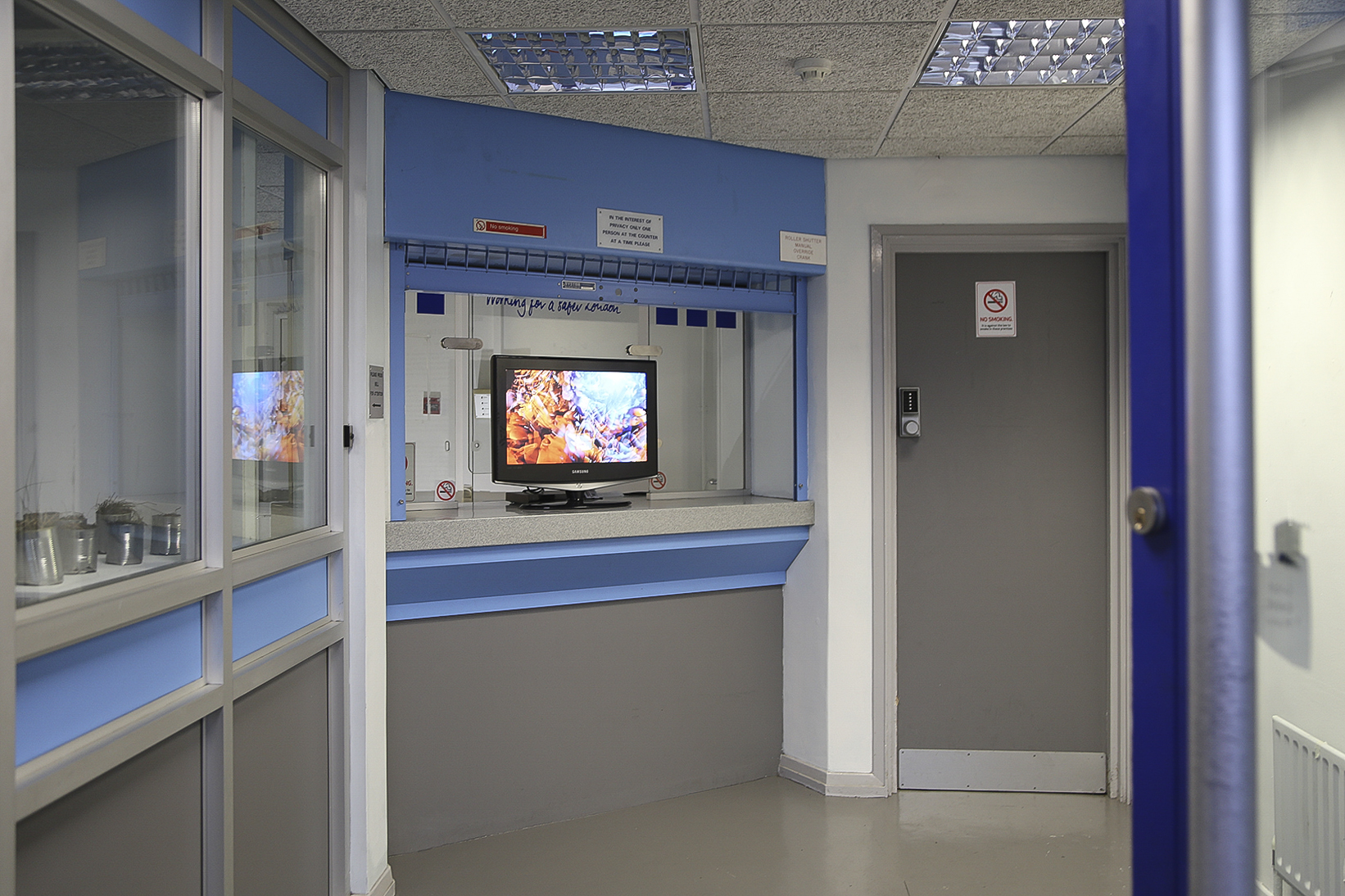
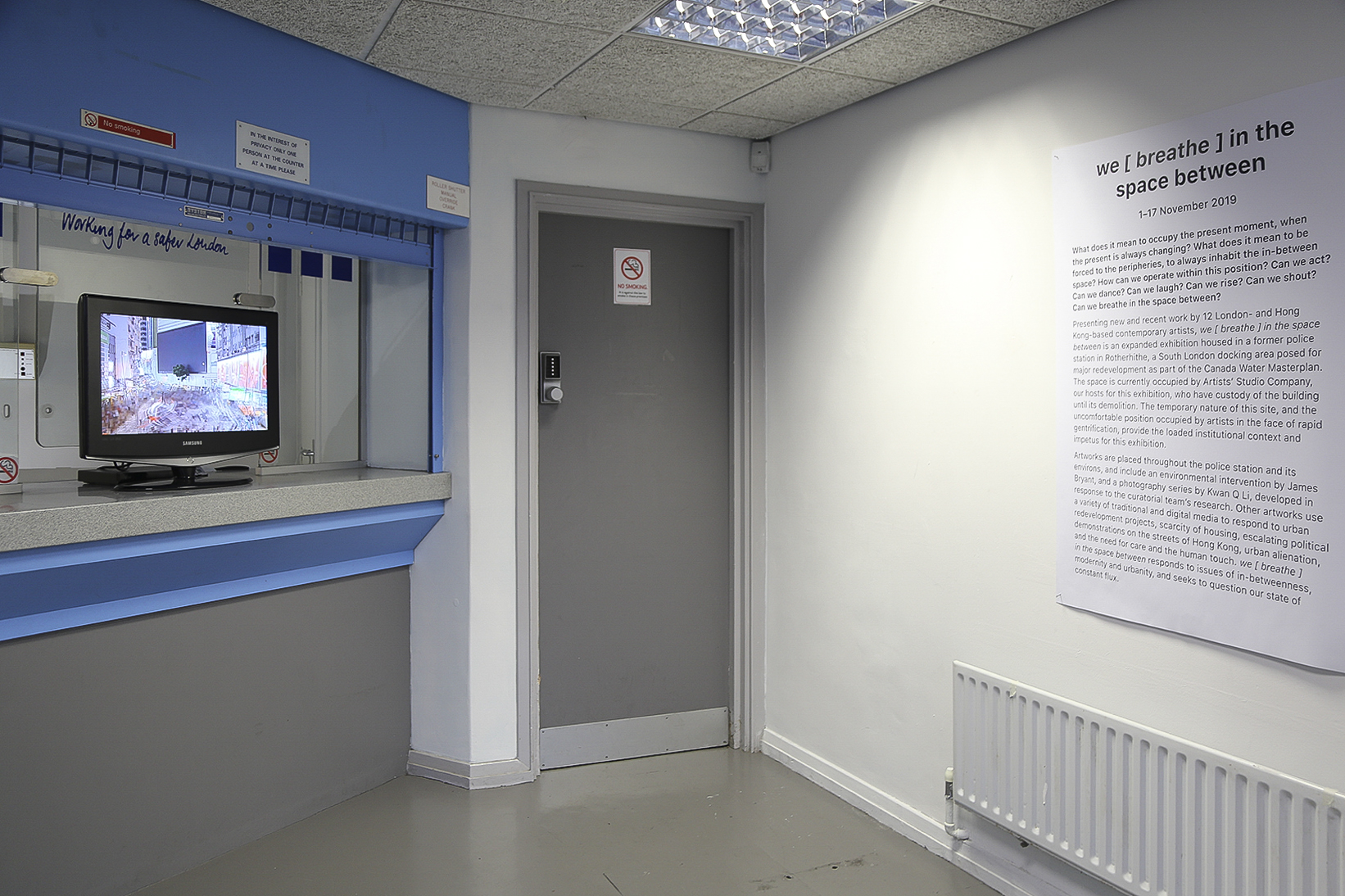
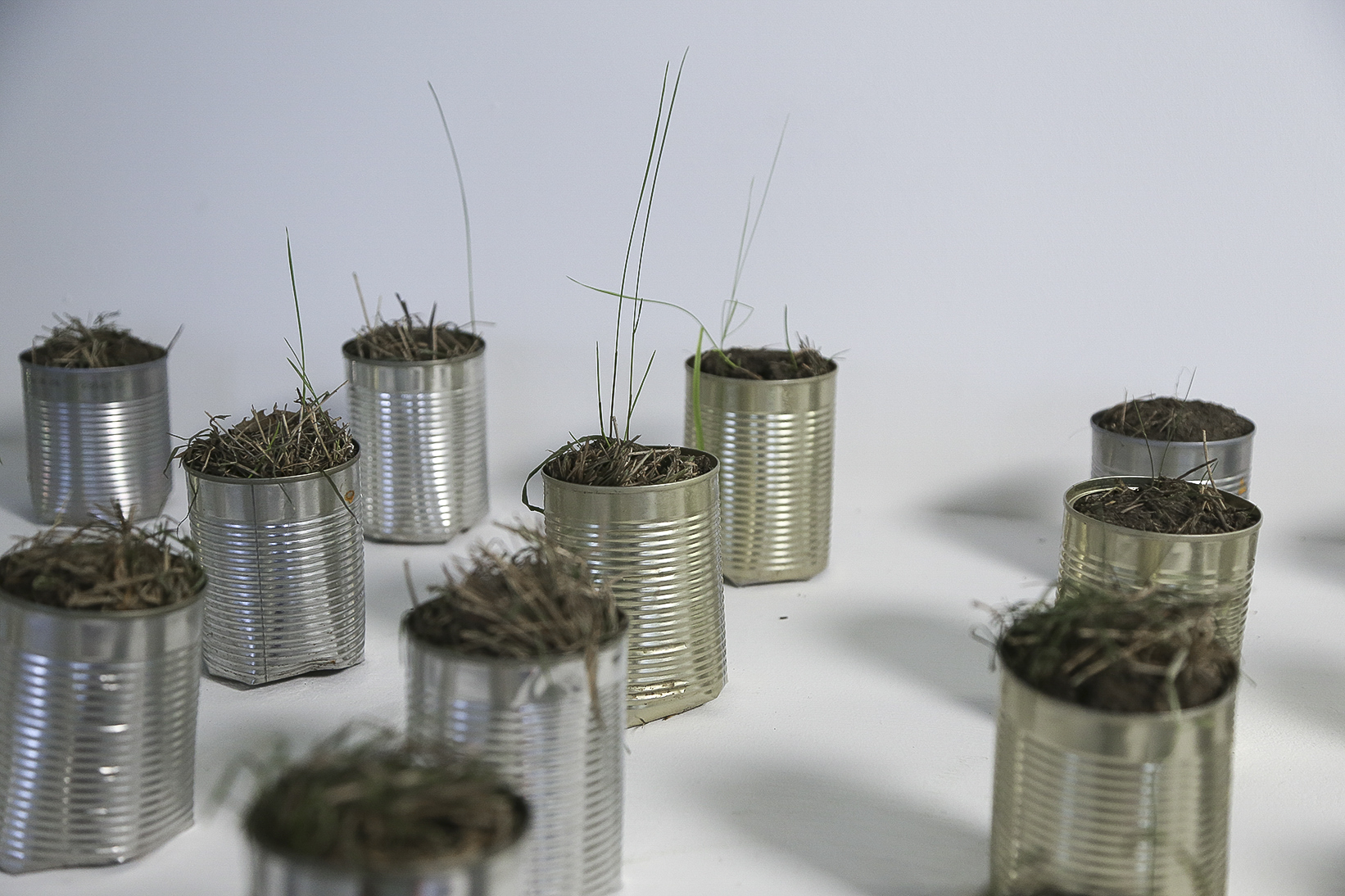



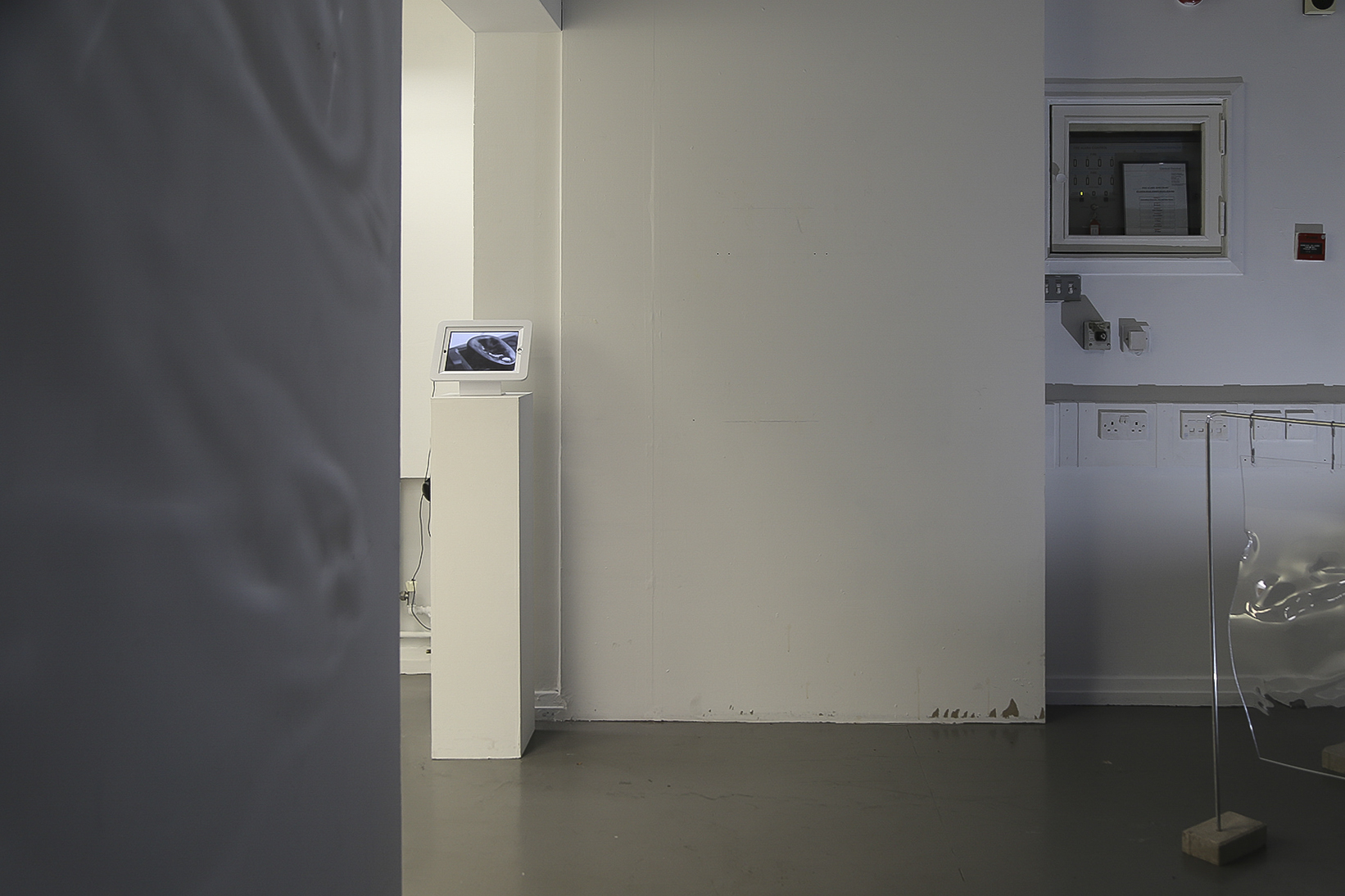
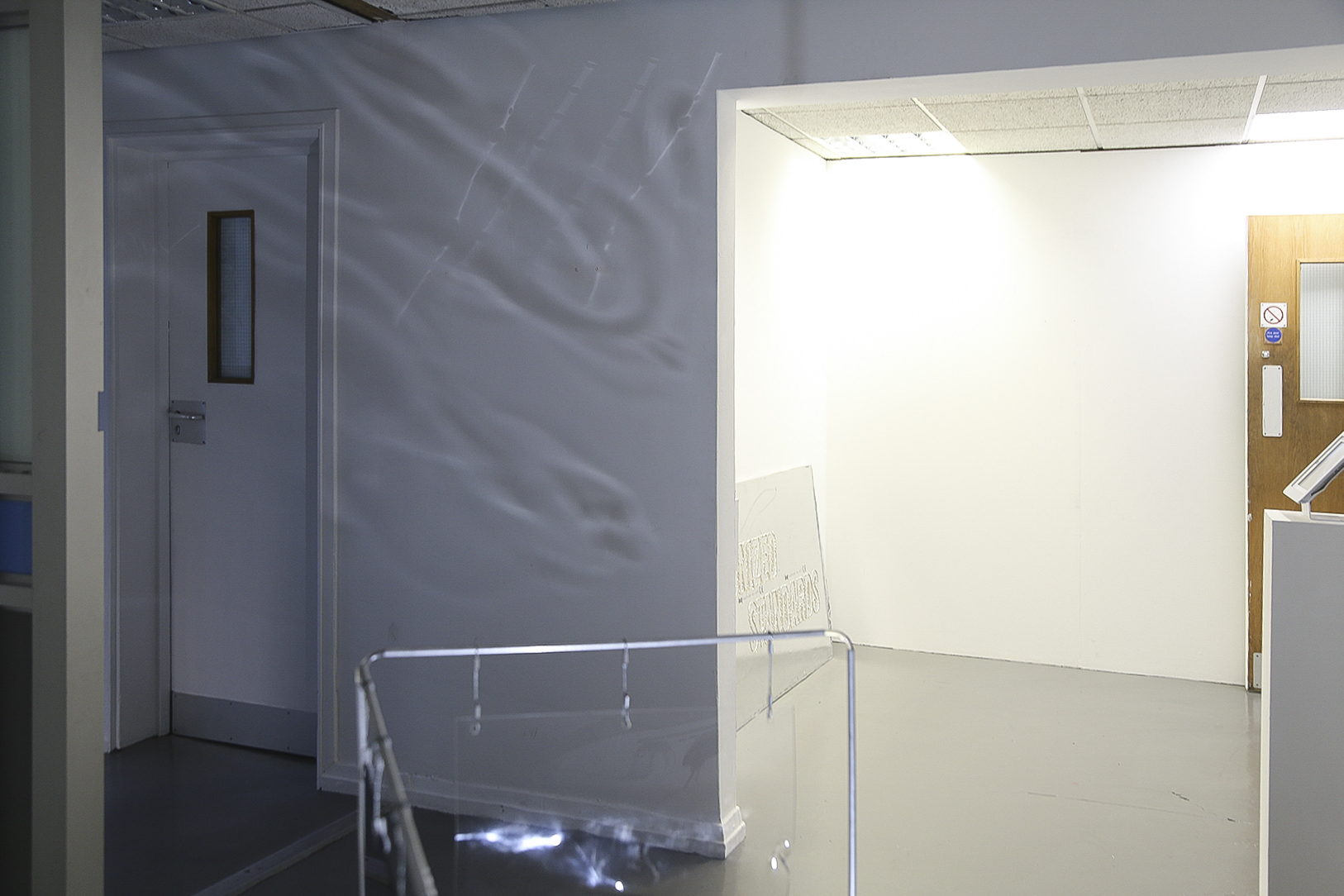
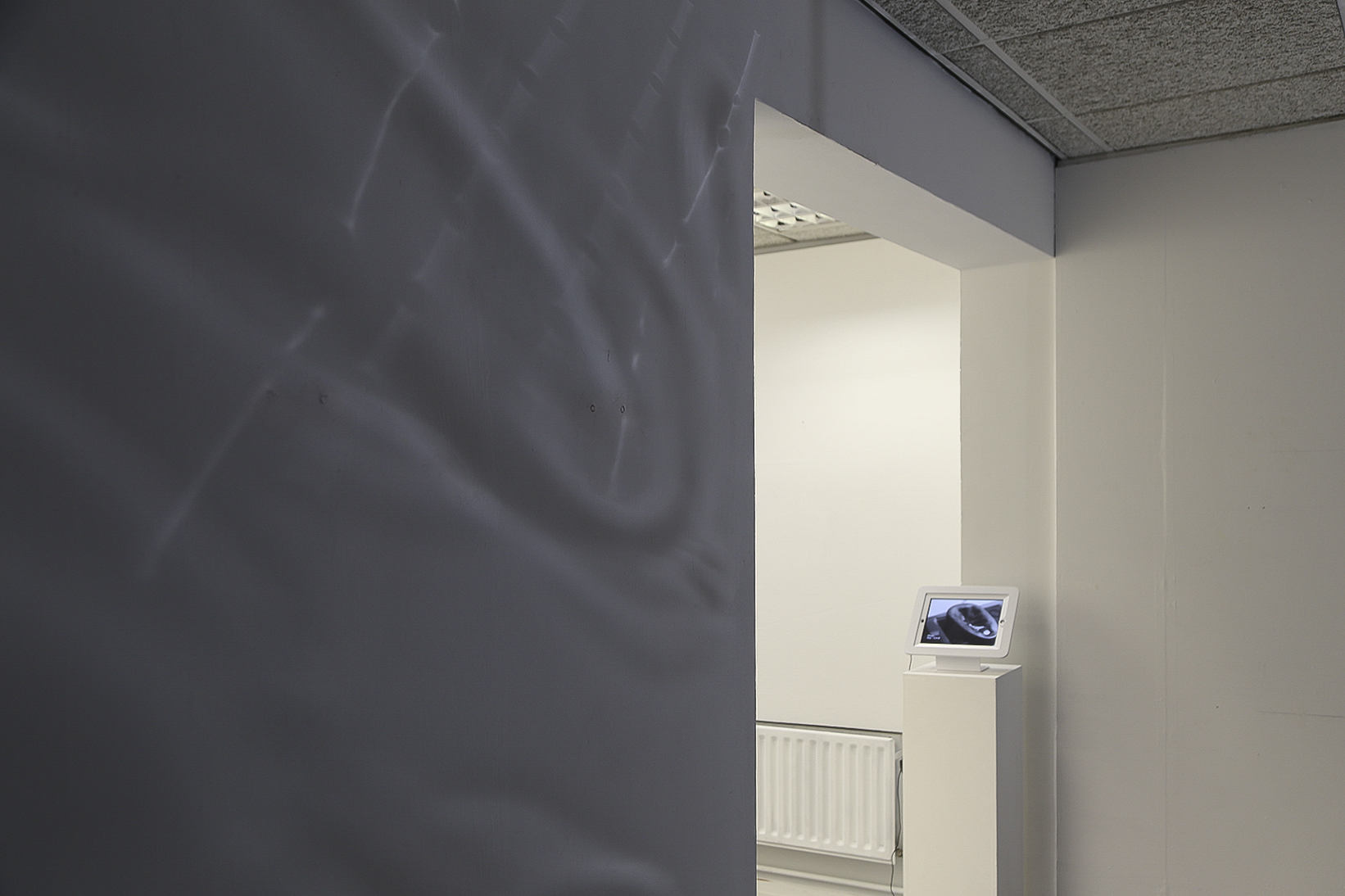




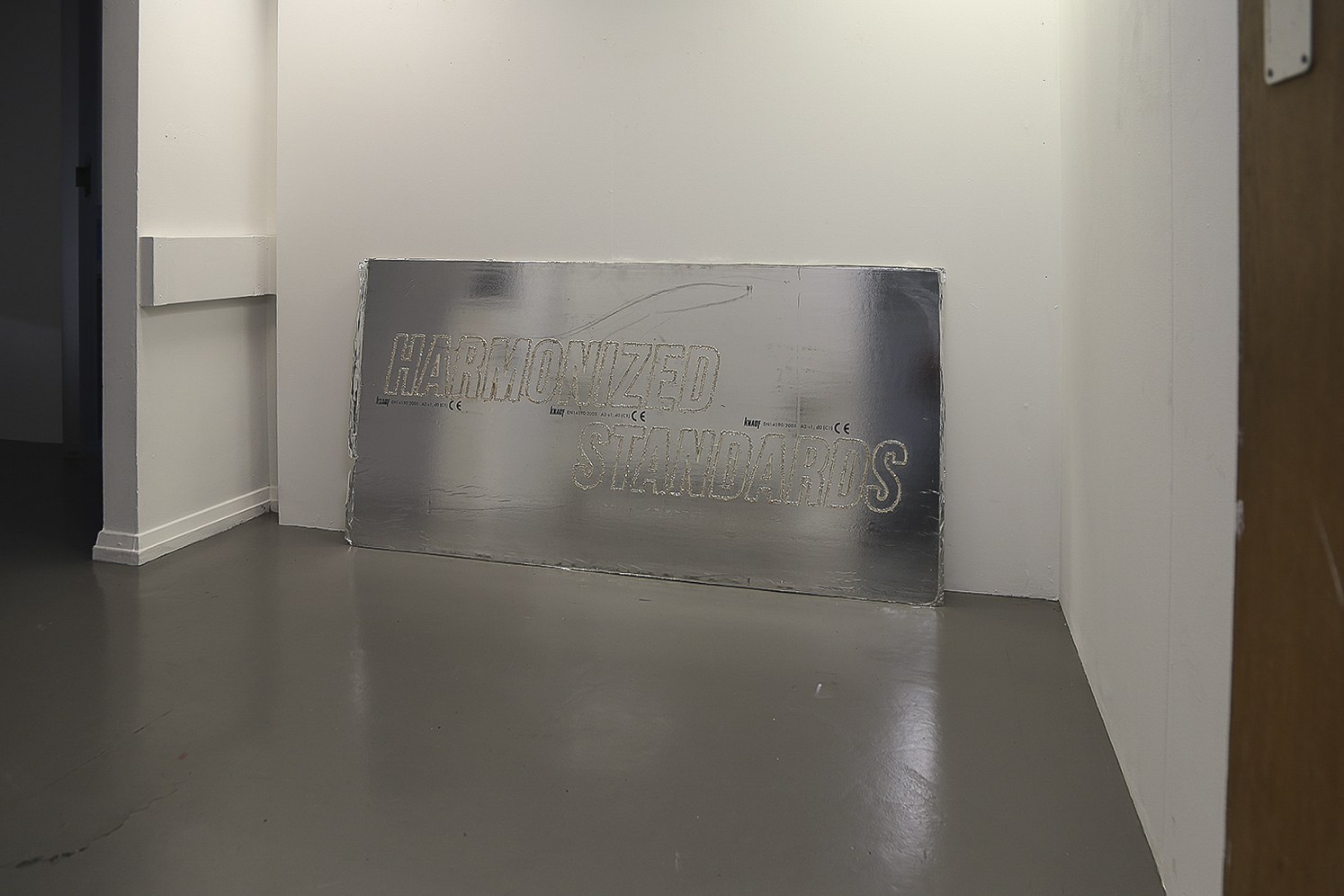
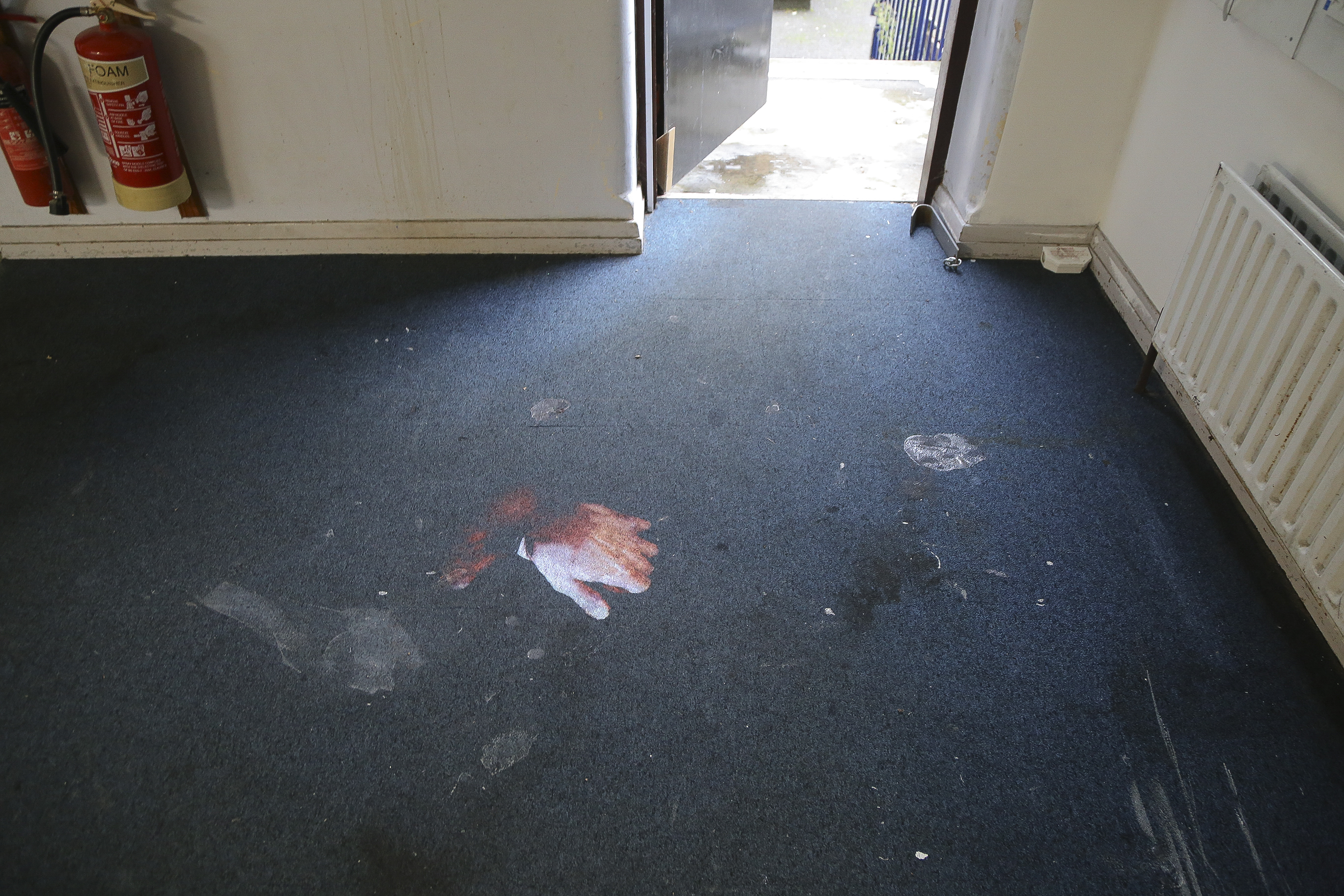

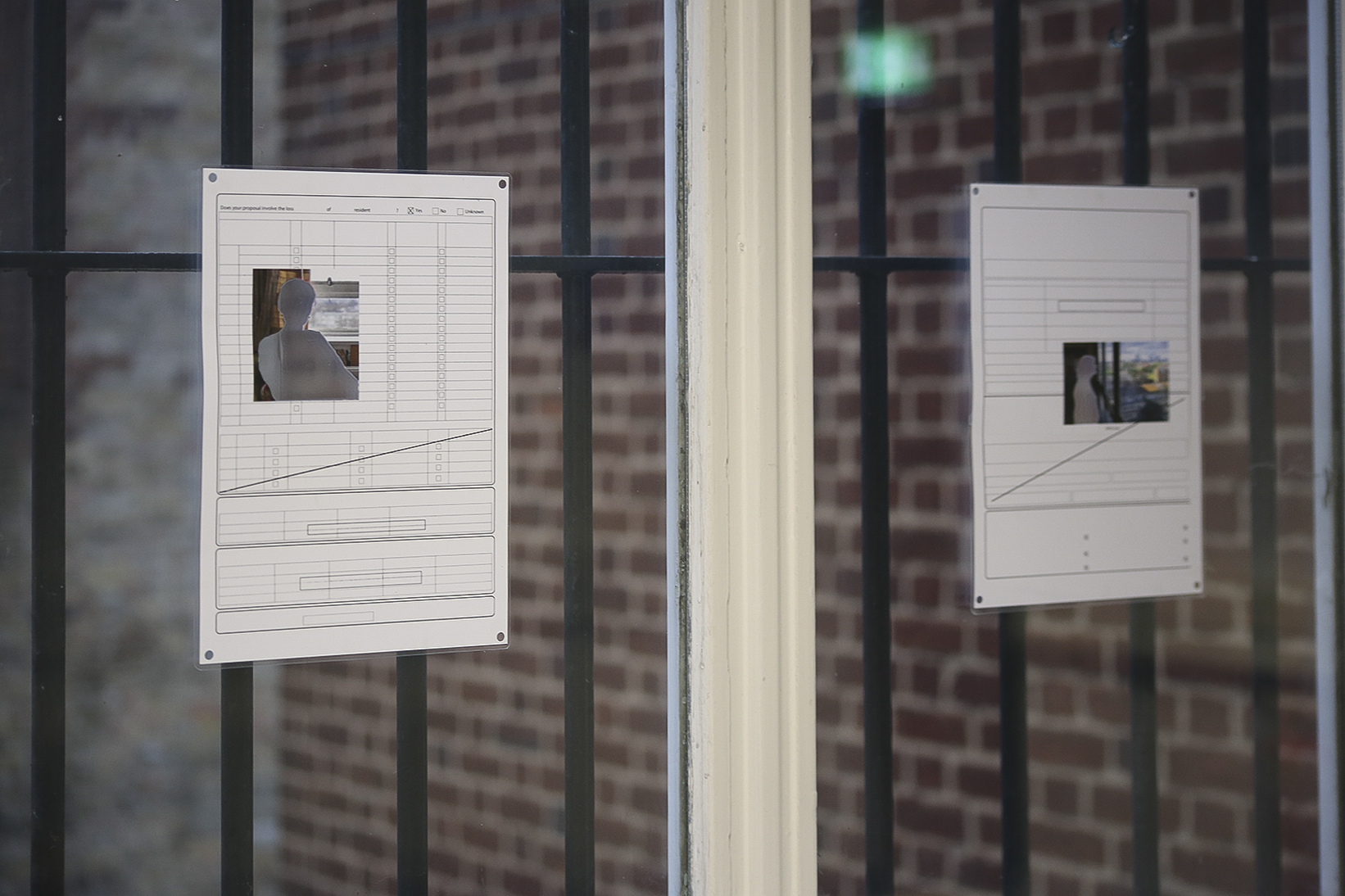


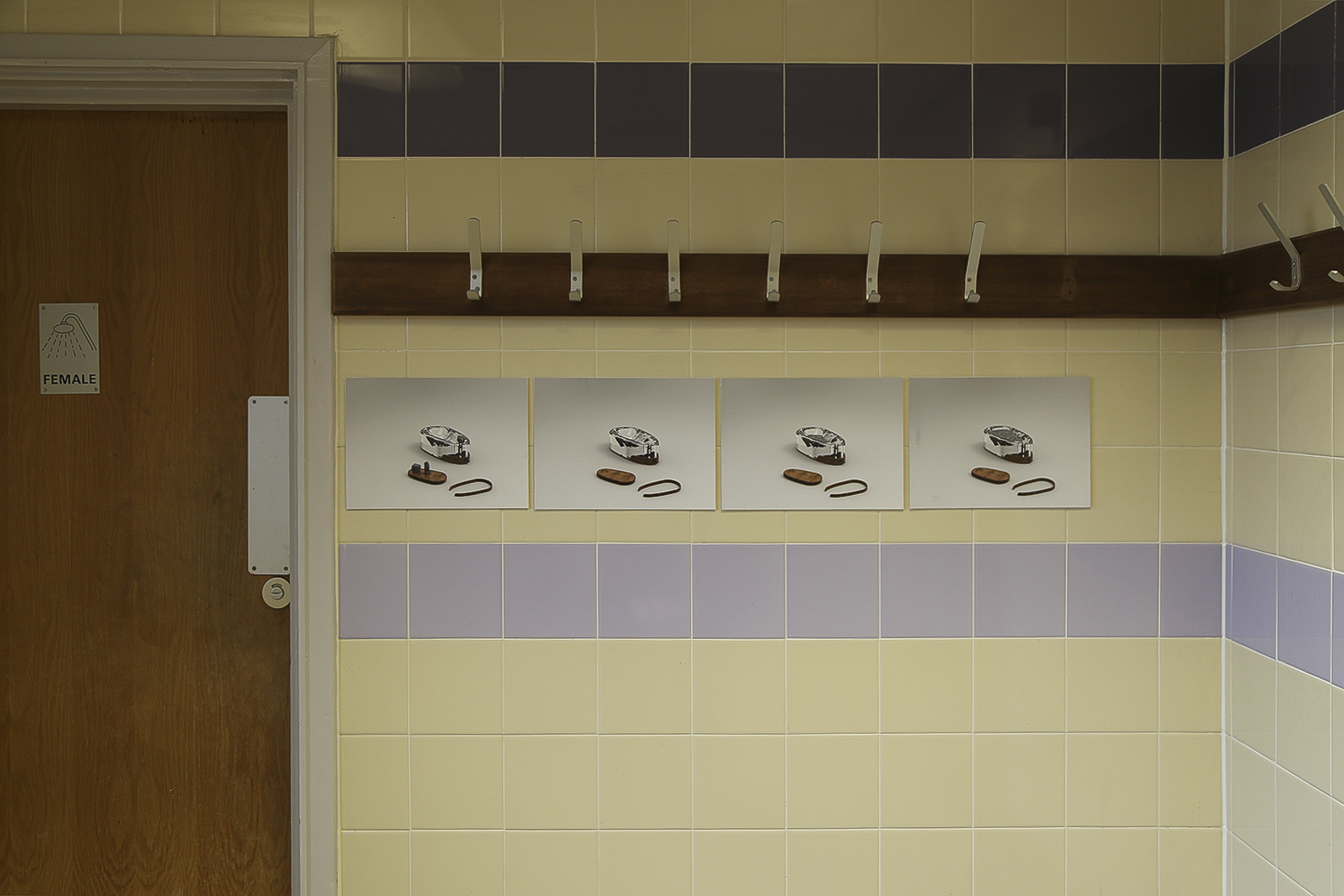


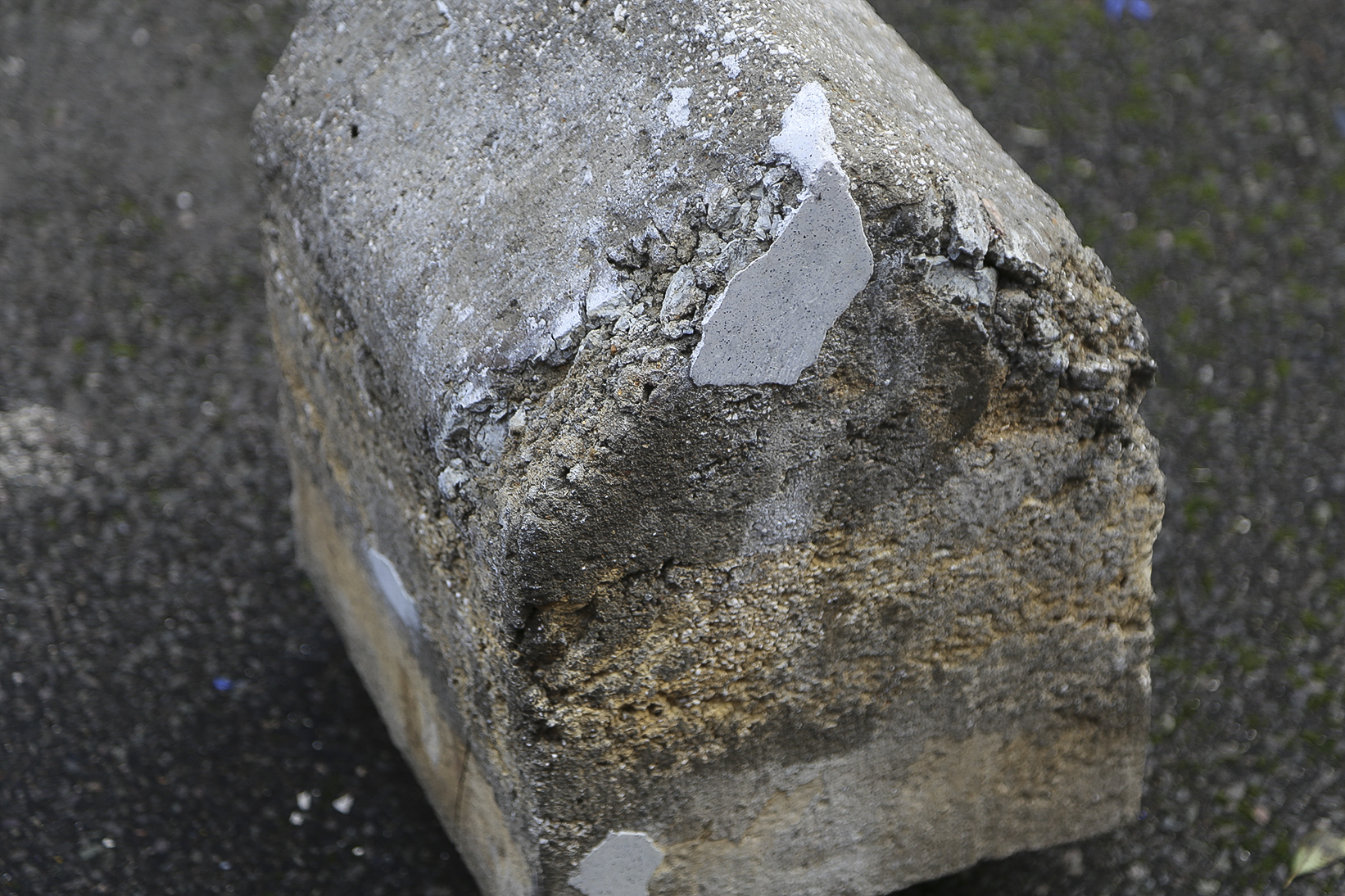


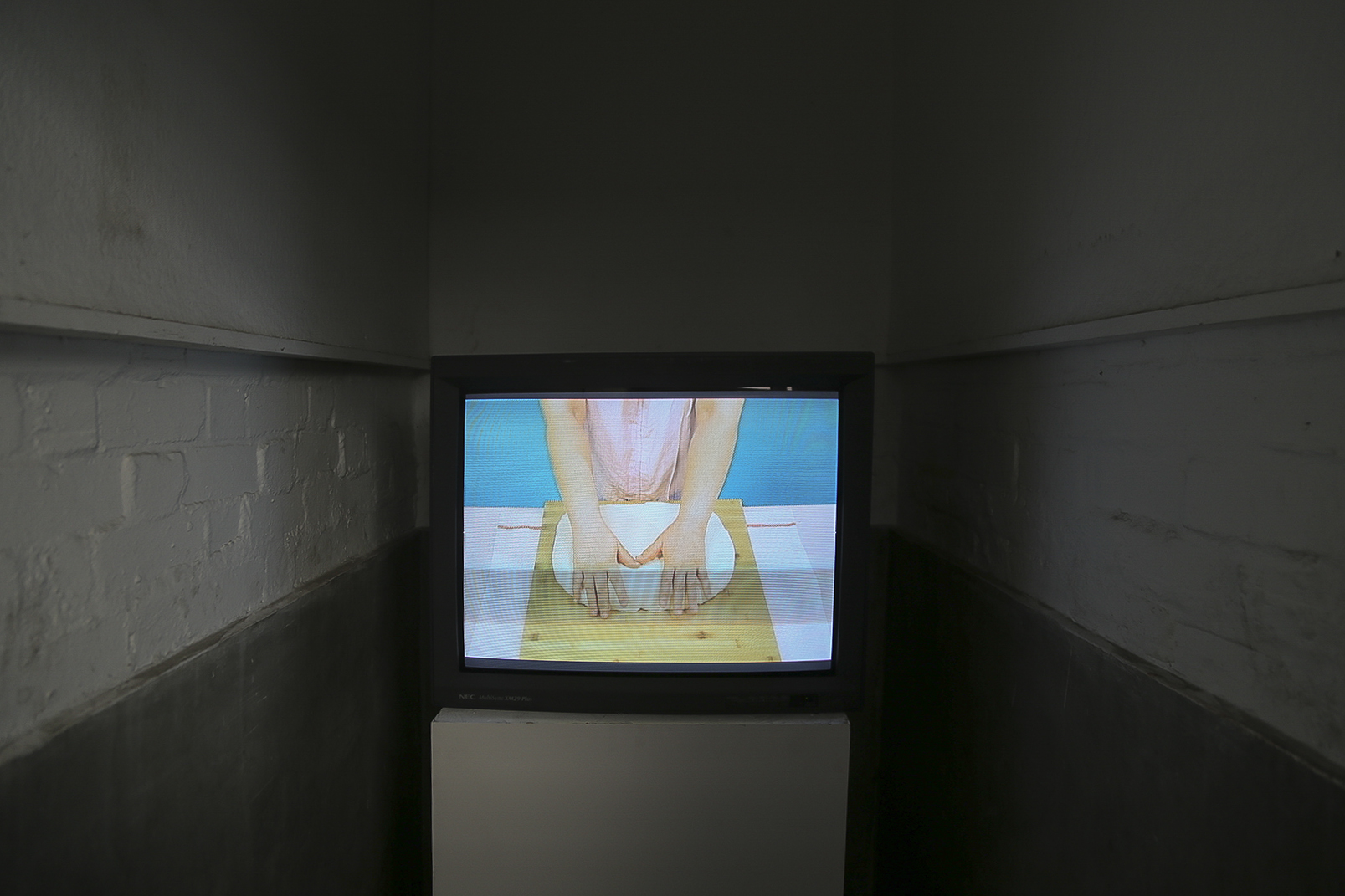
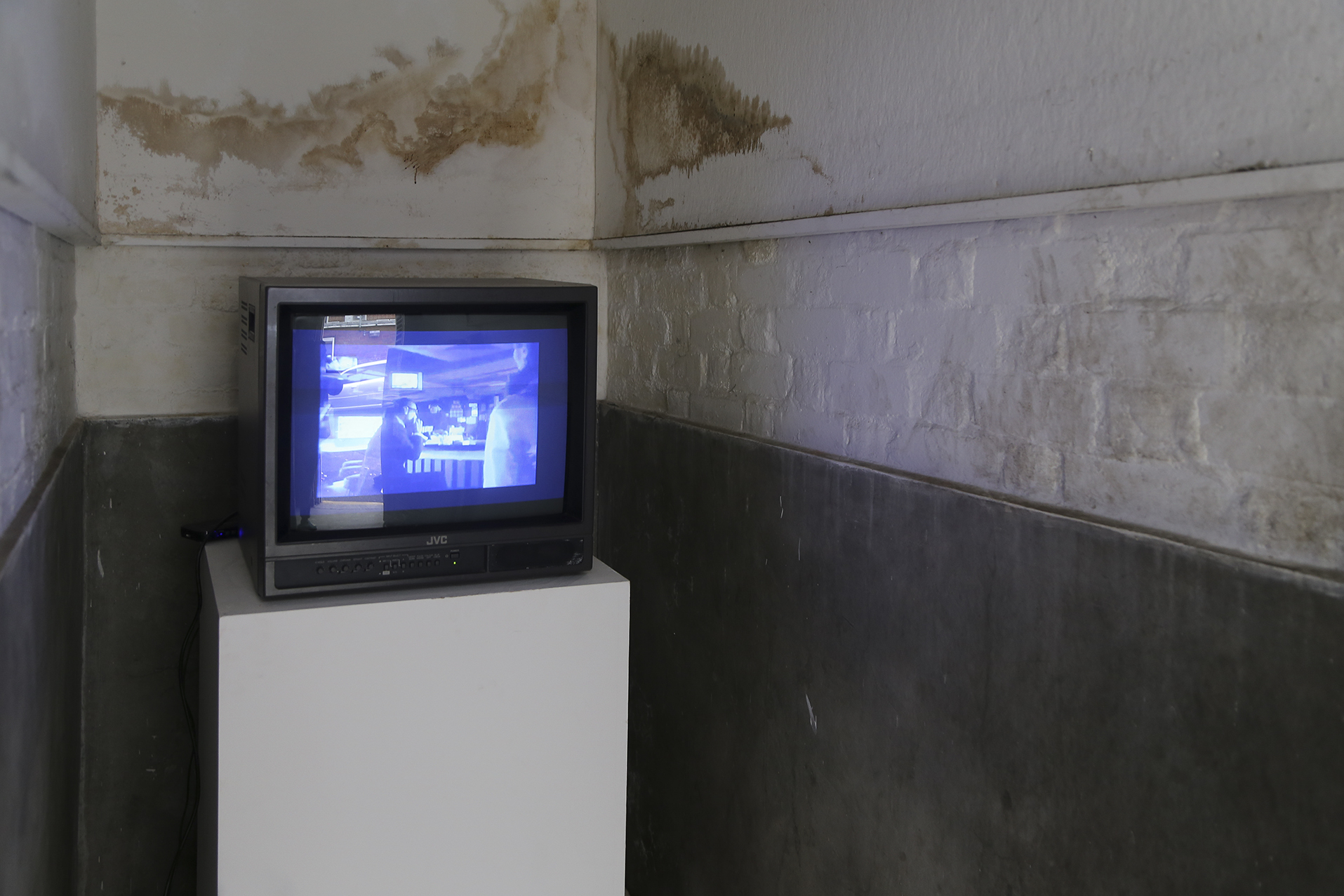
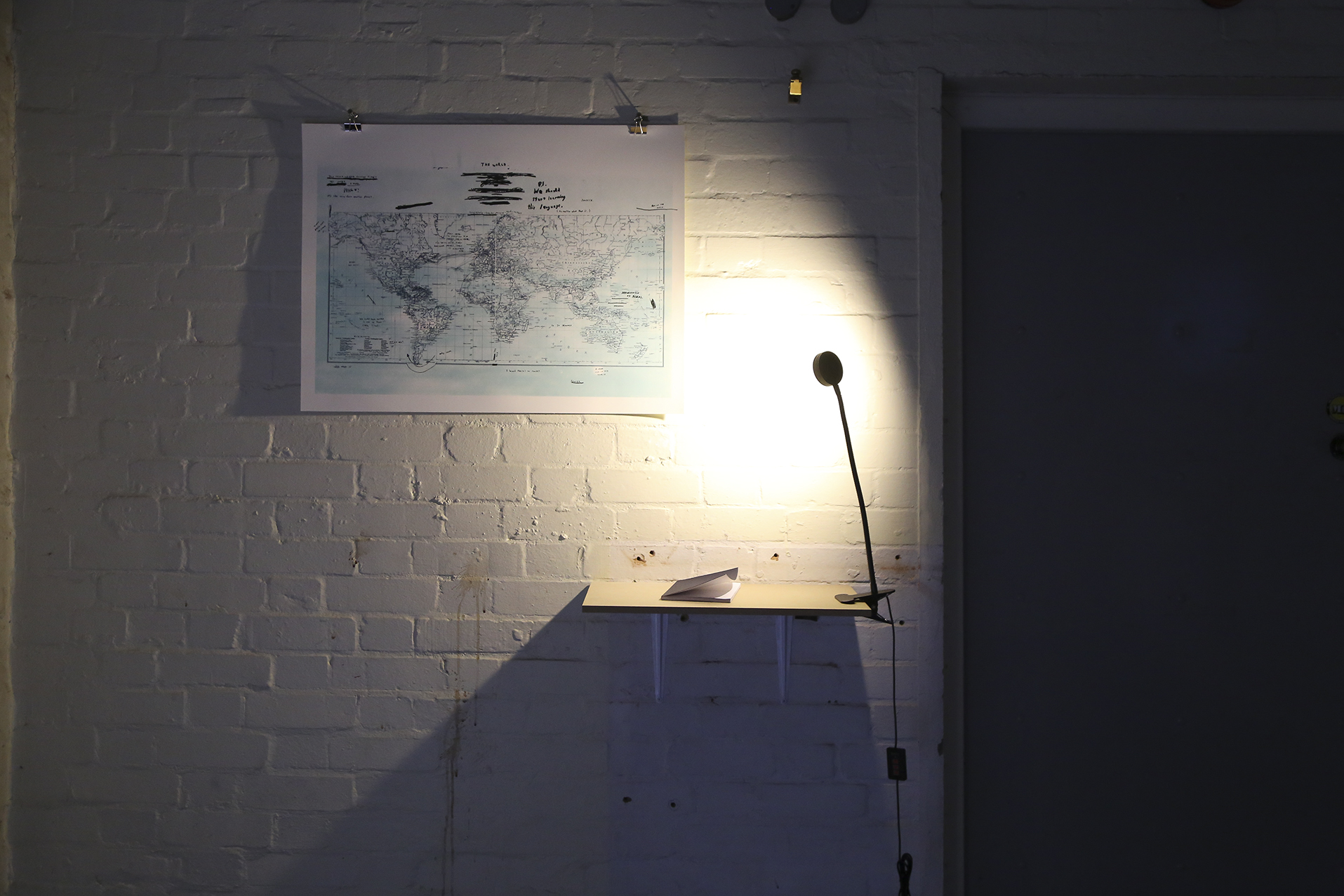

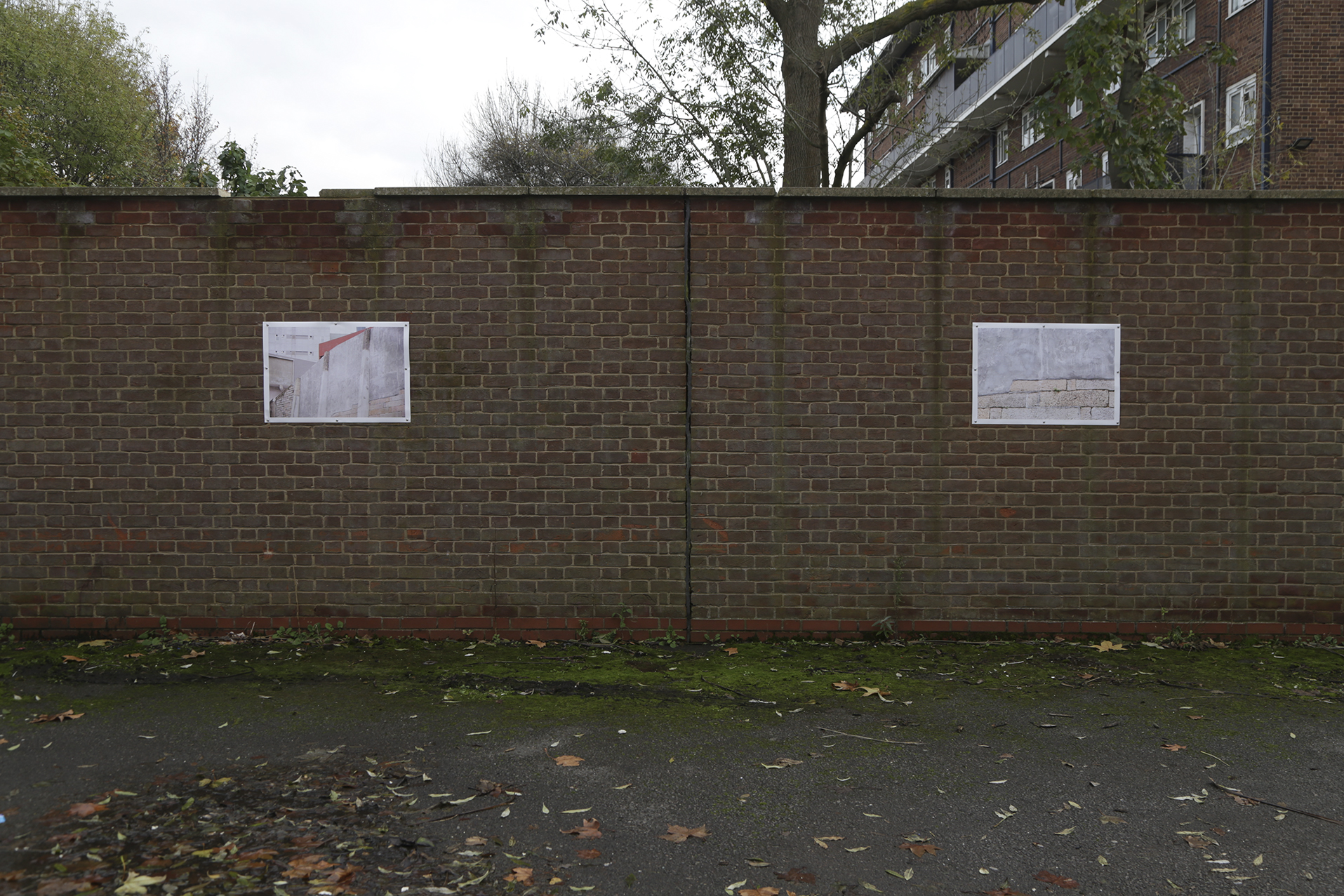


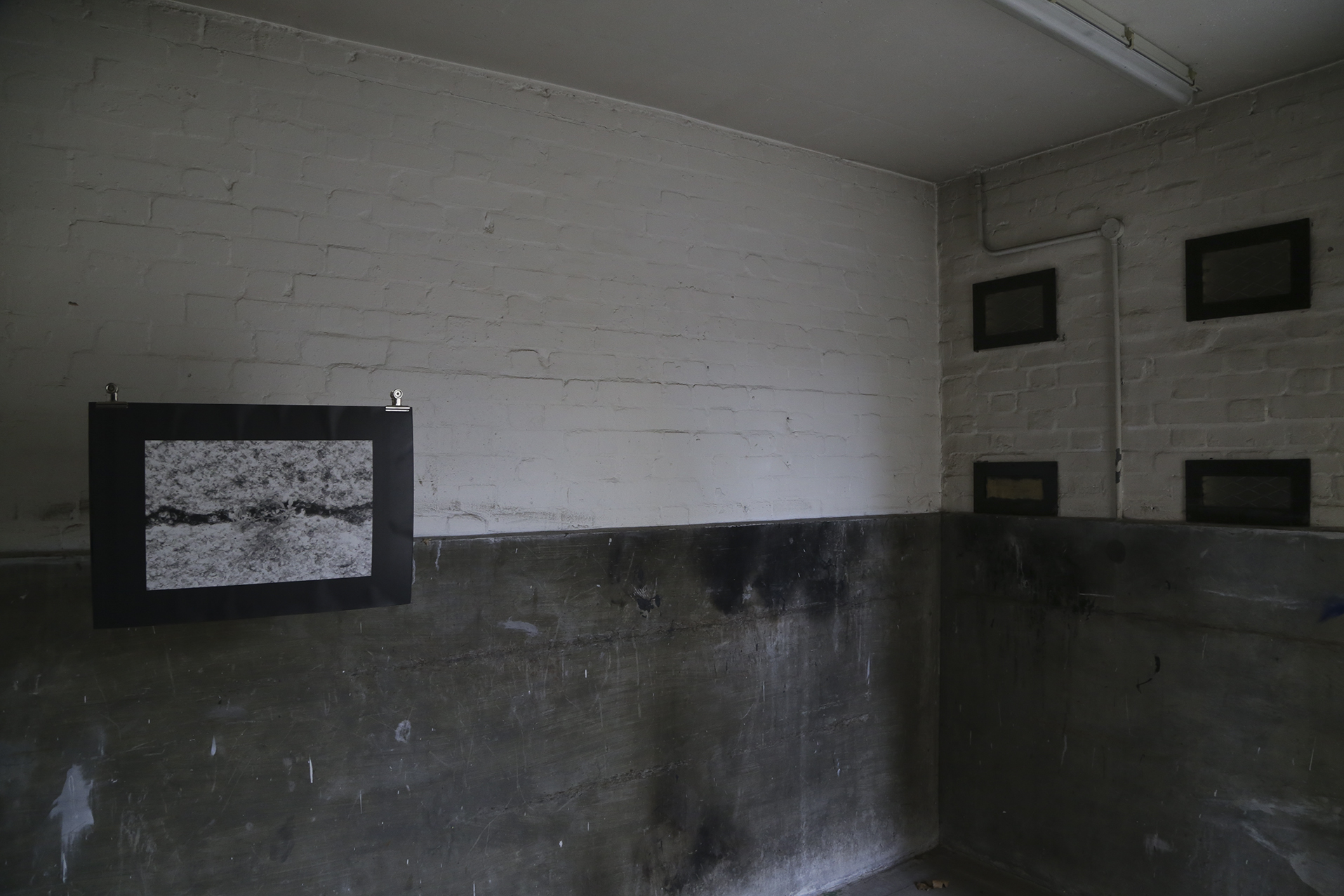
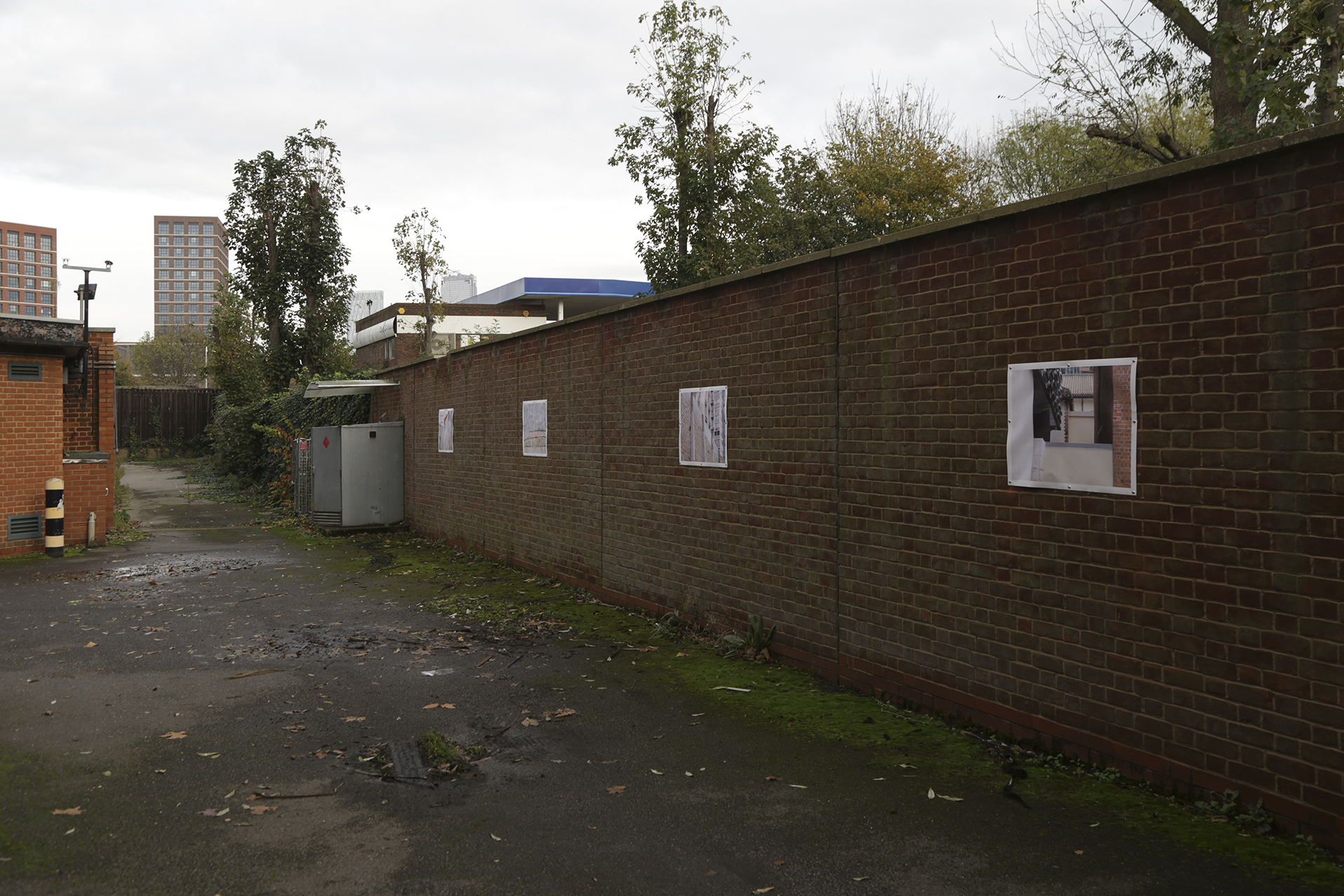
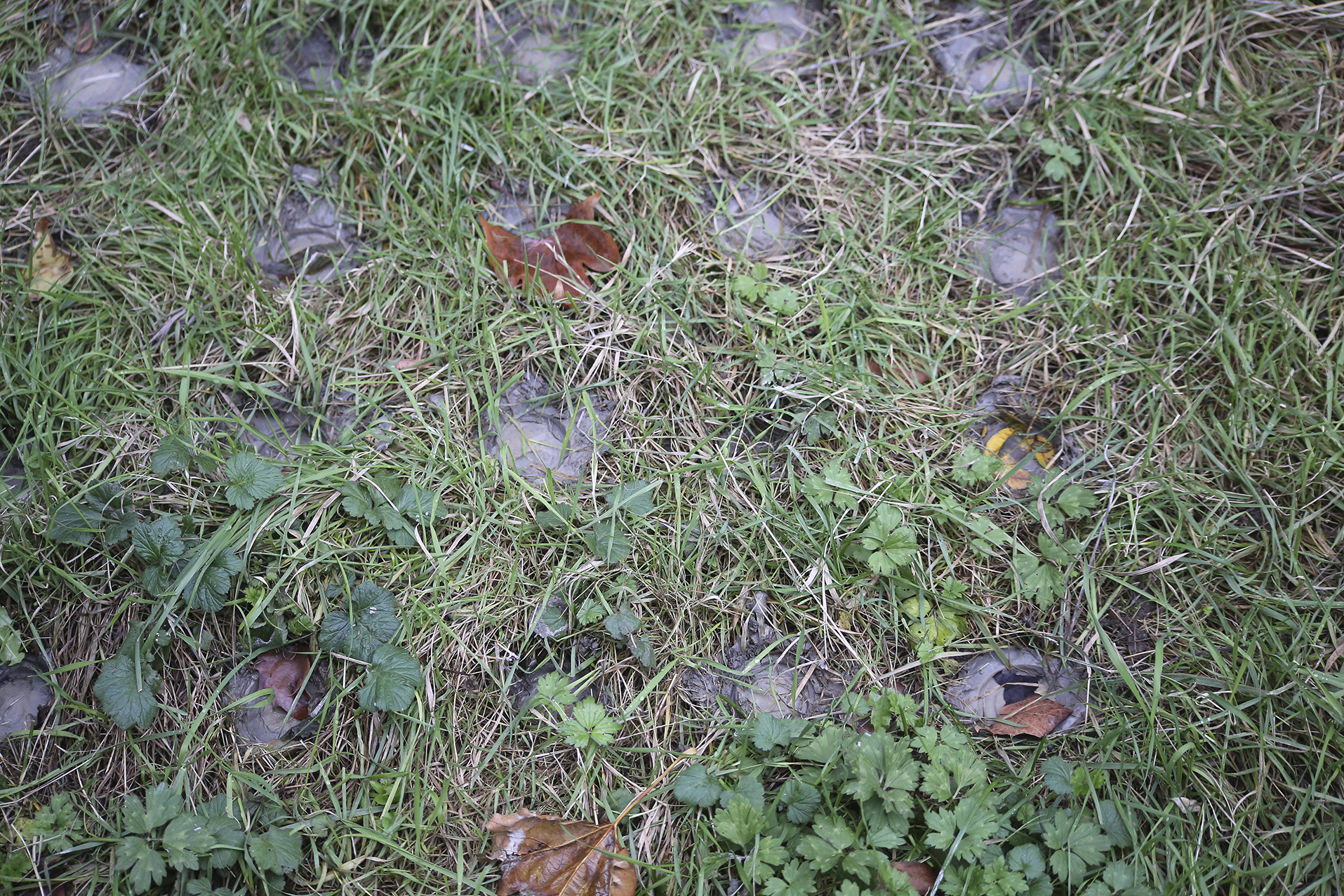
we [ breathe ] in the space between
1–17 November, 2019
ASC MIR Project Space — Former Rotherhithe Police Station, 99 Lower Road, SE16 2XQ
website: https://inthespacebetween.co.uk/
Featured artists: James Bryant, Chan Ka Kiu, Kathryn Graham, Wu Jiaru, Kwan Q Li, Muyao Li, Flavio Mancini, Jun Wang & Bonnie Wong, Ben Yau, Camille Yvert, Mamoru Watanbe
we [ breathe ] in the space between was an expanded exhibition responding to issues of in-betweenness, modernity, and urbanity. Traversing multiple disciplines, it included new work by 12 London- and Hong Kong-based contemporary artists, working across sculpture, audio/visual and digital installation, performance and product design.
we [ breathe ] in the space between was exhibited in a former police station in Rotherhithe, a South London docking area posed for major redevelopment as part of the Canada Water Masterplan. The space is currently occupied by Artists’ Studio Company, our hosts for this exhibition, who have custody of the building until its demolition. ASC studios is one of the largest affordable artist studio providers in the UK. The temporary nature of this site, and the uncomfortable position occupied by artists in the face of rapid gentrification, provided the loaded institutional context and impetus for this exhibition.
we [ breathe ] in the space between seeked to question our state of constant flux. What does it mean to occupy the present moment, when the present is always changing? What does it mean to be forced to the peripheries, to always inhabit the in-between space? How can we operate within this position? Can we act? Can we dance? Can we laugh? Can we rise? Can we shout? Can we breathe in the space between?
This is a co-curated exhibition by Krishna Balakrishnan, Rosa Abbott, Issy Casey, Kateřina Čuprová, Nina Lissone, Clara Wong, and Siyan Zhang.
< PREVIOUS SHOW NEXT SHOW >
1–17 November, 2019
ASC MIR Project Space — Former Rotherhithe Police Station, 99 Lower Road, SE16 2XQ
website: https://inthespacebetween.co.uk/
Featured artists: James Bryant, Chan Ka Kiu, Kathryn Graham, Wu Jiaru, Kwan Q Li, Muyao Li, Flavio Mancini, Jun Wang & Bonnie Wong, Ben Yau, Camille Yvert, Mamoru Watanbe
we [ breathe ] in the space between was an expanded exhibition responding to issues of in-betweenness, modernity, and urbanity. Traversing multiple disciplines, it included new work by 12 London- and Hong Kong-based contemporary artists, working across sculpture, audio/visual and digital installation, performance and product design.
we [ breathe ] in the space between was exhibited in a former police station in Rotherhithe, a South London docking area posed for major redevelopment as part of the Canada Water Masterplan. The space is currently occupied by Artists’ Studio Company, our hosts for this exhibition, who have custody of the building until its demolition. ASC studios is one of the largest affordable artist studio providers in the UK. The temporary nature of this site, and the uncomfortable position occupied by artists in the face of rapid gentrification, provided the loaded institutional context and impetus for this exhibition.
we [ breathe ] in the space between seeked to question our state of constant flux. What does it mean to occupy the present moment, when the present is always changing? What does it mean to be forced to the peripheries, to always inhabit the in-between space? How can we operate within this position? Can we act? Can we dance? Can we laugh? Can we rise? Can we shout? Can we breathe in the space between?
This is a co-curated exhibition by Krishna Balakrishnan, Rosa Abbott, Issy Casey, Kateřina Čuprová, Nina Lissone, Clara Wong, and Siyan Zhang.
< PREVIOUS SHOW NEXT SHOW >
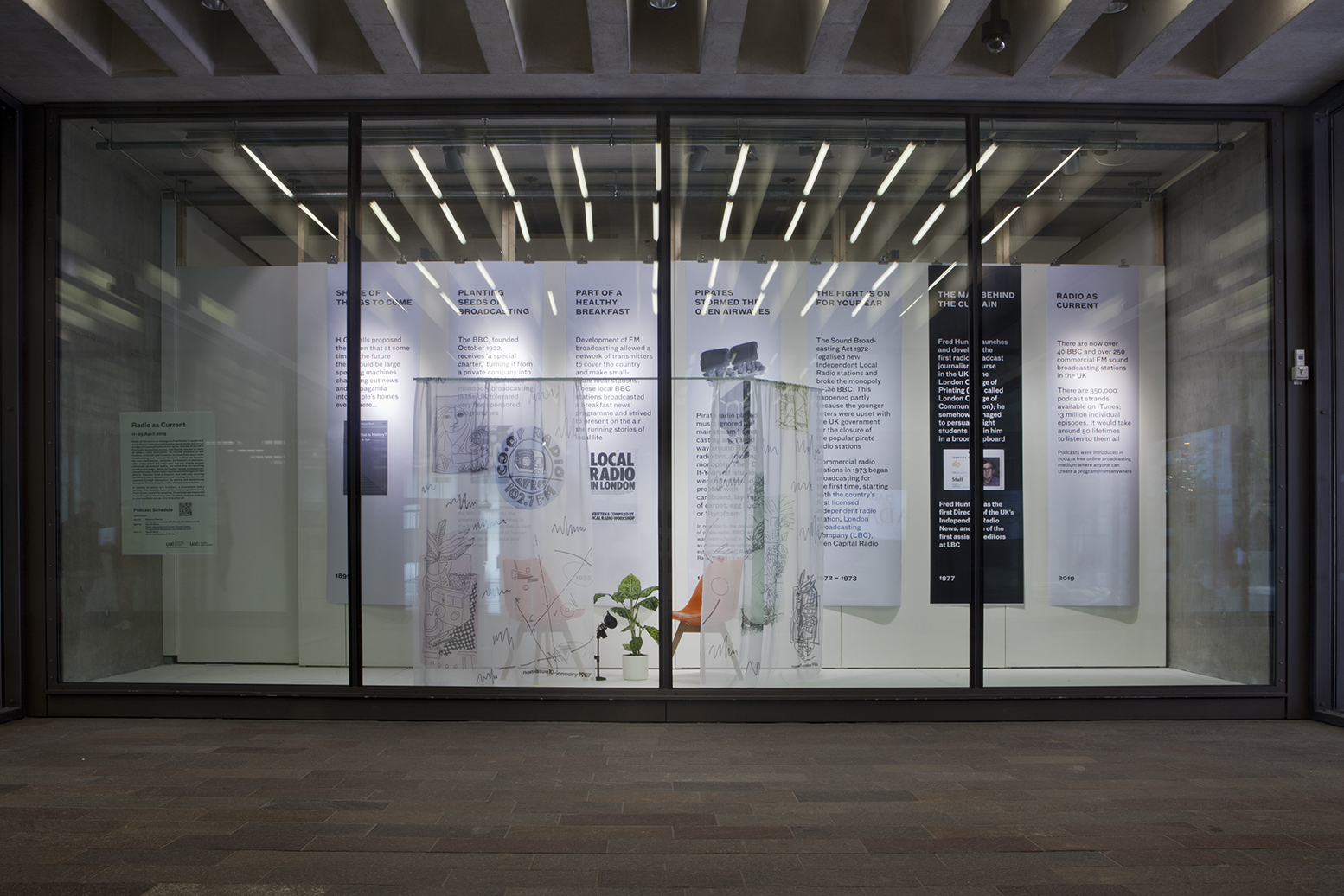
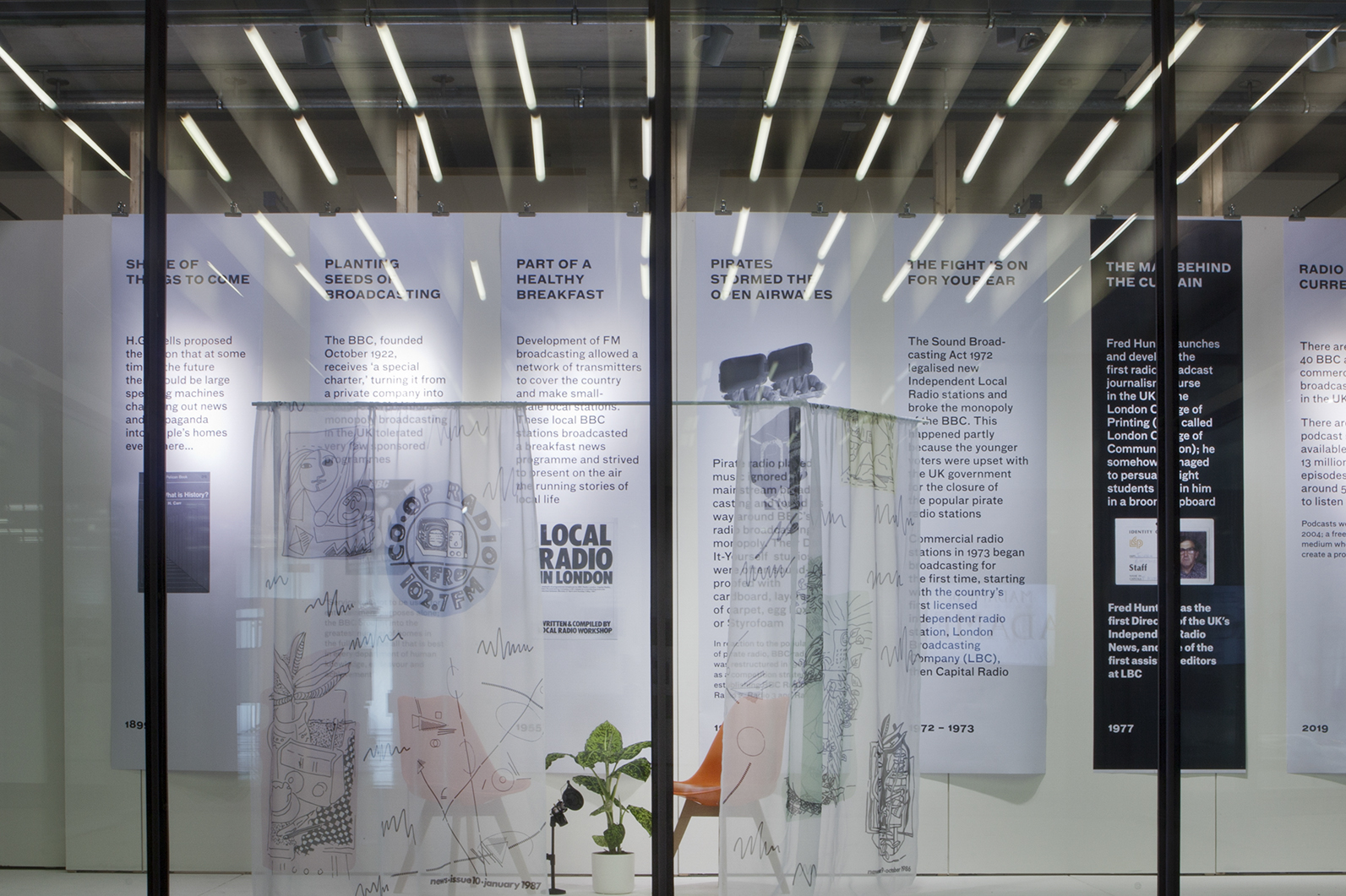

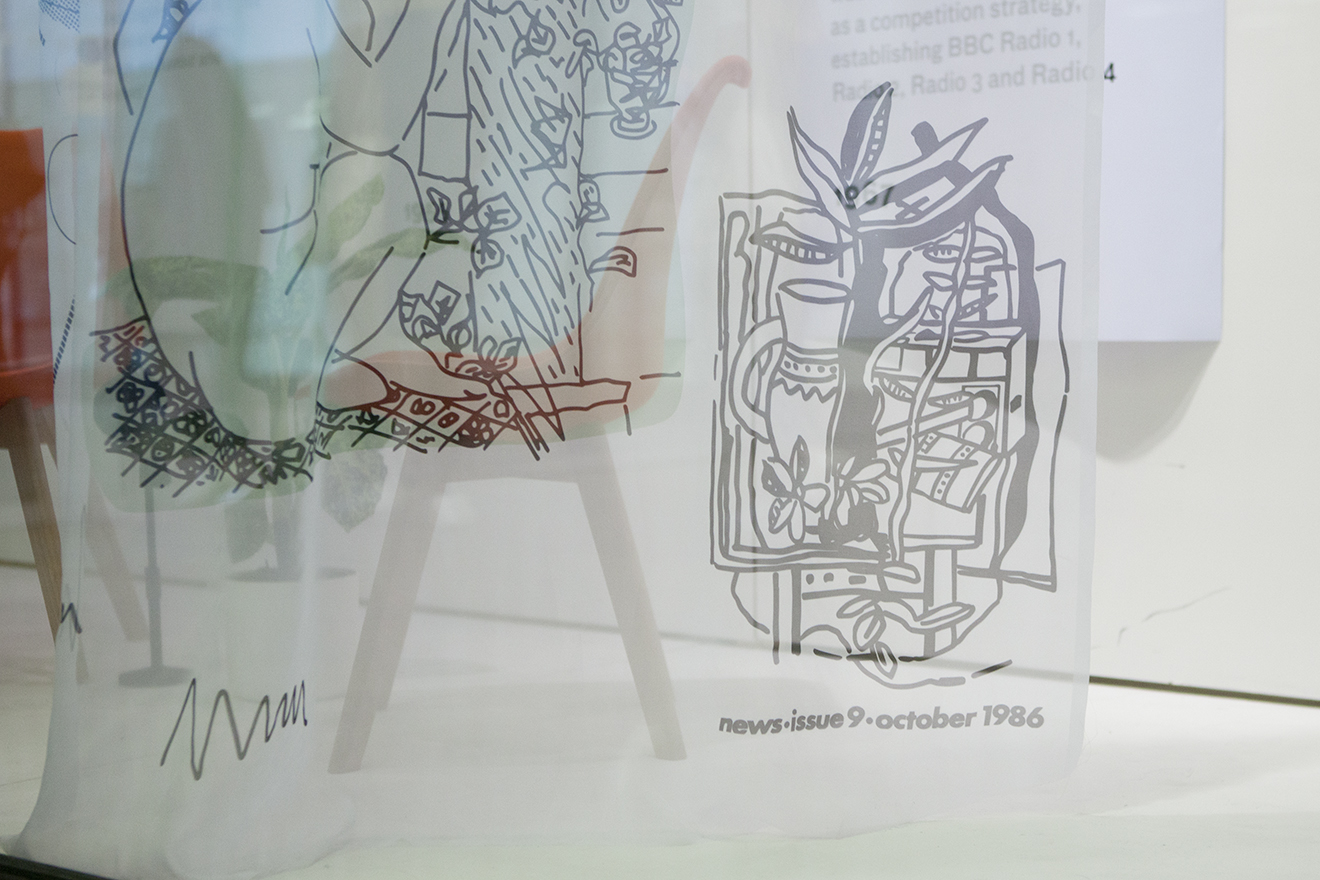




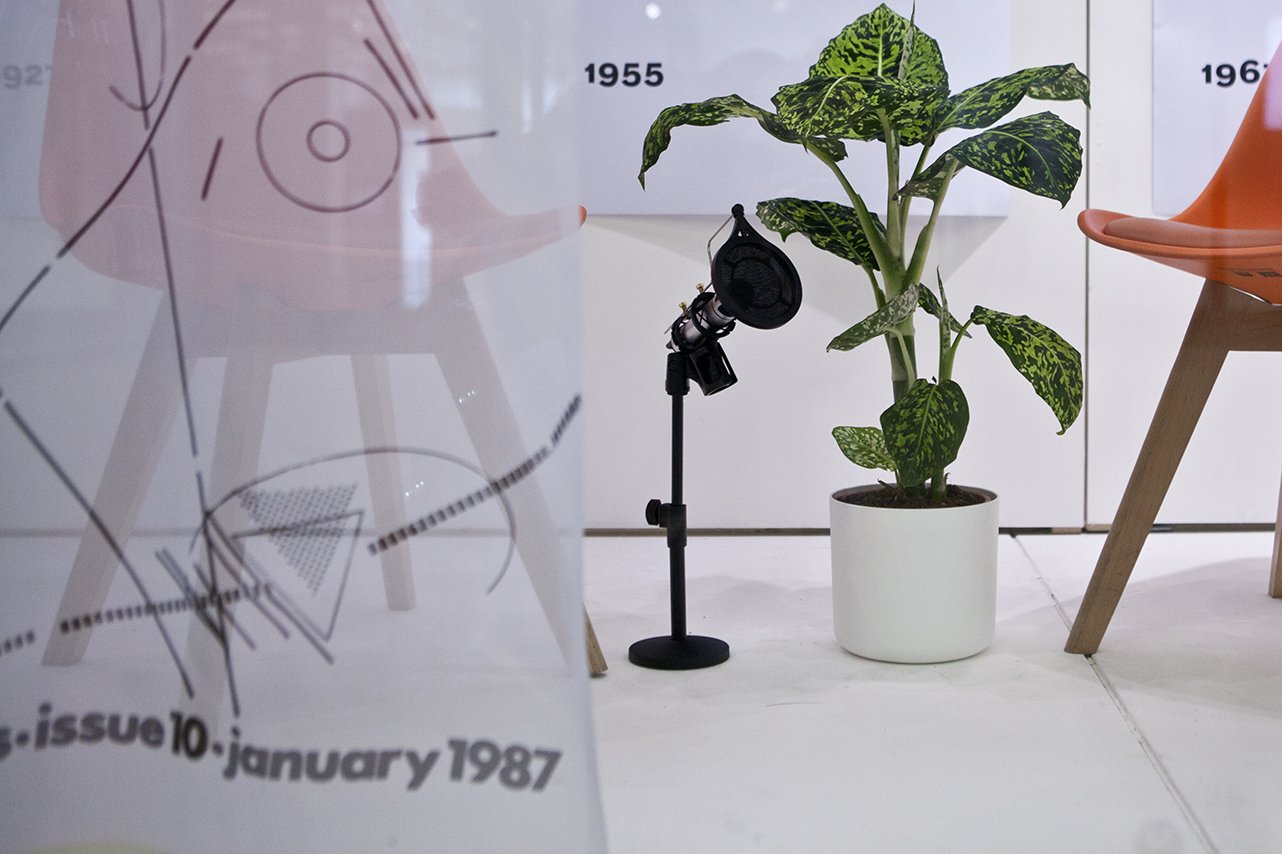

Radio as Current
Central Saint Martins Window Gallery
Granary Building, 1 Granary Square, Kings Cross, London, N1C 4AA
11–25 April 2019
Radio as Current is an exhibition about Fred Hunter’s career and work. Hunter was a journalist and a course leader at London College of Communication in the 1970s, founder of the UK’s first radio journalism course, and thereby teacher to many of today’s radio journalists. As listeners of podcasts, after video killed the radio star and our mobile phones ultimately decimated media, we asked how his teaching would sound today. Radio as Current means contemporary disruptiveness. Public radio reports and challenges current affairs. Whether it be a cheerful chat with your morning coffee or a stern debate with your evening tea, issues are resolved through discussion, by talking and establishing dialogue. Time and again, radio charges conversation.
A tableau of plants and furniture, a microphone and a curtain. The exhibition includes three podcast interview with and educator, radio broadcast journalist and artist who employs podcast in their practice. Each interviews were aired on a scheduled date and looped, the podcasts were also available online. In the background are panels that represent a brief fragmented history of radio broadcast journalism higher education in the UK. While this exhibition was informative and displayed materials from the Fred Hunter archive at London College of Communication (LCC), it also attempted to challenge the notion of radio broadcast journalism’s current role.
Podcast interviews include: Rebecca Pearce, Acting Course Leader, BA (Hons) Journalism at LCC, Martin Shaw, Radio Journalist at BBC Cornwall and former Course Leader, Postgraduate Broadcast Journalism at LCC and Daniel Kelly, Artist and founder, DKUK.
This project was in partnership with University Archives and Special Collections Centre held at the University of Arts London, London College of Communication.
Image: Glenn Michael Harper
< PREVIOUS SHOW NEXT SHOW >
Central Saint Martins Window Gallery
Granary Building, 1 Granary Square, Kings Cross, London, N1C 4AA
11–25 April 2019
Radio as Current is an exhibition about Fred Hunter’s career and work. Hunter was a journalist and a course leader at London College of Communication in the 1970s, founder of the UK’s first radio journalism course, and thereby teacher to many of today’s radio journalists. As listeners of podcasts, after video killed the radio star and our mobile phones ultimately decimated media, we asked how his teaching would sound today. Radio as Current means contemporary disruptiveness. Public radio reports and challenges current affairs. Whether it be a cheerful chat with your morning coffee or a stern debate with your evening tea, issues are resolved through discussion, by talking and establishing dialogue. Time and again, radio charges conversation.
A tableau of plants and furniture, a microphone and a curtain. The exhibition includes three podcast interview with and educator, radio broadcast journalist and artist who employs podcast in their practice. Each interviews were aired on a scheduled date and looped, the podcasts were also available online. In the background are panels that represent a brief fragmented history of radio broadcast journalism higher education in the UK. While this exhibition was informative and displayed materials from the Fred Hunter archive at London College of Communication (LCC), it also attempted to challenge the notion of radio broadcast journalism’s current role.
Podcast interviews include: Rebecca Pearce, Acting Course Leader, BA (Hons) Journalism at LCC, Martin Shaw, Radio Journalist at BBC Cornwall and former Course Leader, Postgraduate Broadcast Journalism at LCC and Daniel Kelly, Artist and founder, DKUK.
This project was in partnership with University Archives and Special Collections Centre held at the University of Arts London, London College of Communication.
Image: Glenn Michael Harper
< PREVIOUS SHOW NEXT SHOW >
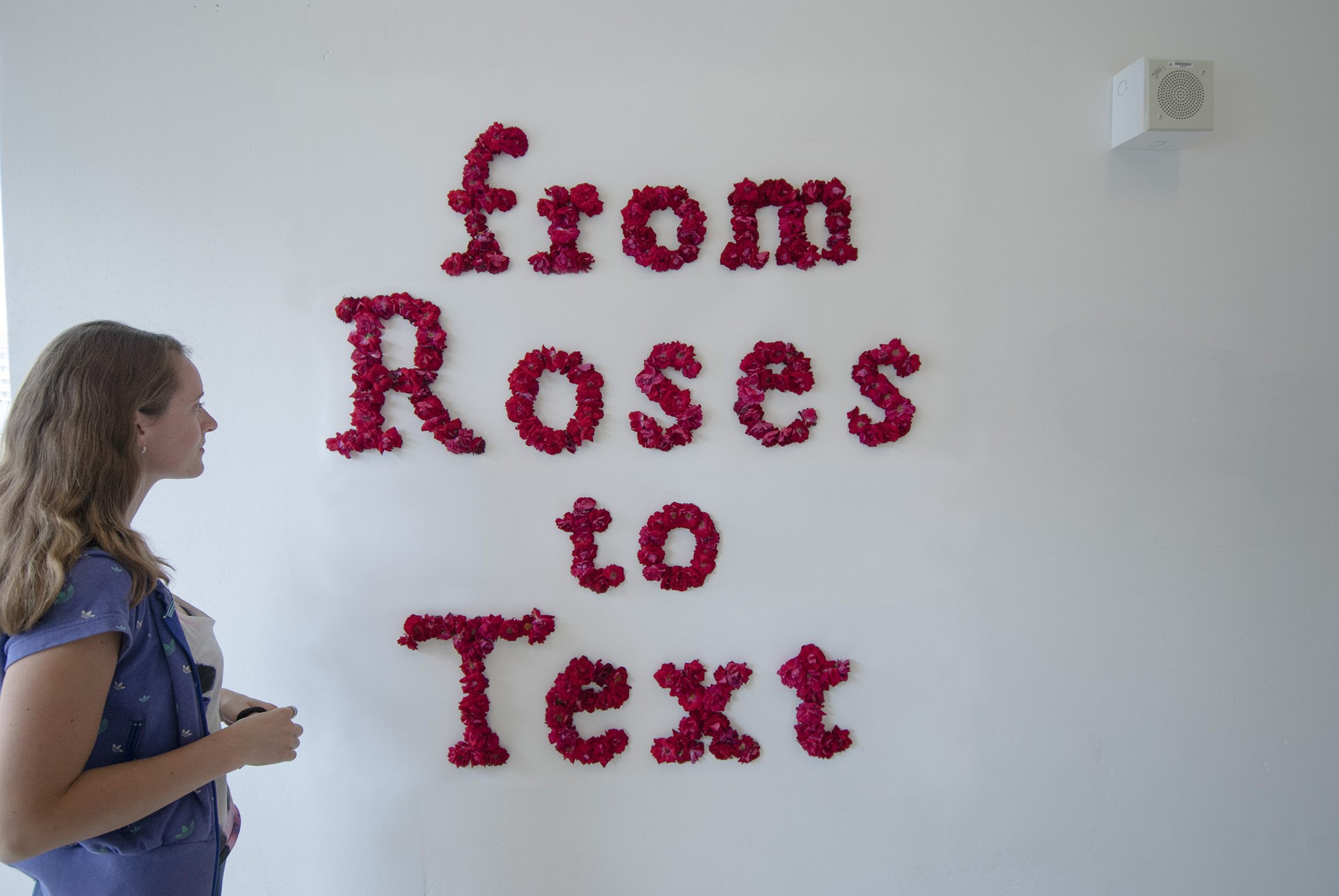
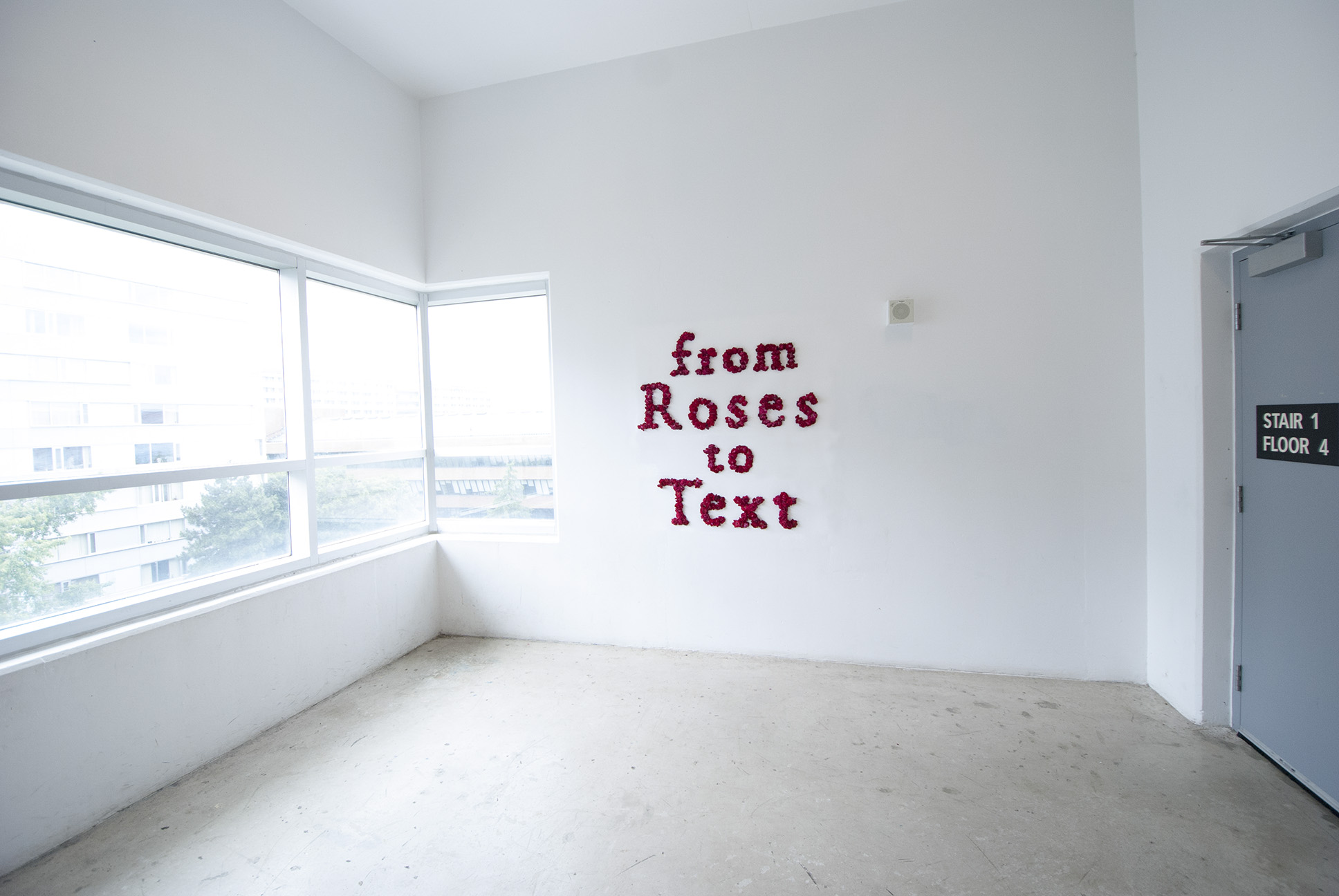
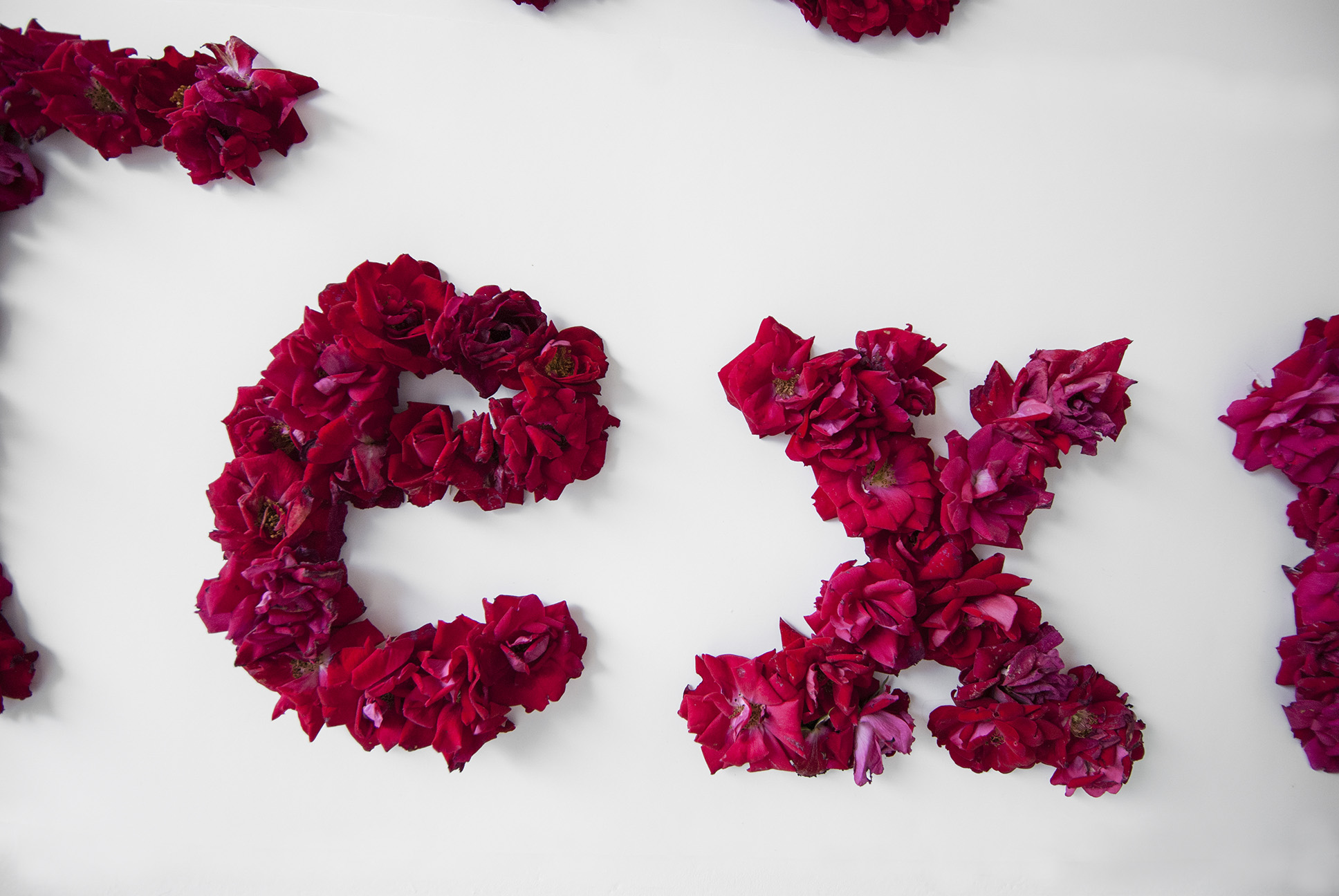
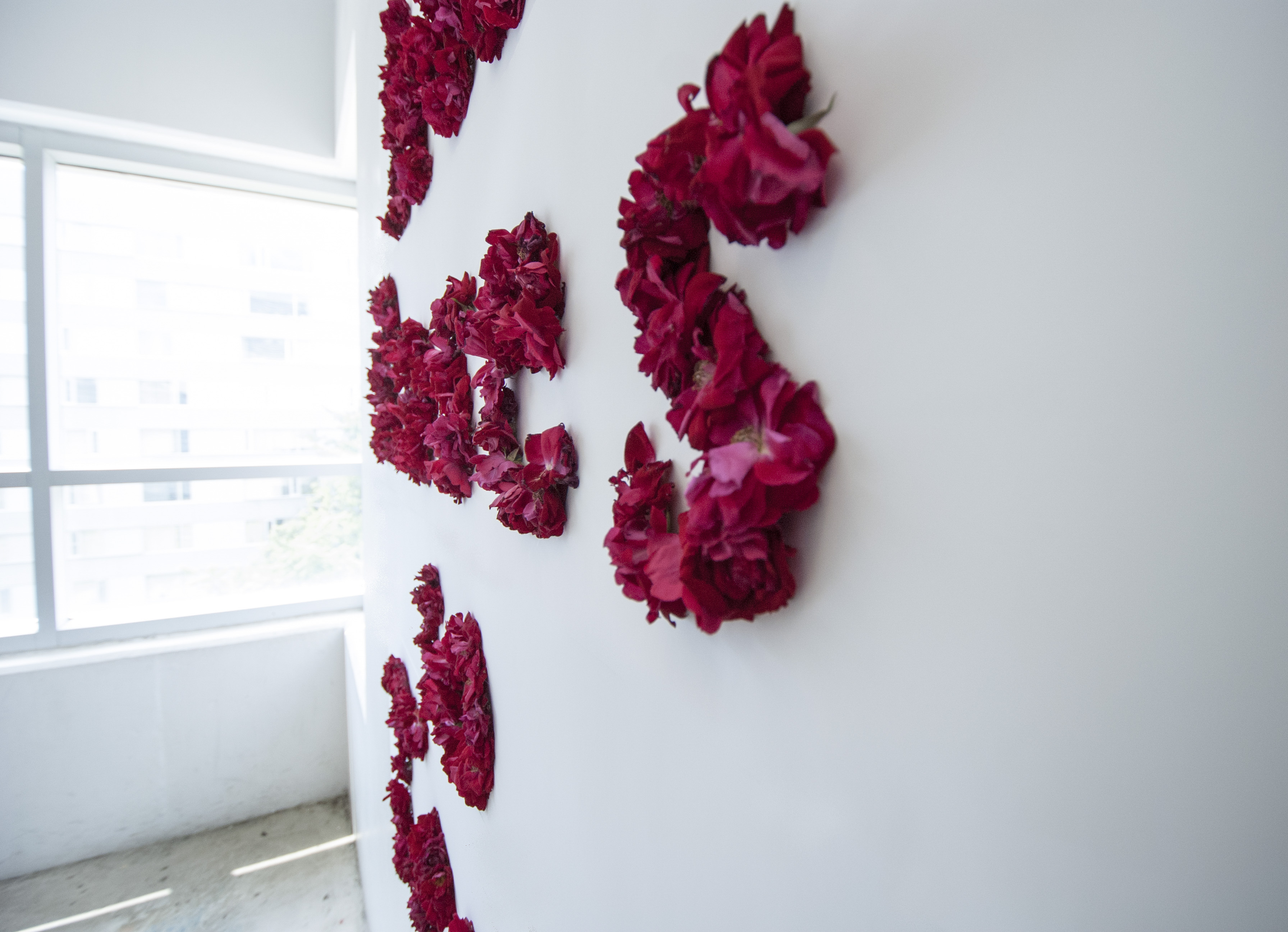


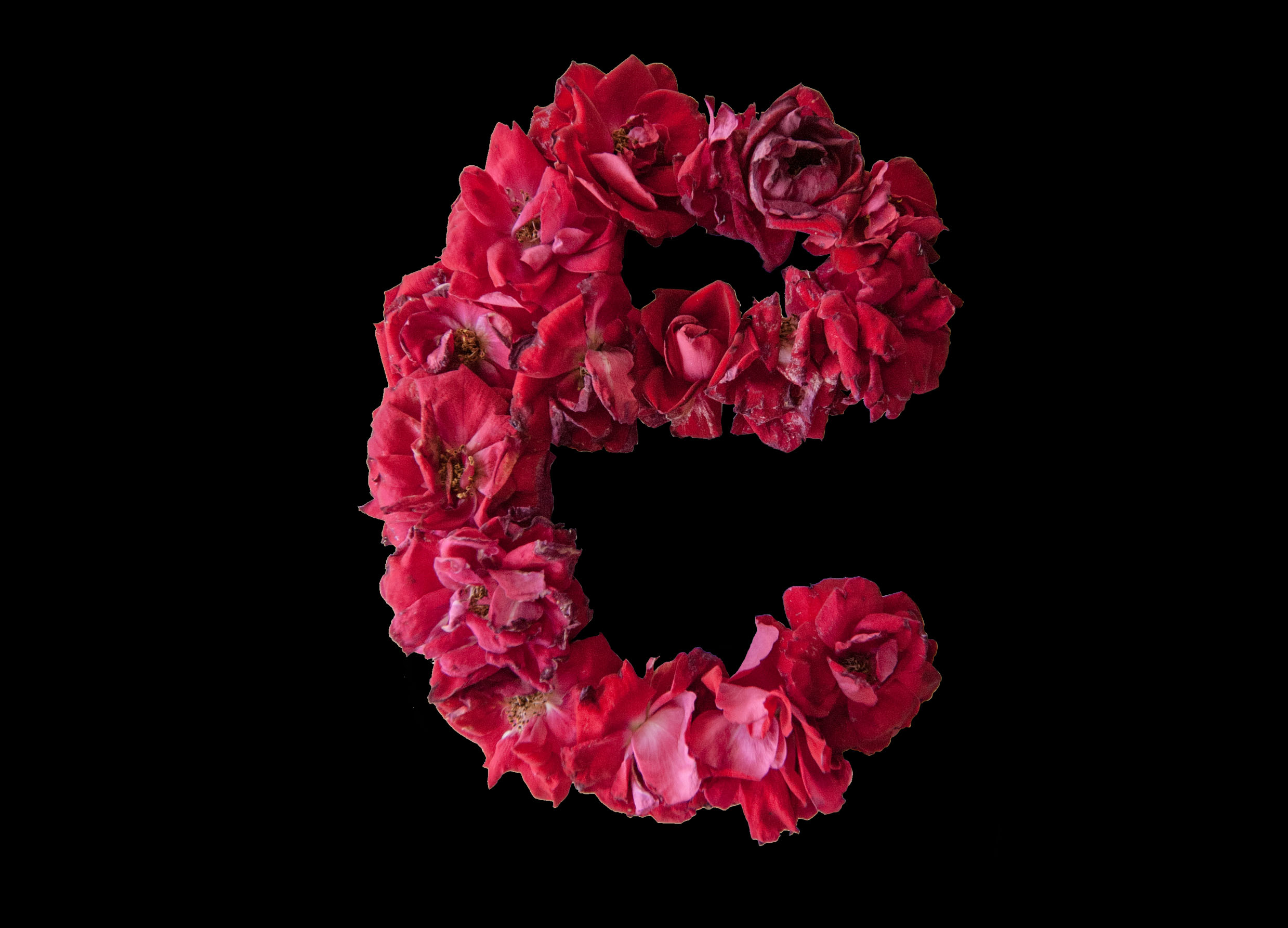

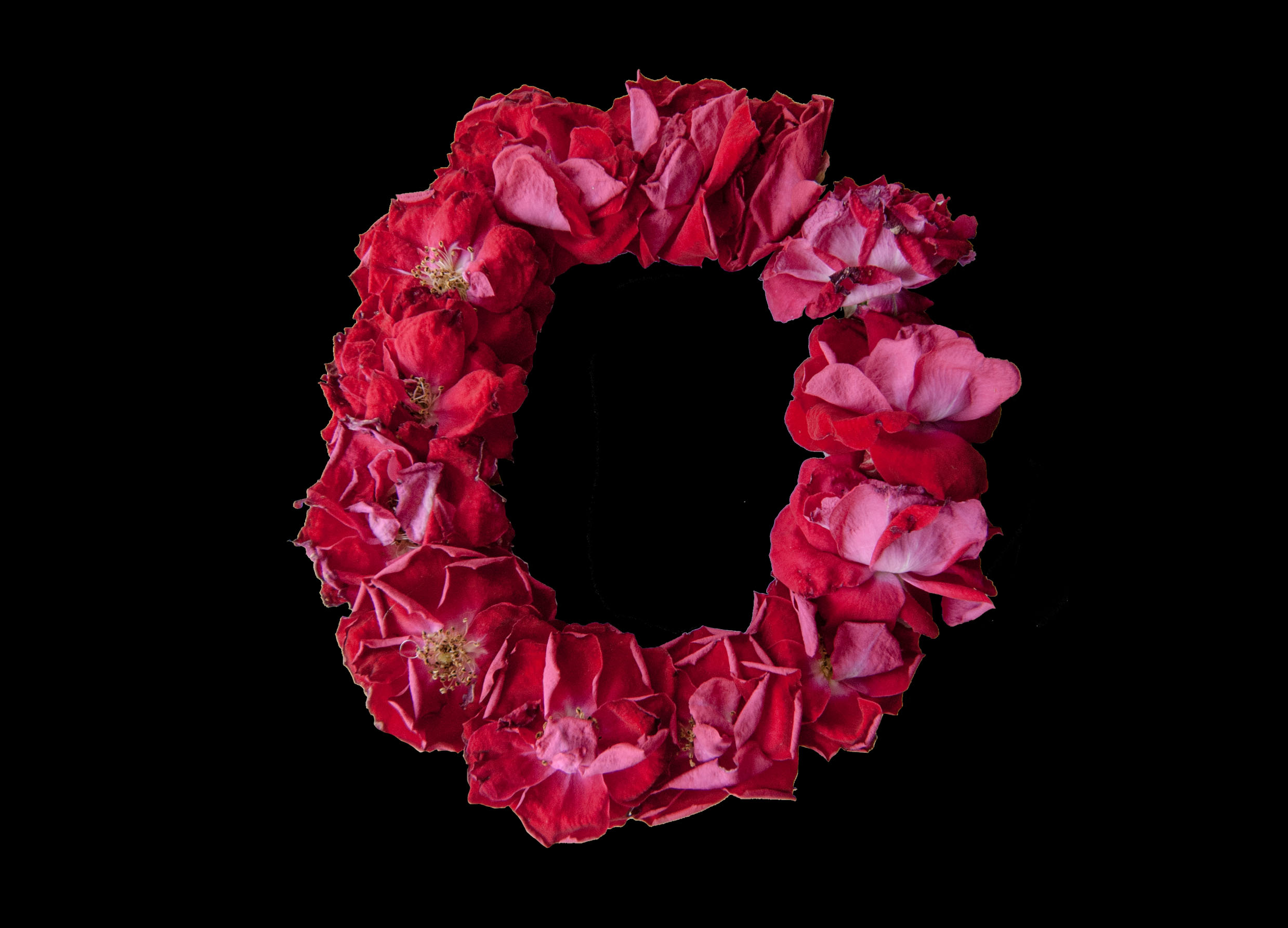
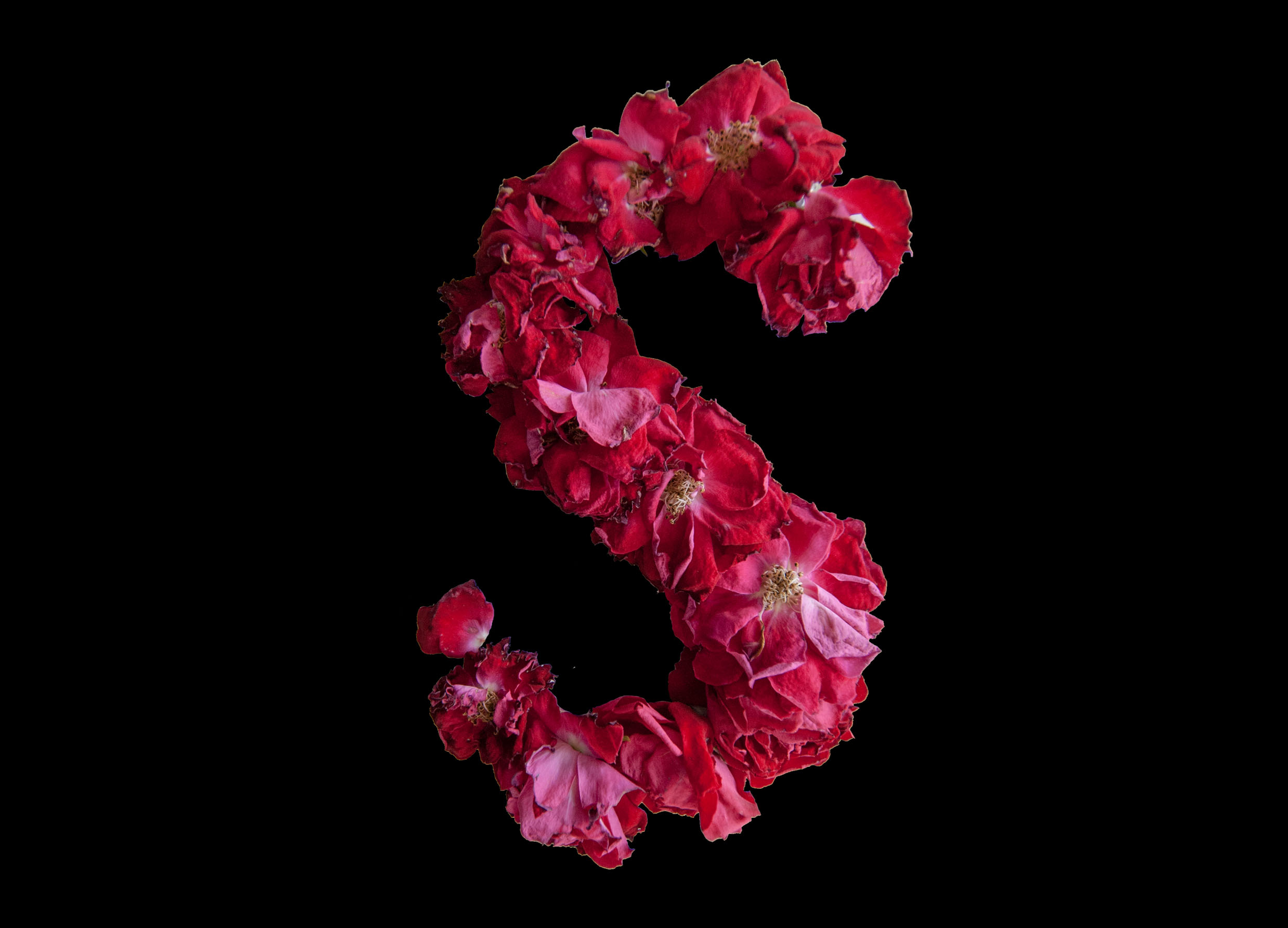
From Roses To Text,
14 – 29 July 2014
Stair 1, Floor 4, TEL Building, York University, Toronto
This typographical installation pays homage to Roland Barthes’s From Text to Work. Discarded roses from apartment front garden were collected, made into letters, and strung into sentences “From Roses to Text” — as a literal denotation to Barthes title. Installed in an underused staircase wall, the roses withered as days fleeted, becoming droopy and faded, one could connote to decay of time and beauty but also of love and the pain often accompanying love. In Emily Bronte’s A Little Budding Rose, the poet compares the rose to love, but to a broken one:
The rose is blasted, withered, blighted,
Its root has felt a worm,
And like a heart beloved and slighted
Failed, faded, shrunk its form.
The dried petals departed from their flower and descended to the ground, just like Bronte described in her poem. What is left through this exhibition are photos of the roses in their letters and words, the experience becoming a text.
< PREVIOUS SHOW
14 – 29 July 2014
Stair 1, Floor 4, TEL Building, York University, Toronto
This typographical installation pays homage to Roland Barthes’s From Text to Work. Discarded roses from apartment front garden were collected, made into letters, and strung into sentences “From Roses to Text” — as a literal denotation to Barthes title. Installed in an underused staircase wall, the roses withered as days fleeted, becoming droopy and faded, one could connote to decay of time and beauty but also of love and the pain often accompanying love. In Emily Bronte’s A Little Budding Rose, the poet compares the rose to love, but to a broken one:
The rose is blasted, withered, blighted,
Its root has felt a worm,
And like a heart beloved and slighted
Failed, faded, shrunk its form.
The dried petals departed from their flower and descended to the ground, just like Bronte described in her poem. What is left through this exhibition are photos of the roses in their letters and words, the experience becoming a text.
< PREVIOUS SHOW